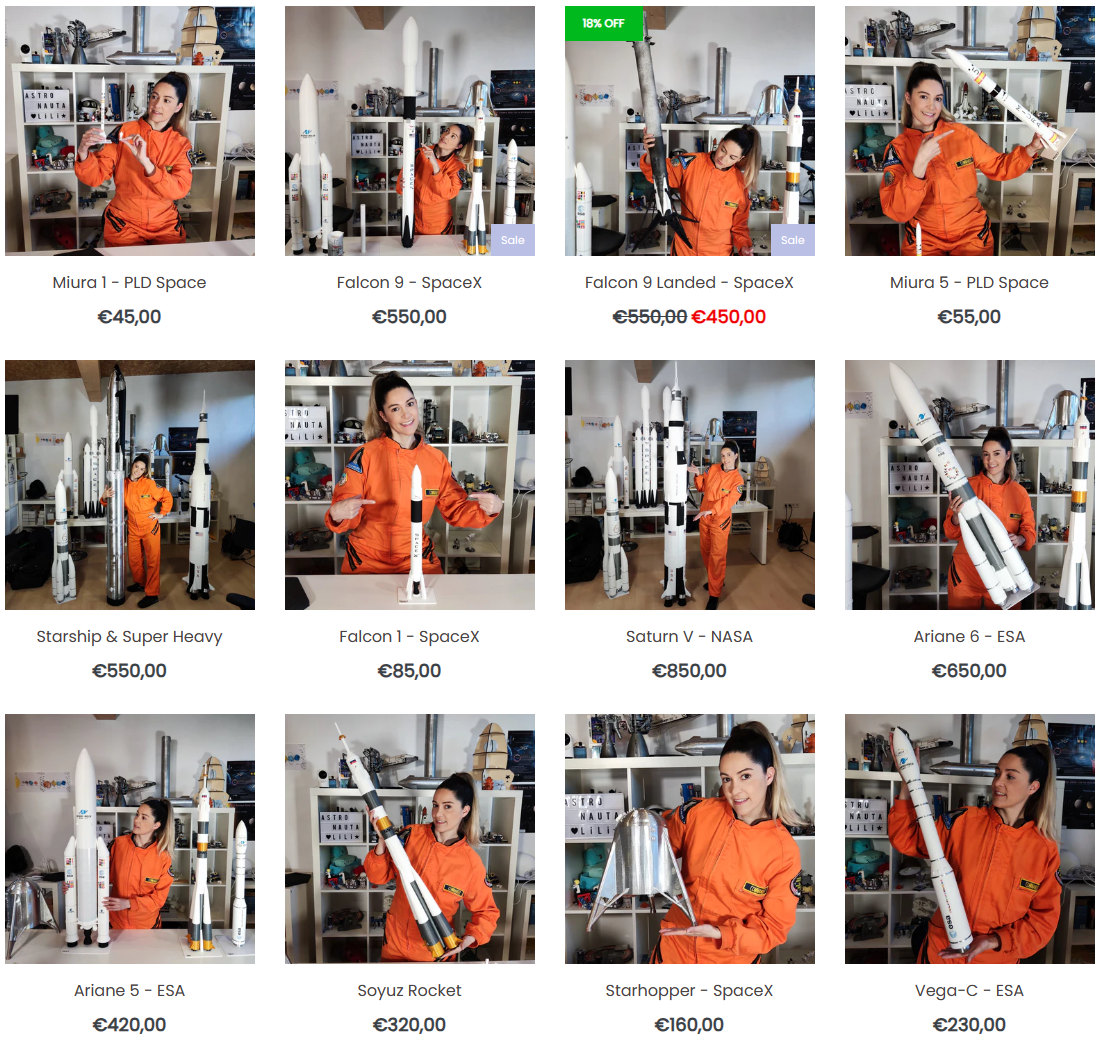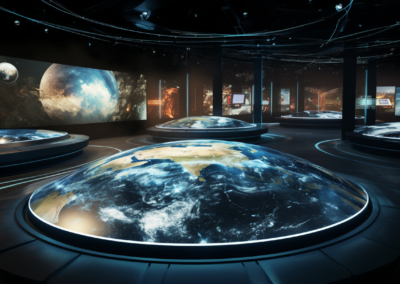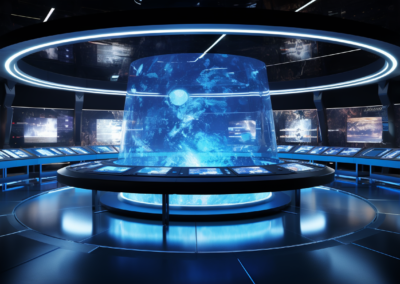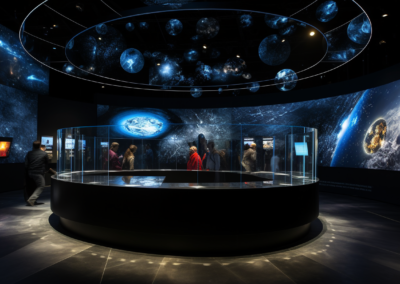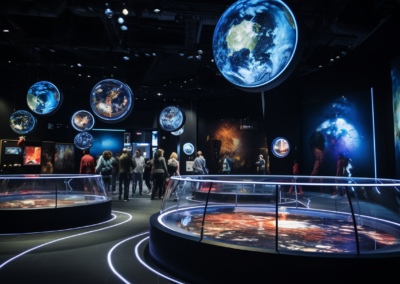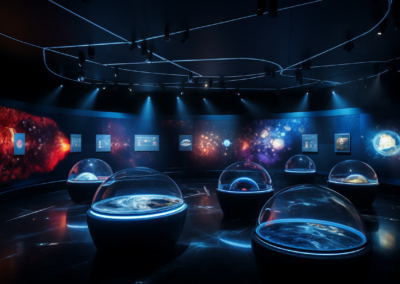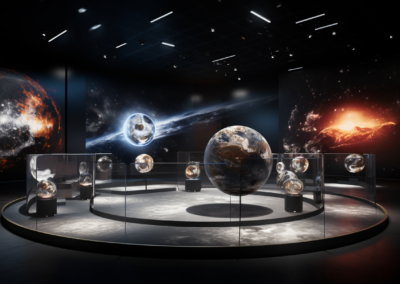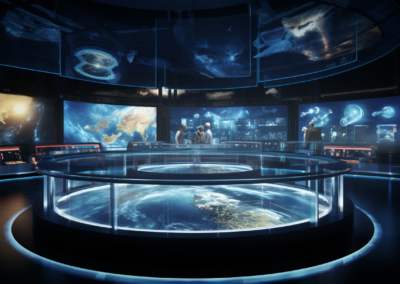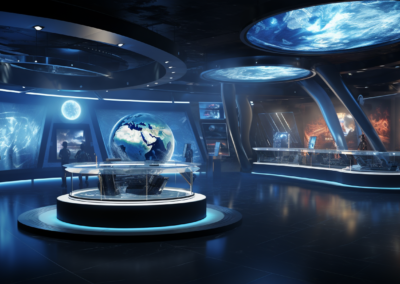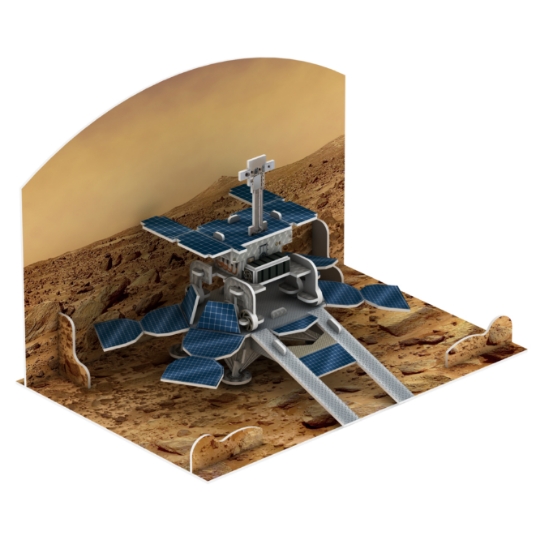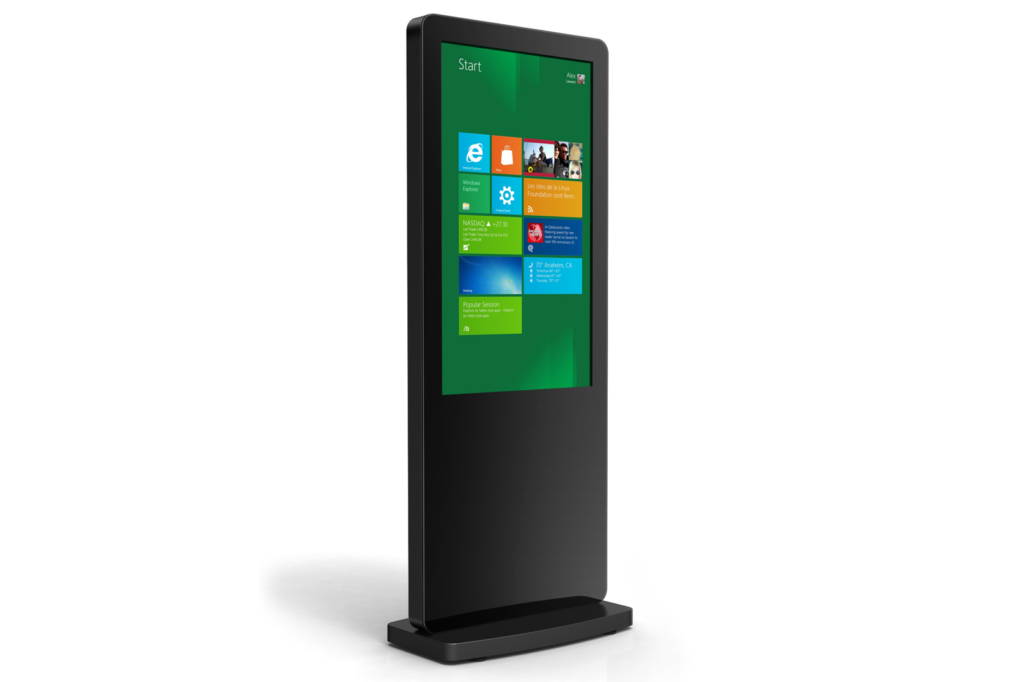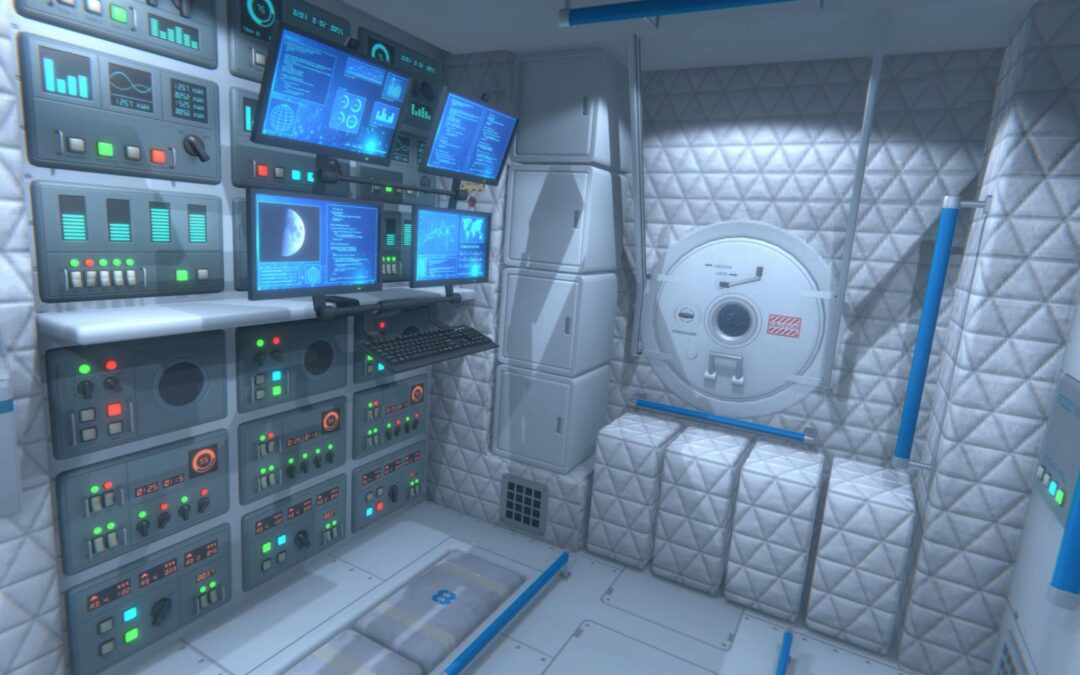
First real simulation Gateway VR for Space Agencies
Nubalo Studios S.L. has created a new virtual reality (VR) experience about the Lunar Gateway Space Station. This experience, named “Exploring Space with VR,” has been specially designed for astronauts working and living on the station, allowing them to immerse themselves more deeply and realistically in space exploration and life in microgravity. Thanks to this, they will be able to complete their intense training, as it is a comprehensive and true-to-life simulation.
With this VR experience, astronauts can undertake virtual missions to the lunar surface, explore outer space, and get a close-up view of other planets and stars. Additionally, it includes a series of games and recreational activities to make their leisure time enjoyable and different from the usual.
Nubalo Studios has worked closely with various international space agencies, that have expressed interest in acquiring the application, to ensure that the experience meets the high standards of quality and safety required in space. Cutting-edge technology and high-resolution graphics have been employed to guarantee a visually stunning and realistic experience.
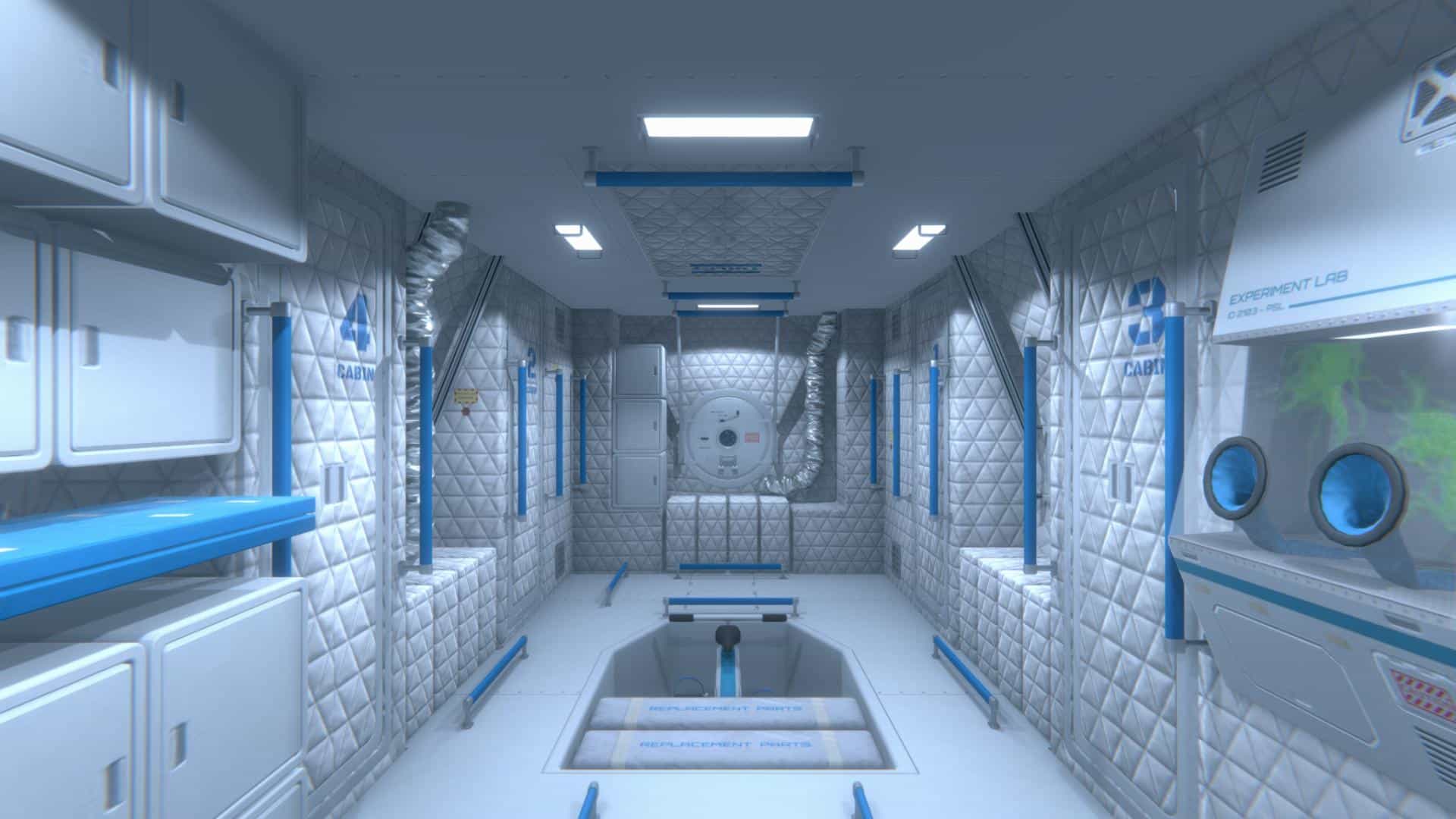
VR experience of the interior of the habitability module of the Gateway Space Station.
This virtual adventure will soon be available to the public, joining other VR experiences and scenarios that the tech team has created, such as Mission Mars VR or Save the Earth Virtual Reality. Like in the past, this initiative aims to bring space science even closer to the public, making observers feel like real astronauts as they get a close look at how work is conducted in space. For more information, visit SpaceRobotics.EU.
In summary, Nubalo Studios’ new VR experience about the Lunar Gateway Space Station is an innovative and entertaining tool that allows users to live and experience space exploration more realistically and enrichingly.
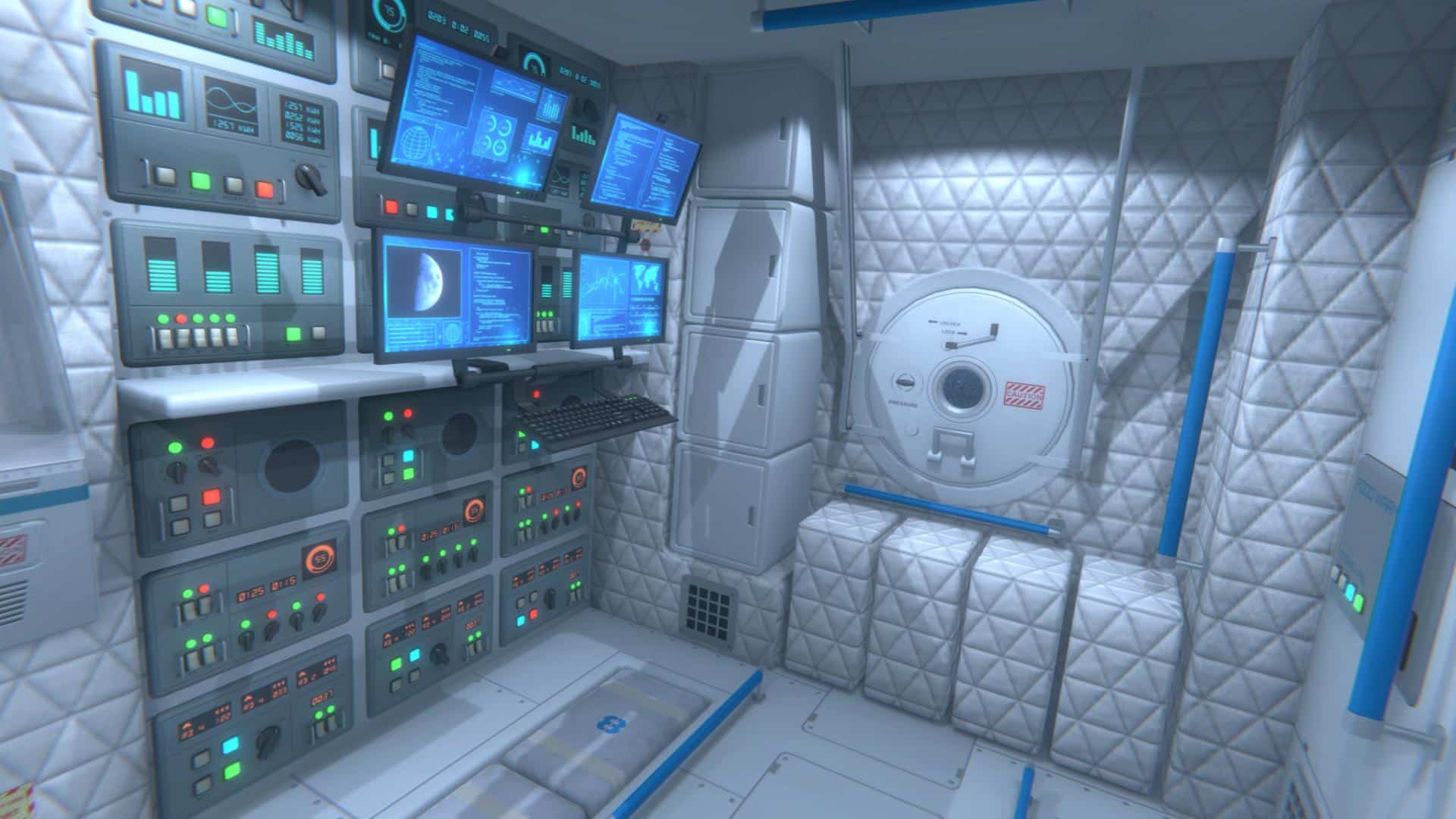
VR experience of the computers on the Gateway Space Station.
Lunar Gateway
The Gateway is a space station intended to orbit the Moon, designed to serve as a support platform for space exploration and future missions to the lunar surface. Its realization is part of the Artemis program, with NASA as the main agency leading the project, but with collaboration from other international space agencies, such as the European Space Agency (ESA) and the Japan Aerospace Exploration Agency (JAXA). Thanks to this collaboration between countries, the project is comprehensive and ambitious, playing a key role in the future of space sciences.
The space station will consist of various modules with different functions. One of these modules will provide accommodation and life support systems for astronauts working and living on board (HALO). Another module will be dedicated to scientific research, equipped with laboratories and research facilities (GUM). Finally, the station will have a propulsion and energy module to move and maintain its orbit around the Moon (PPE), which will also enable communications and navigation to maintain contact between the lunar space station and Earth, as well as with other spacecrafts.
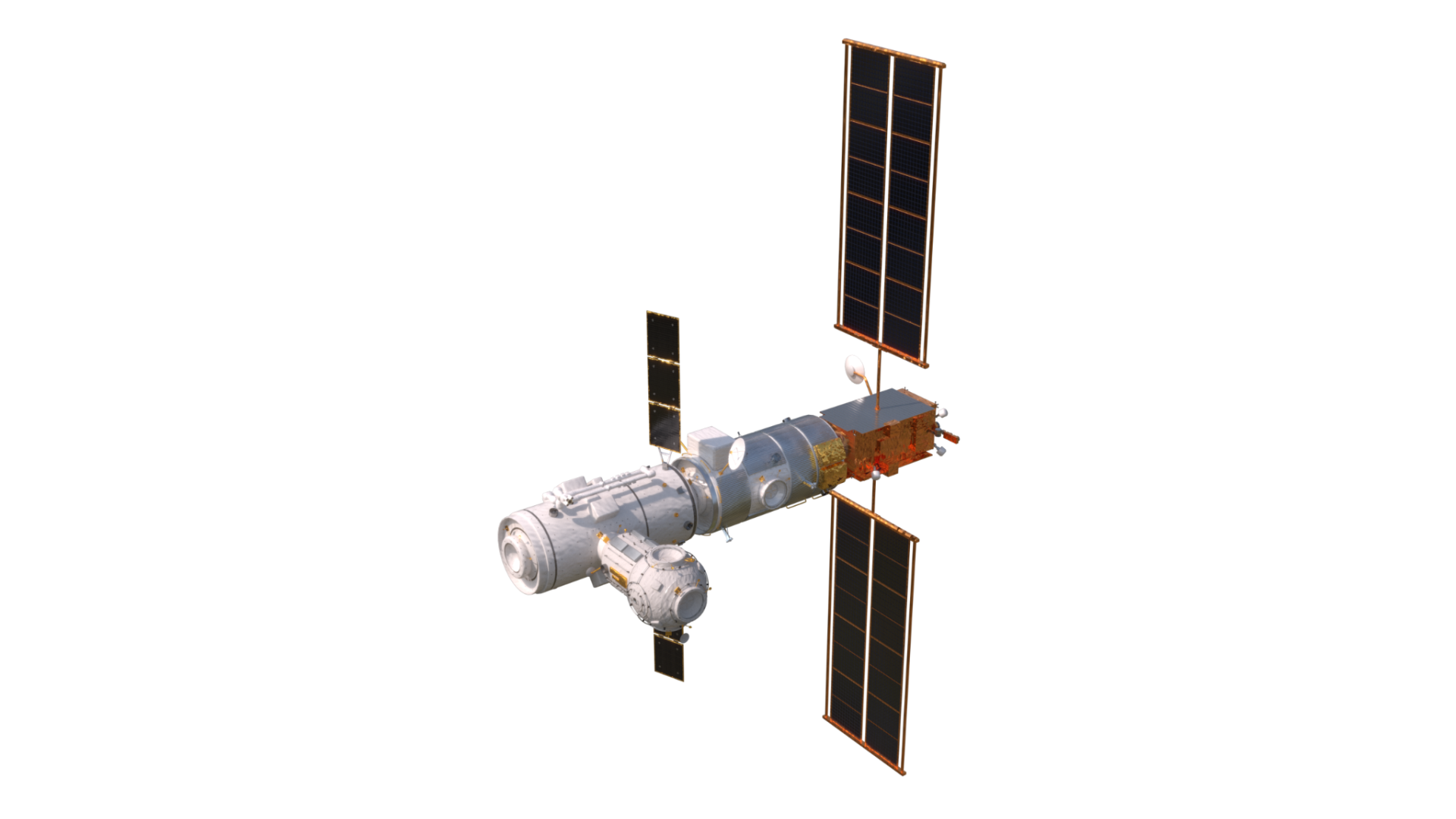
Recreation of the Lunar Gateway Space Station.
The main objective of the Gateway is to provide a safe and comfortable platform for astronauts to carry out missions on the lunar surface and in nearby space. The station is also expected to serve as a base of operations for future explorations beyond the Moon, such as missions to Mars.
The construction of the station is a long-term project, expected to become operational around the year 2025. However, even when the station reaches lunar orbit in the coming years, some modules will still need to be added, and continuous testing and adjustments will be made to ensure its proper functioning. Once it reaches full operational capacity, the Gateway is expected to become a vital tool for lunar exploration and the advancement of space science and technology.
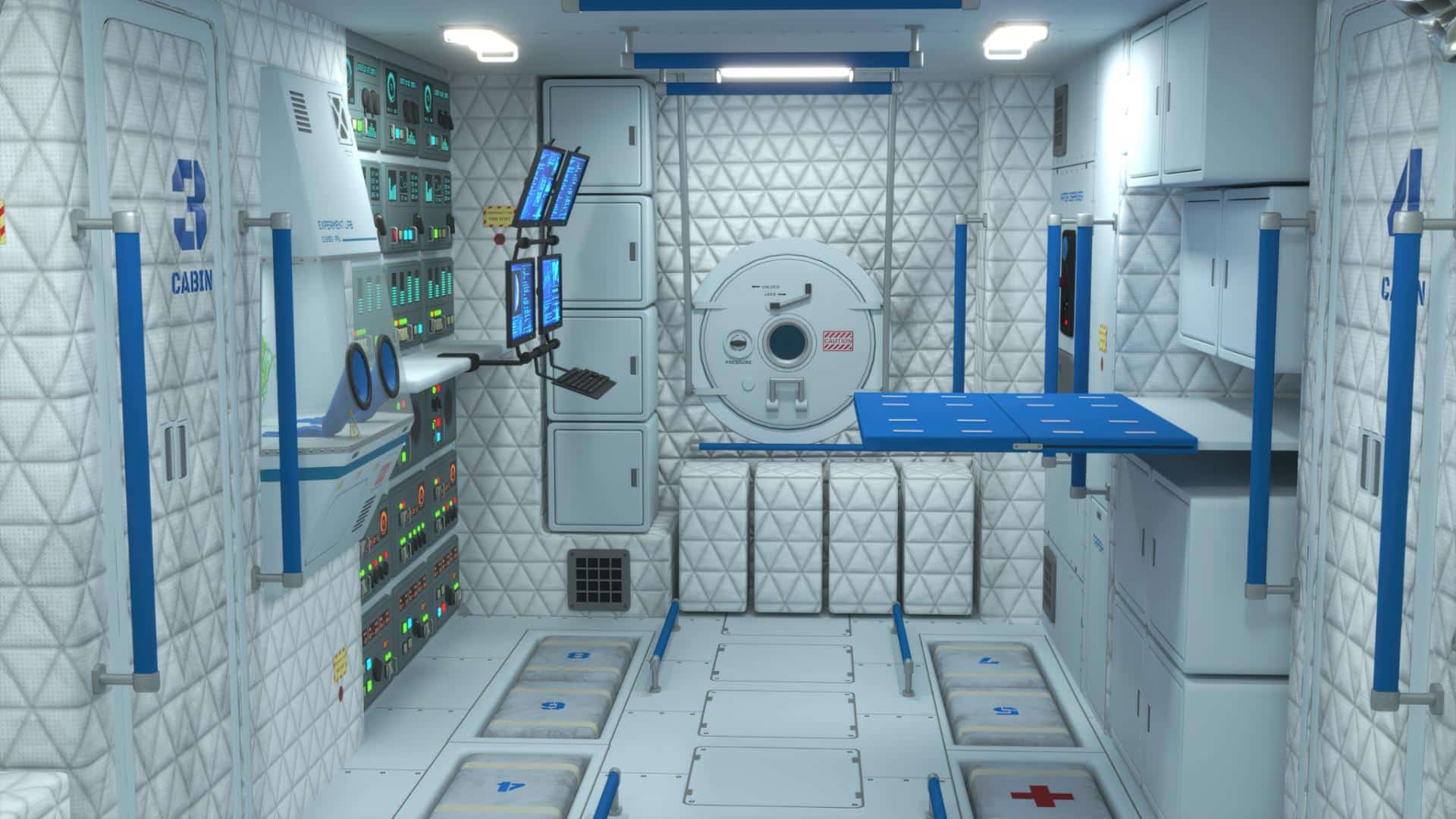
VR experience of the interior of the main module of the Gateway Space Station.
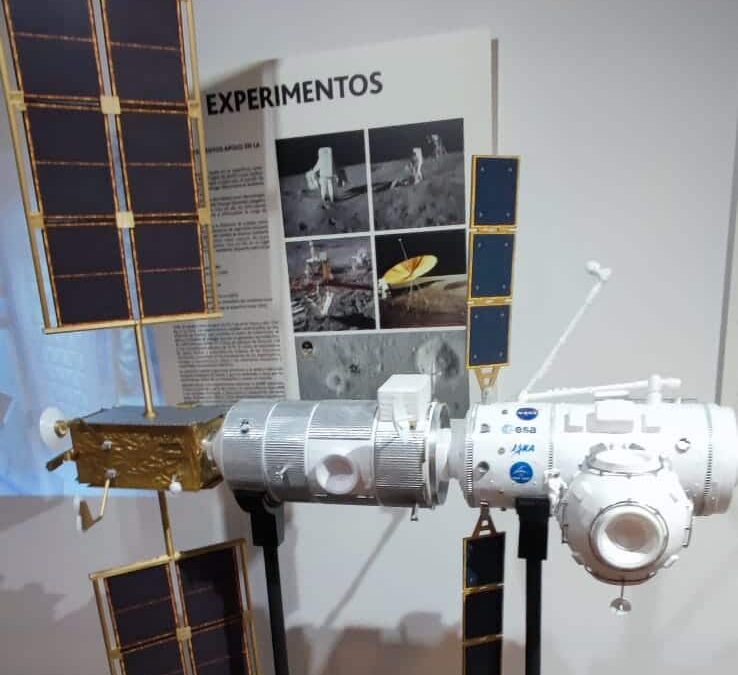
Exhibition about the Gateway at the Lunar Museum of Fresnedillas de la Oliva
The Lunar Museum of Fresnedillas de la Oliva has premiered its new exhibition on a scale model of the Gateway Space Station, the first station in orbit around the Moon.
It is a fundamental component of the Artemis program, born from an international collaboration led by NASA, and will play a crucial role in the future of space exploration. The Gateway will serve as a refuge and will have the necessary technology to provide a workspace for astronauts who, among other missions, will return to the lunar surface or travel to Mars in the coming years. It will consist of various modules with different functions: the first two to be sent and operational will be the Power and Propulsion Element (PPE) and the Habitation and Logistics Outpost (HALO), with the possibility of attaching additional elements later.
Recently, in the December number of the Astronomy magazine, an article has been published that reviews the history of space, from the early observations of the Moon, the origin of telescopes, or the Apollo missions, and emphasizes the development of the Gateway and its various modules. With the Artemis mission, a milestone is expected that is mobilizing all space agencies, leading to a new space race over the next decade.
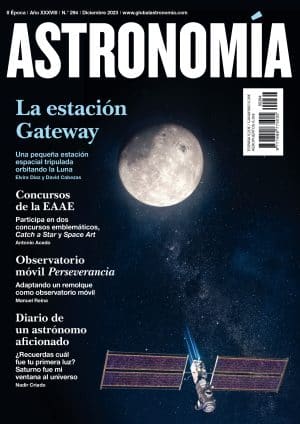
Cover of the December 2023 number of the Astronomy magazine.
A meticulously designed 1:20 scale model, created by the SpaceRobotics.EU team, is already at the lunar museum to bring this reality closer to the public. Thanks to it, attendees can visualize and better understand the future of space exploration. The exhibition also includes a detailed model of the Orion spacecraft, which will serve as the vehicle for astronauts in upcoming Artemis program missions. As a complement, small videos of the interior and exterior of the lunar Space Station, created in Spain by the SpaceRobotics.EU team for the virtual reality experience, are also included. Additionally, visitors can explore a scale model exhibition of key rockets in space history, including the Falcon Heavy, which will be responsible for carrying the Gateway into space.
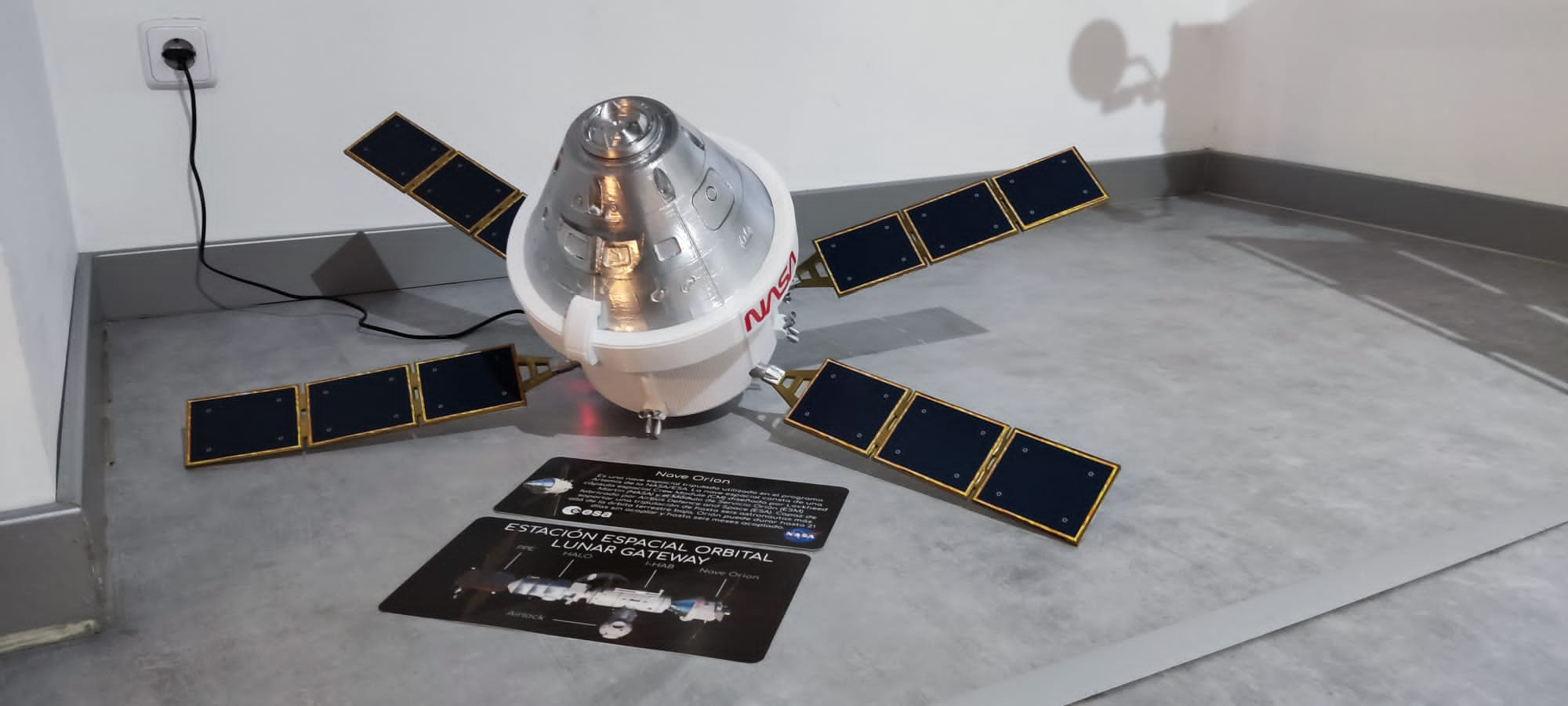
1:20 scale model of the Orion spacecraft at the Lunar Museum of Fresnedillas de la Oliva.
Those who are interested can request multimedia videos to enhance the learning experience and delve into scientific and technological details. They can also purchase any pre-designed or customized model, all through the contact form available at www.spaceshop.store.
The Lunar Museum offers this unique opportunity because we want to bring the excitement and wonders of space closer to our visitors, seeing the Gateway Space Station as a testament to international collaboration and the future of lunar and space exploration. We are confident that the new exhibition will light up the curiosity and scientific interests of the younger audience, who may become part of this history in the coming years.
The museum is open from Monday to Friday with guided tours and school workshops, and during the weekend for the public. Come and visit them!
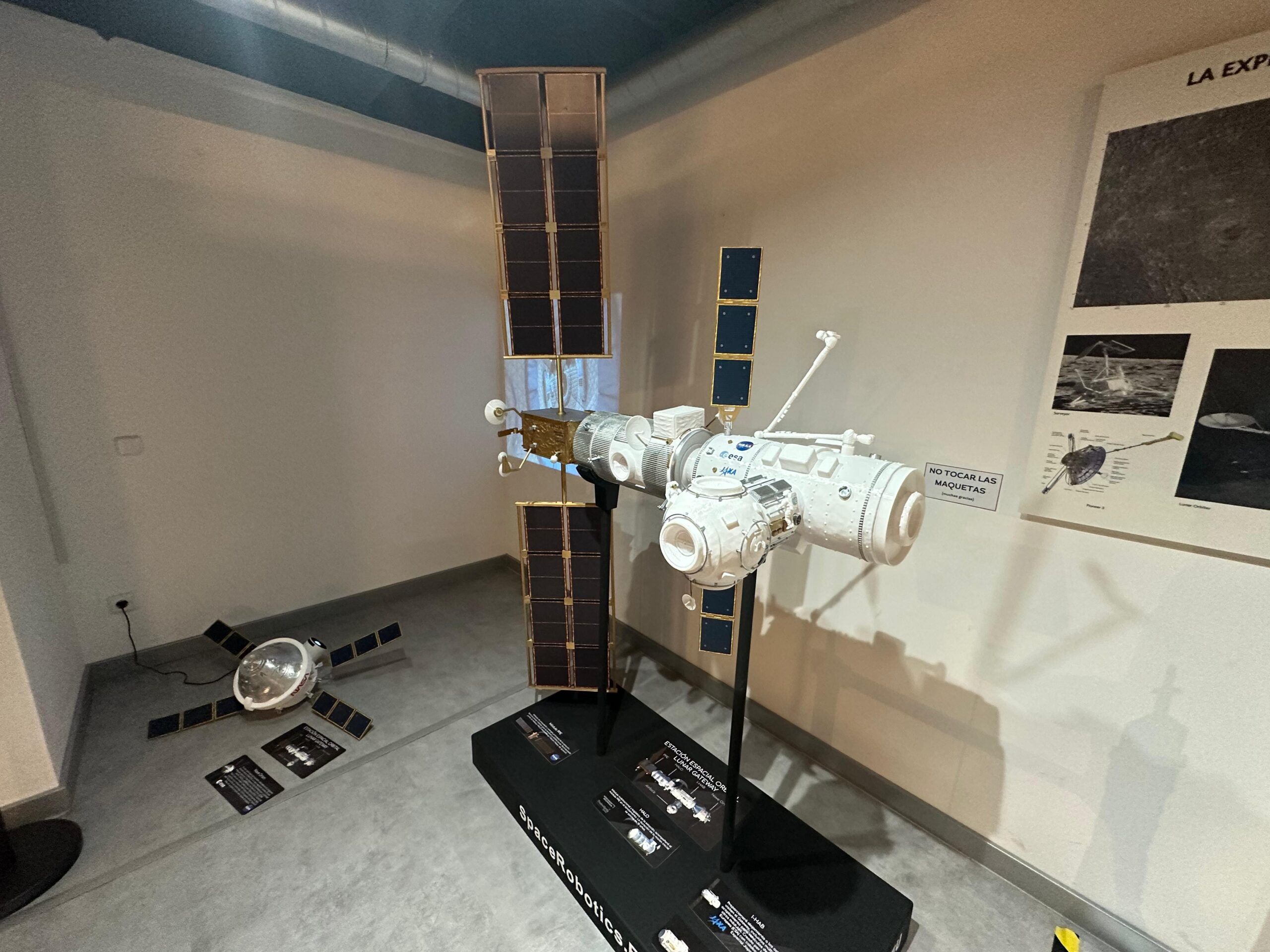
Scale model exhibition at the Lunar Museum of Fresnedillas de la Oliva: the Orion spacecraft and the Gateway Space Station.
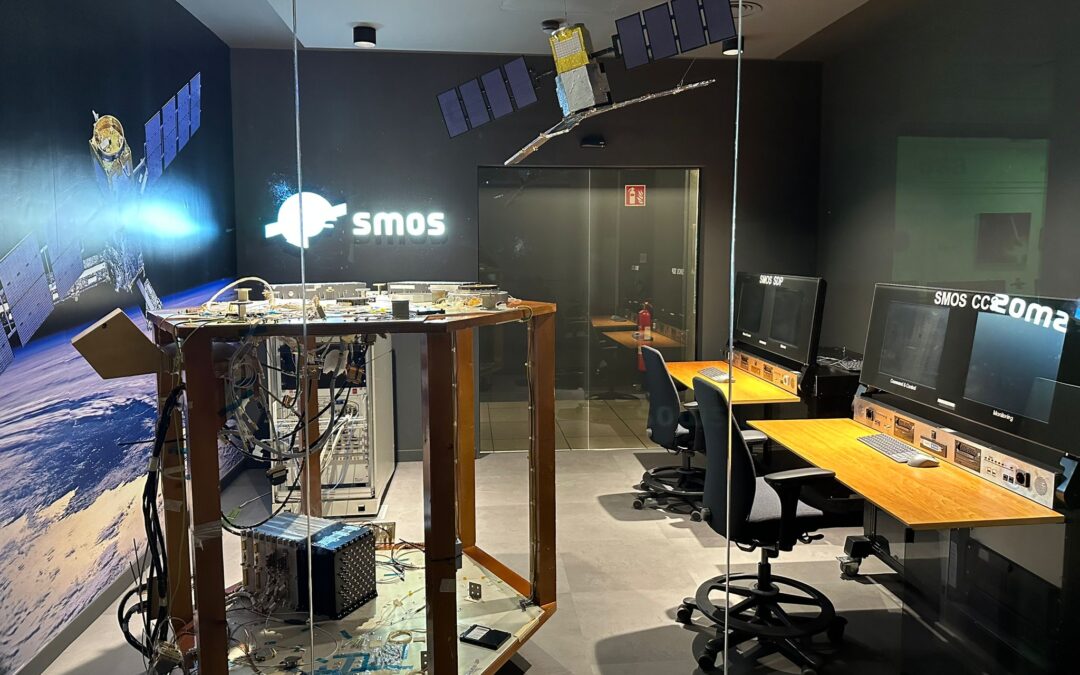
SMOS scaled mockup for the European Space Agency
The European Space Agency (ESA) has once again enlisted the collaboration of the specialized team at Nubalo Studios to design and manufacture a detailed 1:6 scale model of the SMOS satellite.
The Soil Moisture and Ocean Salinity (SMOS) satellite, launched in 2009, aims to study terrestrial moisture and ocean salinity. Additionally, it records crucial data on ice and snow accumulation, providing valuable information to enhance predictions of extreme weather conditions.
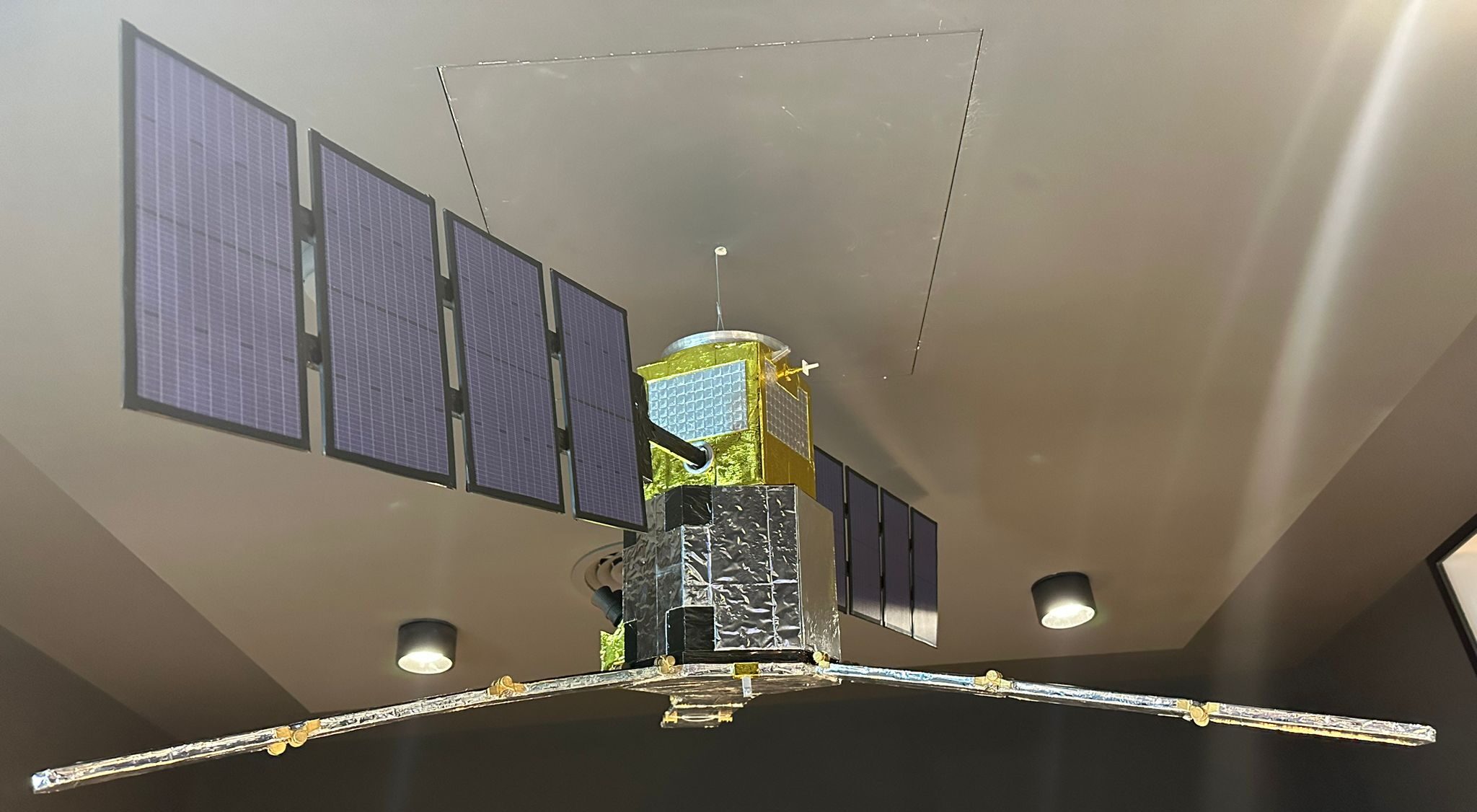
Your content goes here. Edit or remove this text inline or in the module Content settings. You can also style every aspect of this content in the module Design settings and even apply custom CSS to this text in the module Advanced settings.
The scale replica serves as an impressive visual representation of the satellite and it is suspended from the ceiling in the SMOS control room at ESAC. This room plays a crucial role in the command testing phase before instructions are sent to the satellite in orbit, as they also have a functional replica to work with on Earth. ESA uses this mission duplicate to ensure the precision and safety of instructions sent to SMOS.
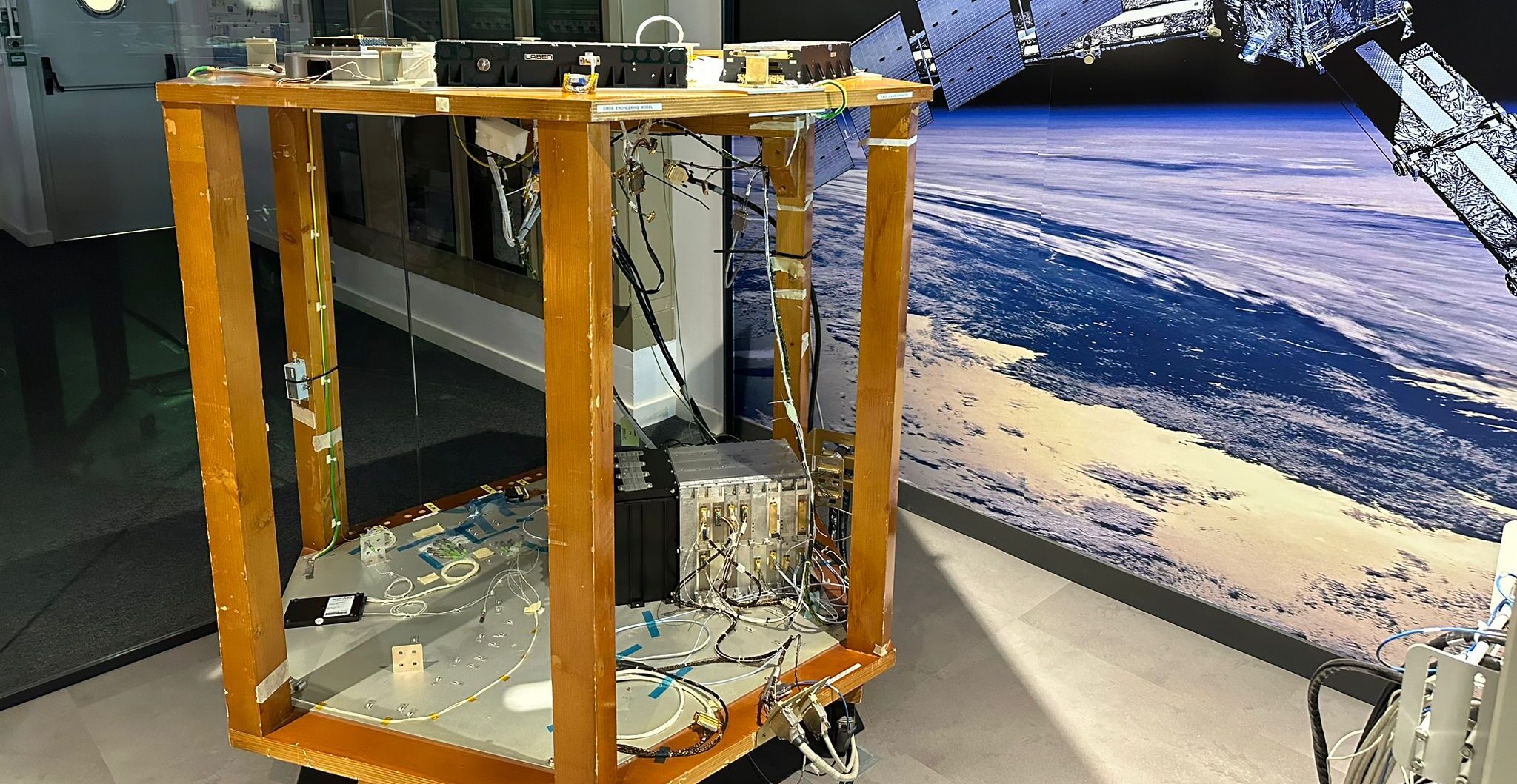
This project is just one of the many examples of extraordinary models created by the Nubalo Studios team. In addition to the SMOS model, their portfolio includes other space missions; a replica of the Gateway space station, recently exhibited at the Lunar Museum in Fresnedillas de la Oliva, with additional modules to be added soon; as well as models of the most significant rockets in the history of space exploration, also on display at the Lunar Museum.
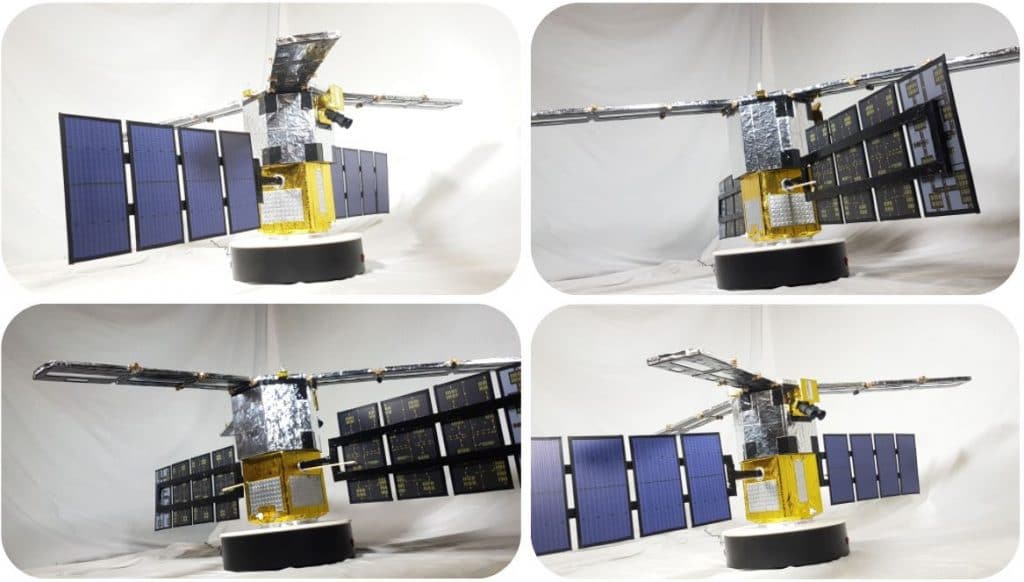
Nubalo also offers the possibility to commission scale models, allowing the fascination with space exploration to reach a broader audience and the public. On the Space Shop website, enthusiasts can explore and, if desired, request their own scaled space mission through the contact form to have a unique and detailed representation of the technological marvel that is space exploration, with various design options, including all kinds of details and customizations.
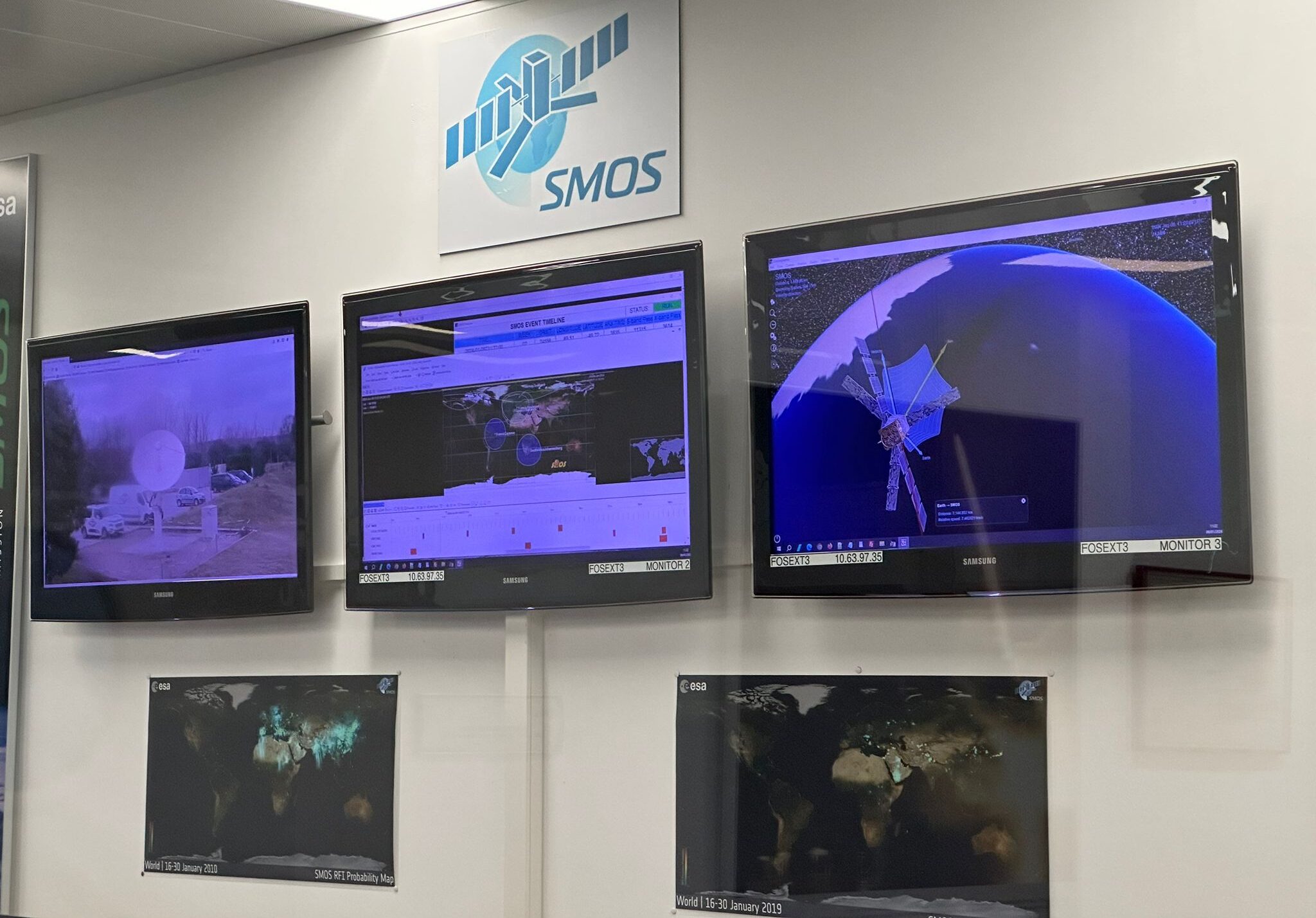
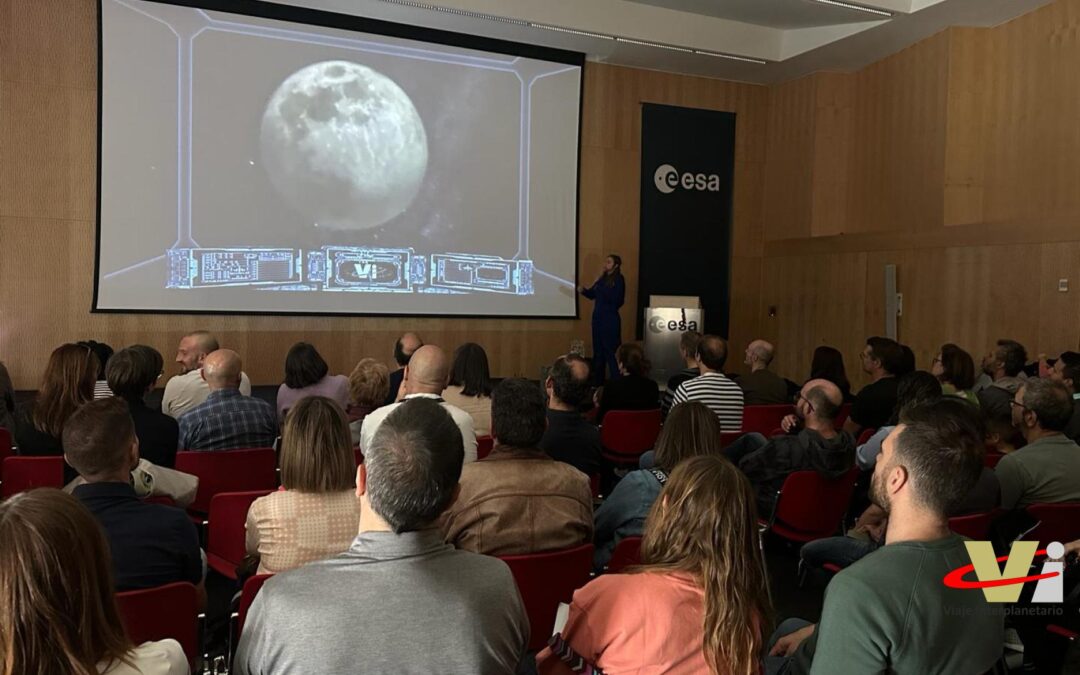
ESA Open Day 2023
SpaceRobotics.EU has once again participated in the celebration of the ESA Open Day at the facilities of the European Space Astronomy Centre (ESAC) in Villafranca del Castillo. In collaboration with the outreach team led by the space communicator Astronaut LiLi, we have brought science and space exploration closer to the public in an exciting and educational way. Our team dazzled visitors with a variety of activities and experiences designed to transport attendees beyond Earth and discover the wonders of space. The virtual tour allows everyone to revisit online the facilities of ESAC and the various experiences carried out.
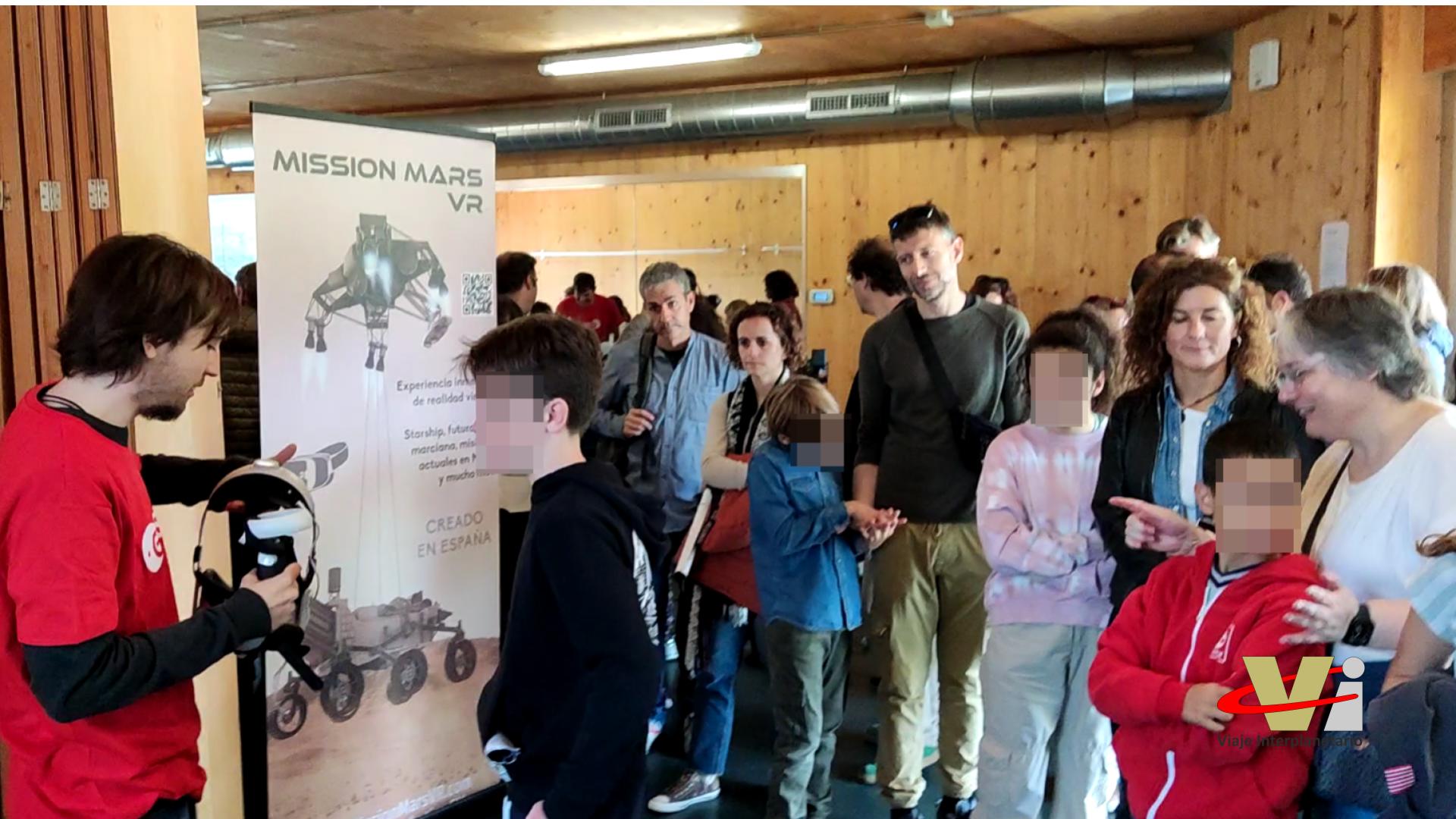
Experience with VR glasses at the ESA Open Day.
The presentation of the 1:2 scale model of the Rosalind Franklin rover stood out as the highlight of the event. This rover, planned to be sent to Mars in the coming years with the exciting mission of searching for signs of life, became the focal point of interest for both knowledge-hungry young and adults fascinated by space exploration. Visitors had the opportunity to delve into the mission’s details, generating great enthusiasm and curiosity among attendees who listened to the explanations with fully attention. The meticulously designed and crafted model by SpaceRobotics.EU captivated the audience by showcasing its ability to move and the advanced cameras it uses to explore and recognize the Martian environment.
The team offers robotic services for various types of vehicles, catering to diverse events. They are also open to custom orders, providing the opportunity to bring robotic innovation to anyone interested through the contact form available on the official website. This unique and cutting-edge approach promises to push new boundaries at the intersection of space technology and active public engagement.
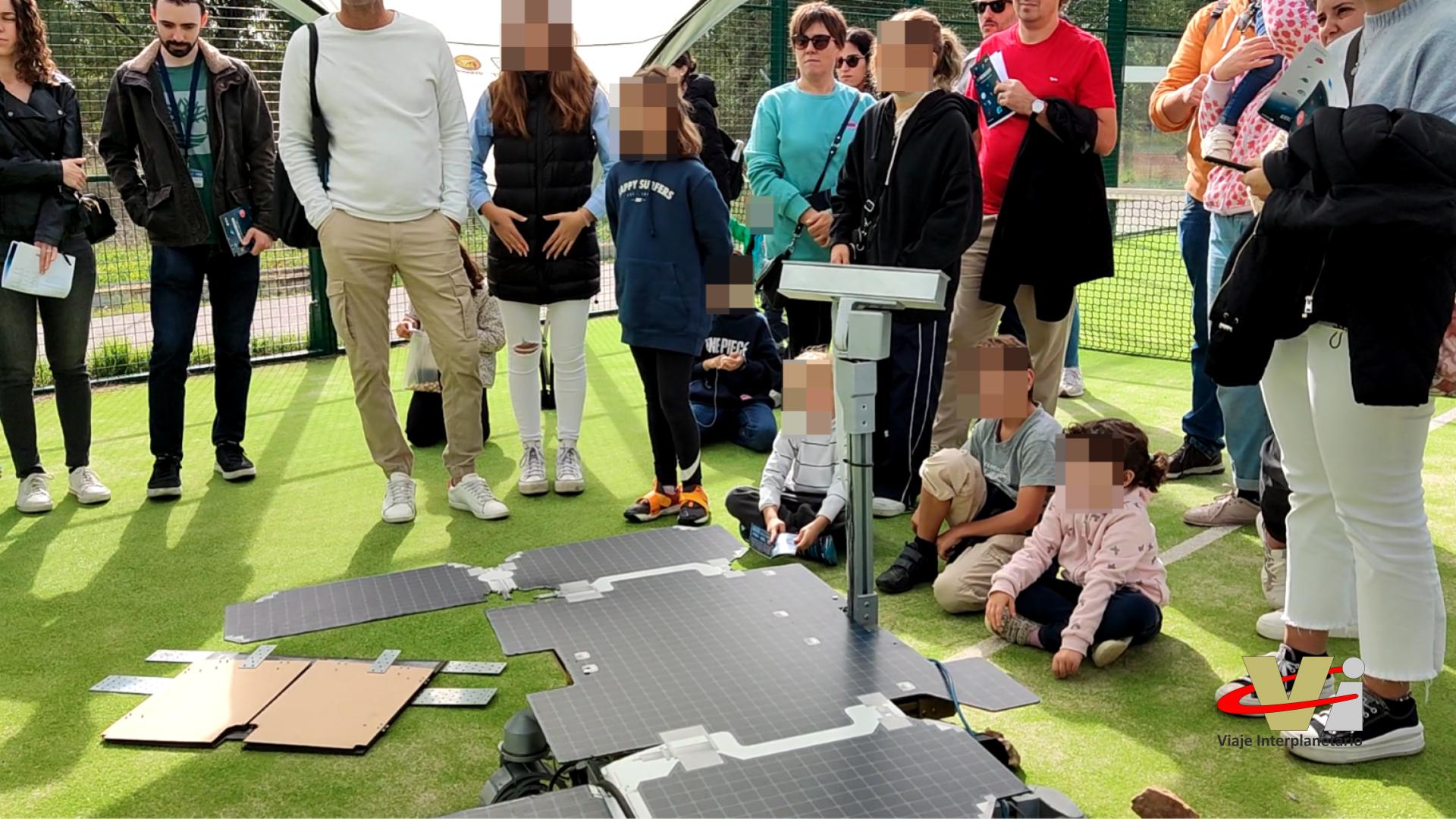
1:2 scale model of the Rosalind Franklin rover at the ESA Open Day.
In an effort to incorporate immersive space experiences, SpaceRobotics.EU enhanced attendee participation at the event by utilizing virtual reality (VR) goggles. These goggles allowed visitors to fully immerse themselves in simulated environments of Mars and the International Space Station (ISS), providing them with the incredible sensation of walking on the surface of the Red Planet and floating in the microgravity experienced on the ISS. The meticulous design of these scenarios by SpaceRobotics.EU not only aims to bring space closer to the public from the comfort of their homes but also serves as a valuable training resource for astronauts preparing for missions with various space agencies.
In addition to these VR experiences, the SpaceRobotics.EU team has consistently demonstrated its versatility throughout its journey by creating a wide variety of interactive content, including games, experiences, maps, videos, and applications related to space exploration. All this innovative and educational material can be requested through the contact form, providing interested individuals with the opportunity to explore the cosmos in a unique way.
One of the most exciting moments of the event was the chance to pose in front of a chroma key background that recreated the ESA‘s Columbus module on the ISS. Attendees experienced the unique opportunity to take photographs as authentic astronauts in space, creating unforgettable memories and solidifying SpaceRobotics.EU‘s prominent presence at the forefront of space outreach and the creation of unique experiences.
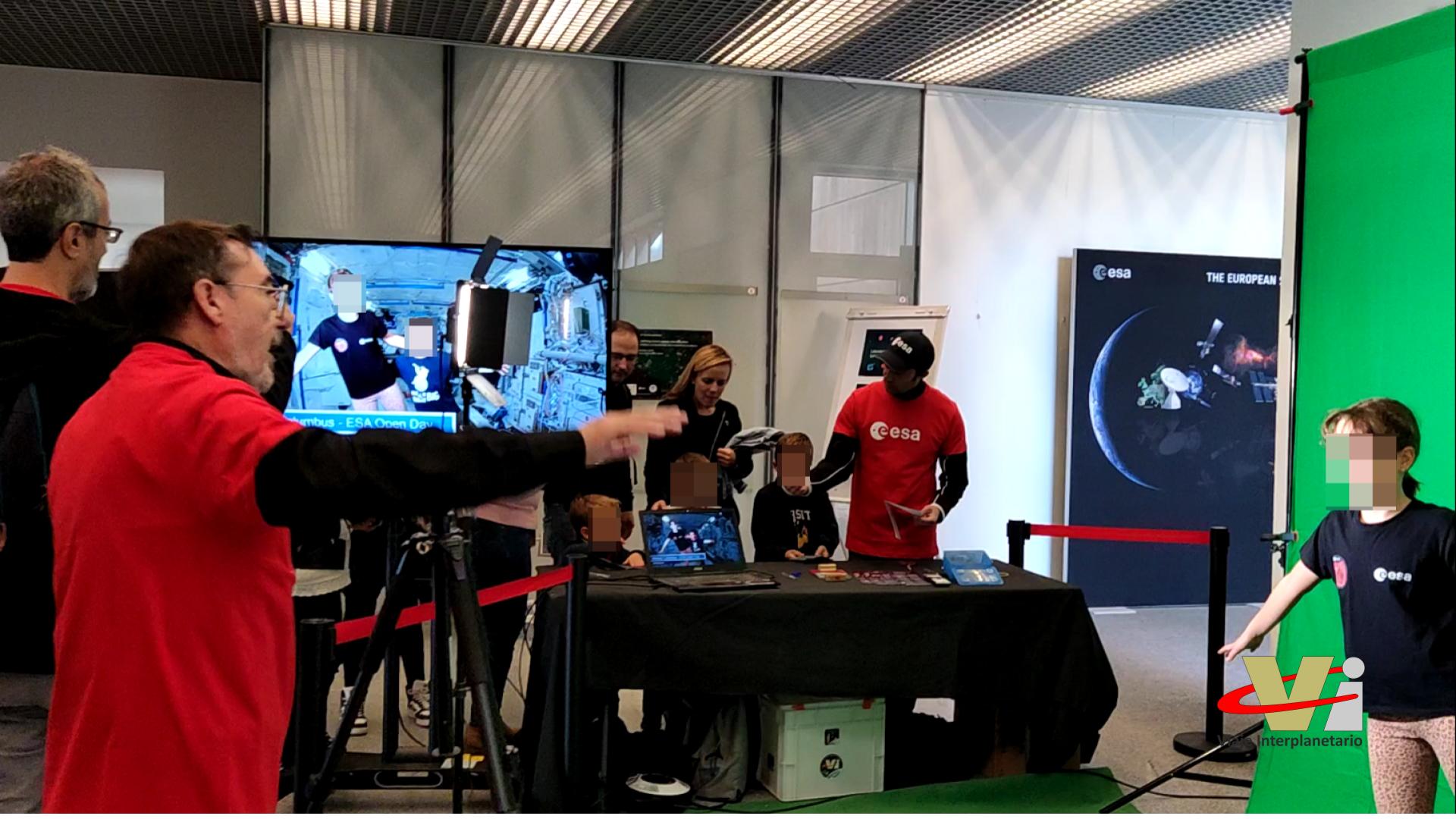
Chroma of the ISS with the ESA Columbus module at the ESA Open Day.
Astronaut LiLi’s team conducted two different workshops, transforming families into space engineers and authentic astronauts. These activities fostered teamwork and ignited interest in science, technology, and space exploration among future scientists. Leveraging cutting-edge technology provided by SpaceRobotics.EU, the workshops facilitated the understanding of scientific concepts and truly transported participants to inhospitable places where they could deeply learn about space in a more realistic and visual manner. Additionally, the youngsters were able to take home a personalized diploma and an augmented reality (AR) poster that operates with the free NubaloAR app for Android or iOS, and it also works with the free poster exhibition available at salaverlasestrellas.com.
SpaceRobotics.EU takes pride in having collaborated in each of these ESAC activities, providing the technology and innovation that make each experience unique. In summary, the ESA Open Day was a resounding success that left everyone delighted and fascinated with the wonders of space. This collaborative effort in scientific outreach, of which we are grateful and proud to be a part, successfully brought science and space exploration to the public in an accessible and thrilling manner. Undoubtedly, an event that will inspire future generations to dream big and continue exploring the mysteries of the universe.
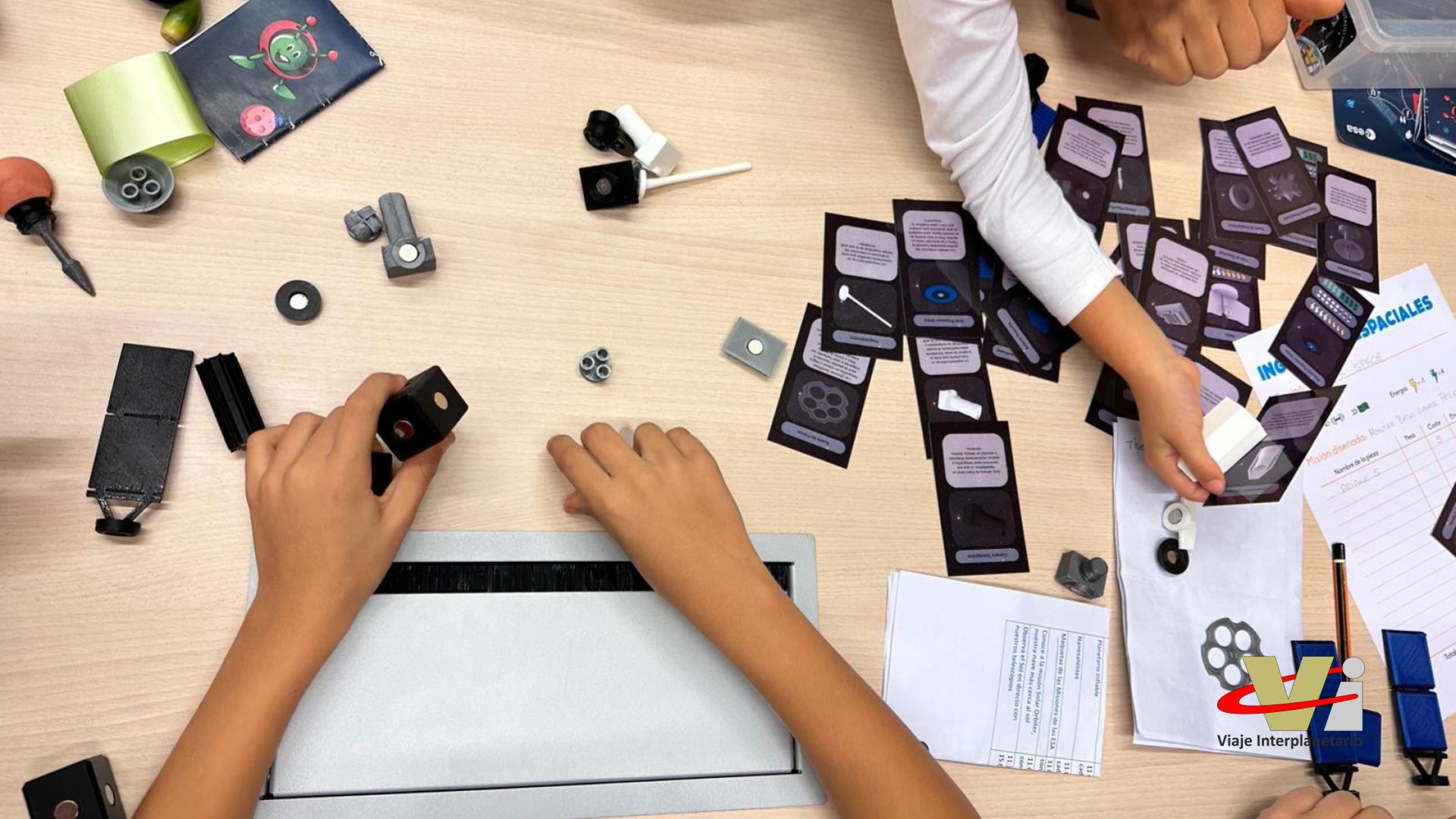
Space Engineers Workshop at the ESA Open Day.
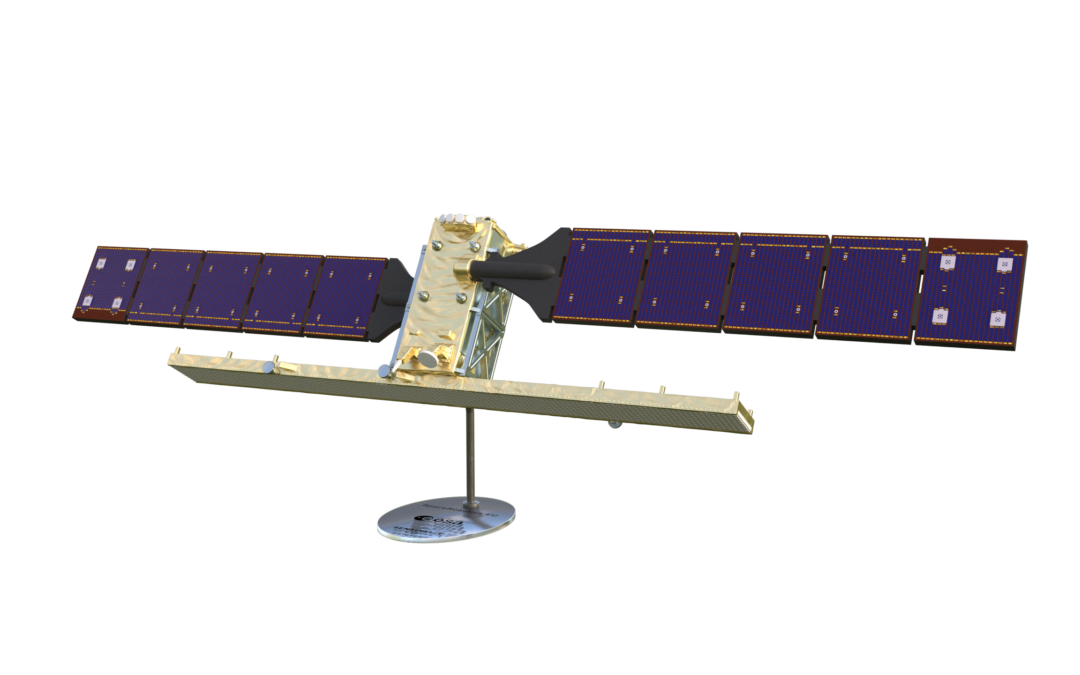
New scaled design of the ESA’s Sentinel-1 satellite
The SpaceRobotics.EU team has unveiled its latest creation: a detailed scale model of the Sentinel-1 satellite from the European Space Agency (ESA). The impressive replica, crafted with millimeter precision, underscores SpaceRobotics.EU‘s commitment to excellence in space engineering and the promotion of cosmic exploration.
The Sentinel-1 satellite is a cornerstone of the ESA‘s Copernicus program, designed for terrestrial and oceanic monitoring and has been in polar orbit since April 2014. Equipped with an advanced Synthetic Aperture Radar (SAR), Sentinel-1 provides a clear and precise view of the Earth’s surface day or night, even in adverse weather conditions.
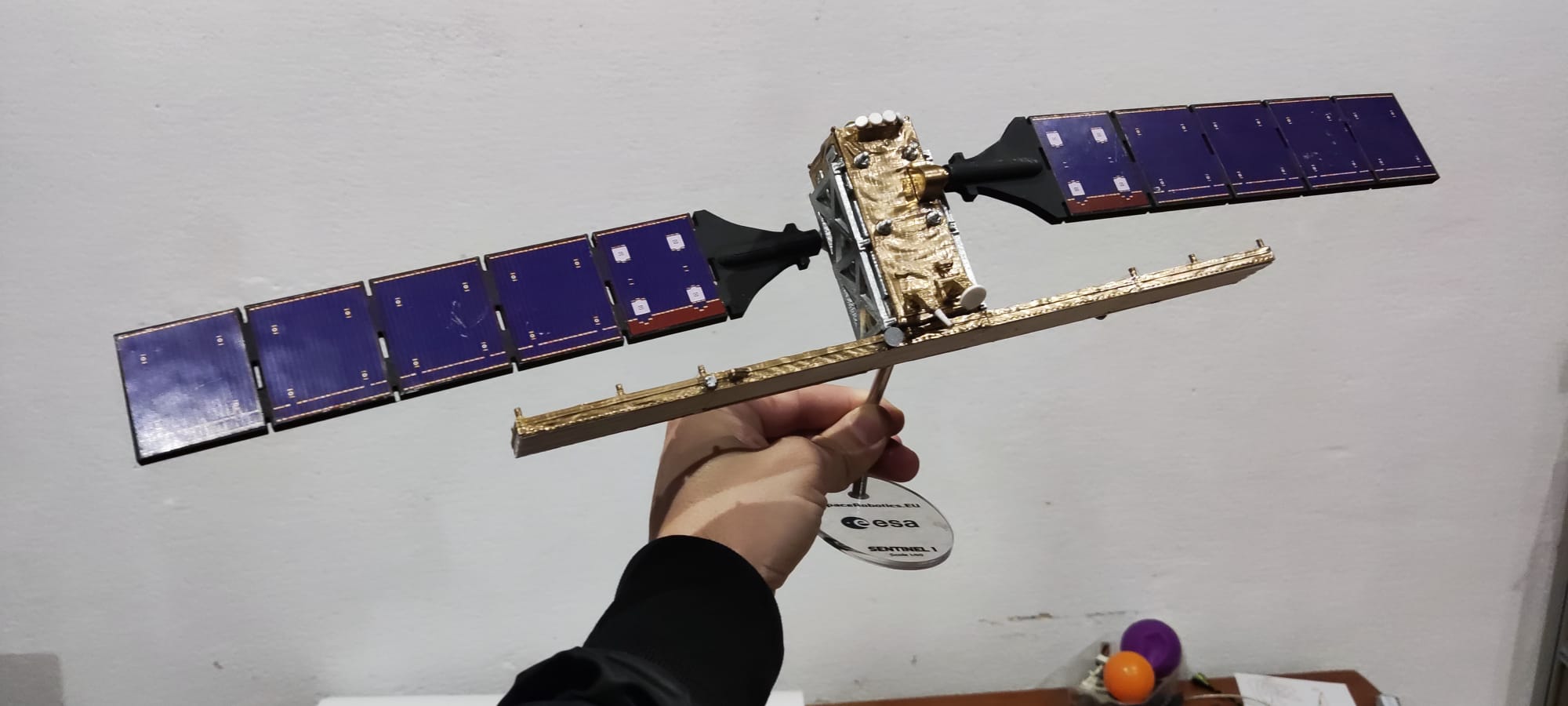
This satellite plays a crucial role in environmental surveillance, emergency management, and civil security. Its ability to observe in all weather conditions and during darkness makes it an invaluable resource for monitoring events such as floods, earthquakes, and oil spills, contributing to the protection and well-being of humanity.
The scale model of Sentinel-1, meticulously designed by the SpaceRobotics.EU team, captures the essence and complexity of this sophisticated satellite. Details such as deployed solar panels, SAR antenna, and other technical elements have been accurately recreated, offering an impressive visual representation of modern space engineering. This model also serves as a valuable educational tool to inspire future generations of scientists, and SpaceRobotics.EU aims to foster interest in science, technology, engineering, and mathematics (STEM), promoting the continuous development of space exploration and understanding our vast universe.
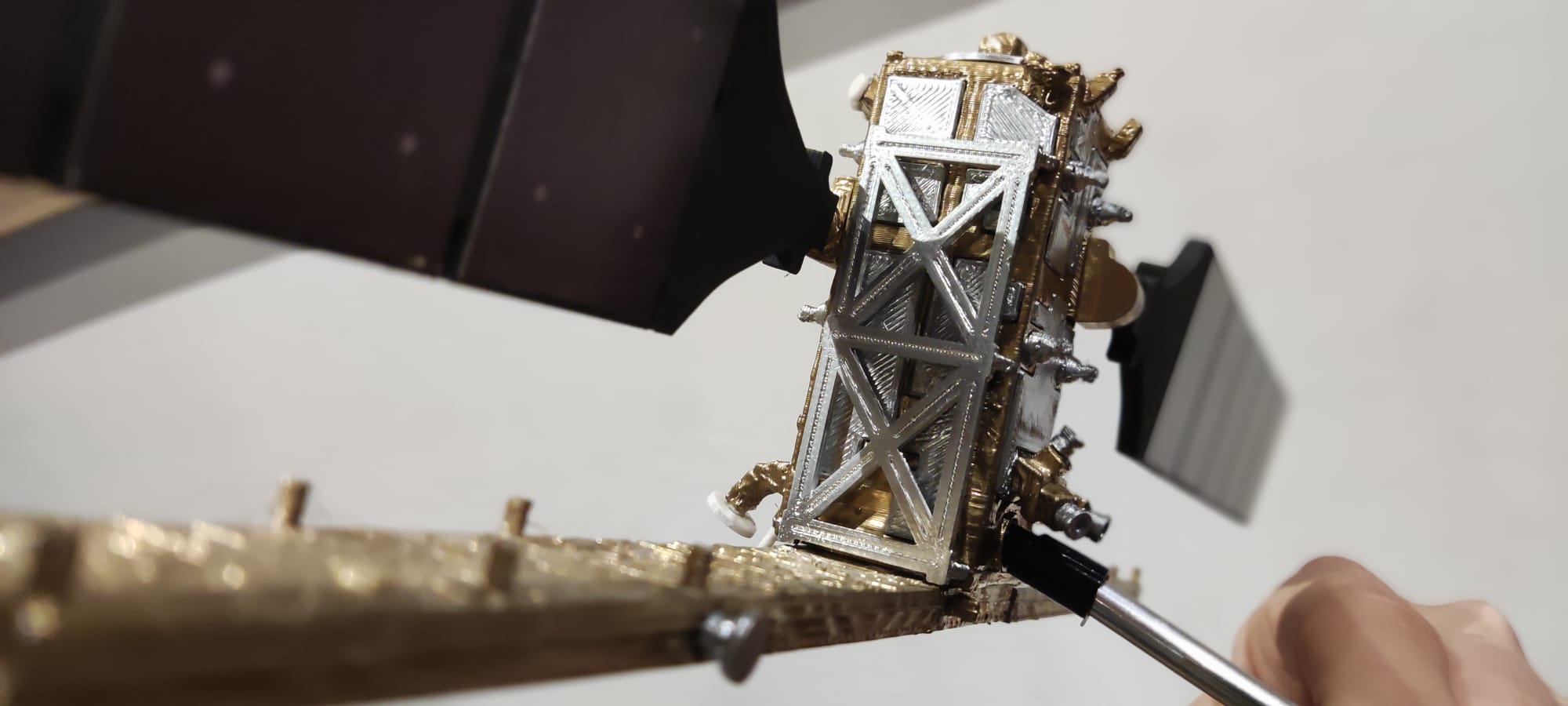
SpaceRobotics.EU once again collaborates on this project with the ESA, leveraging its expertise to create a scale model that will serve as an educational, outreach, and presentation tool. The team offers a wide range of designs accessible to all users, allowing for variability in model scale, from small centimeter-sized models to large exhibits for scientific outreach events. They also accept requests for custom designs through an online contact form.
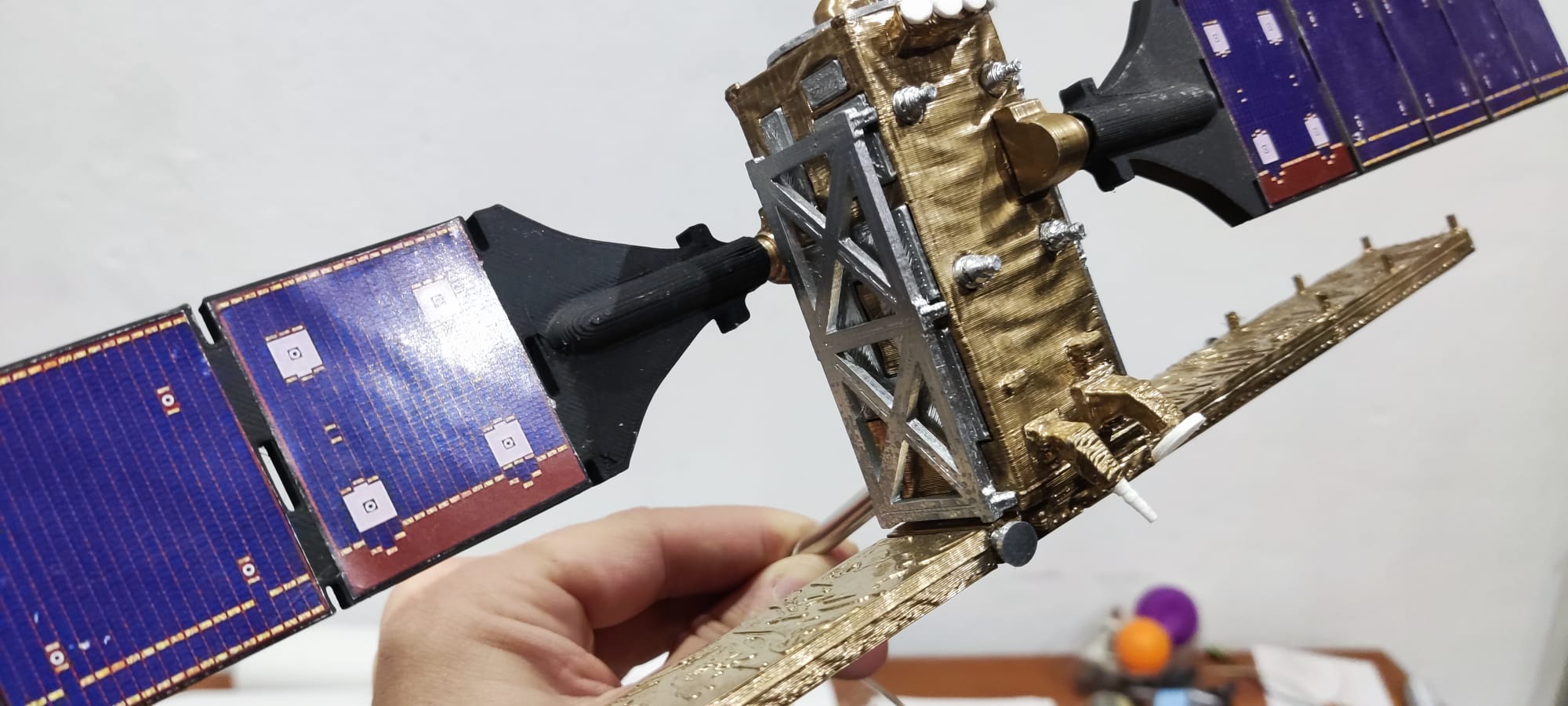
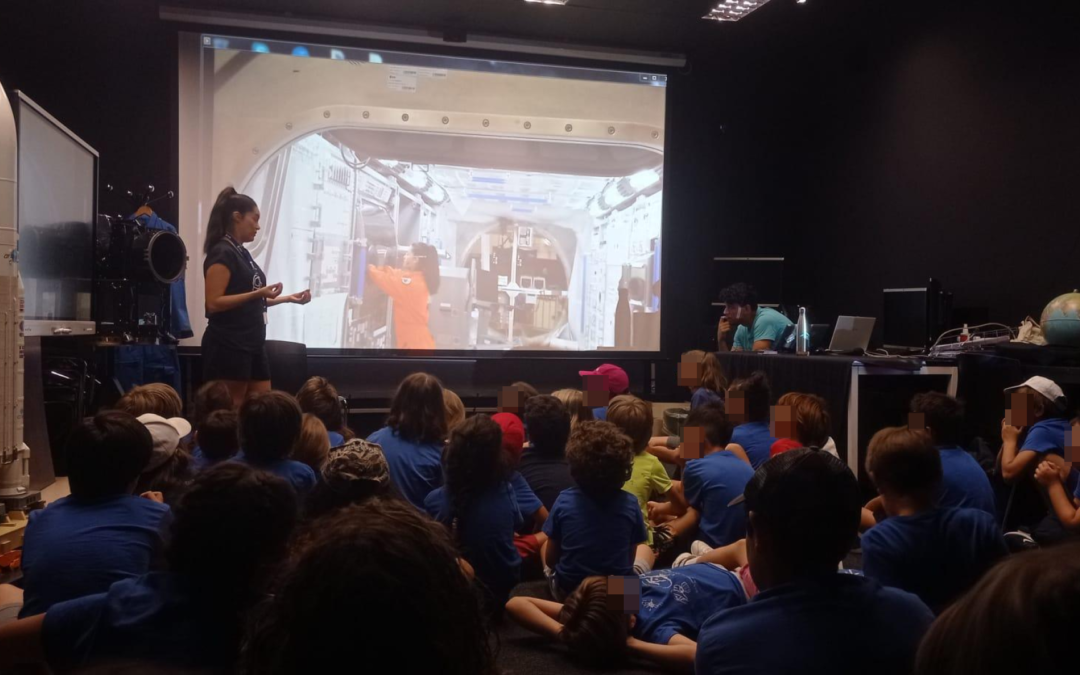
Celebration of the IX Space Summer School and II Youth Space Summer School
The European Space Astronomy Centre (ESAC) of the European Space Agency (ESA) brought together around a hundred young enthusiasts of space exploration, successfully hosting the ninth edition of the Space Summer School and the second edition of the Youth Space Summer School. The Space Camp, held from June 26 to July 21, 2023, was led by Astronaut LiLi, our renowned science communicator dedicated to fostering interest and education in the field of space science through her educational project Viaje Interplanetario.
Participants shared their enthusiasm for astronomy, science, space exploration, and research. Over the course of ten days (without overnight stays), youngsters had the opportunity to immerse themselves in an educational program designed to inspire and educate on various aspects of space, ranging from intensive astronaut training to lunar exploration and Mars missions, adapted to each age group for a comprehensive learning experience.
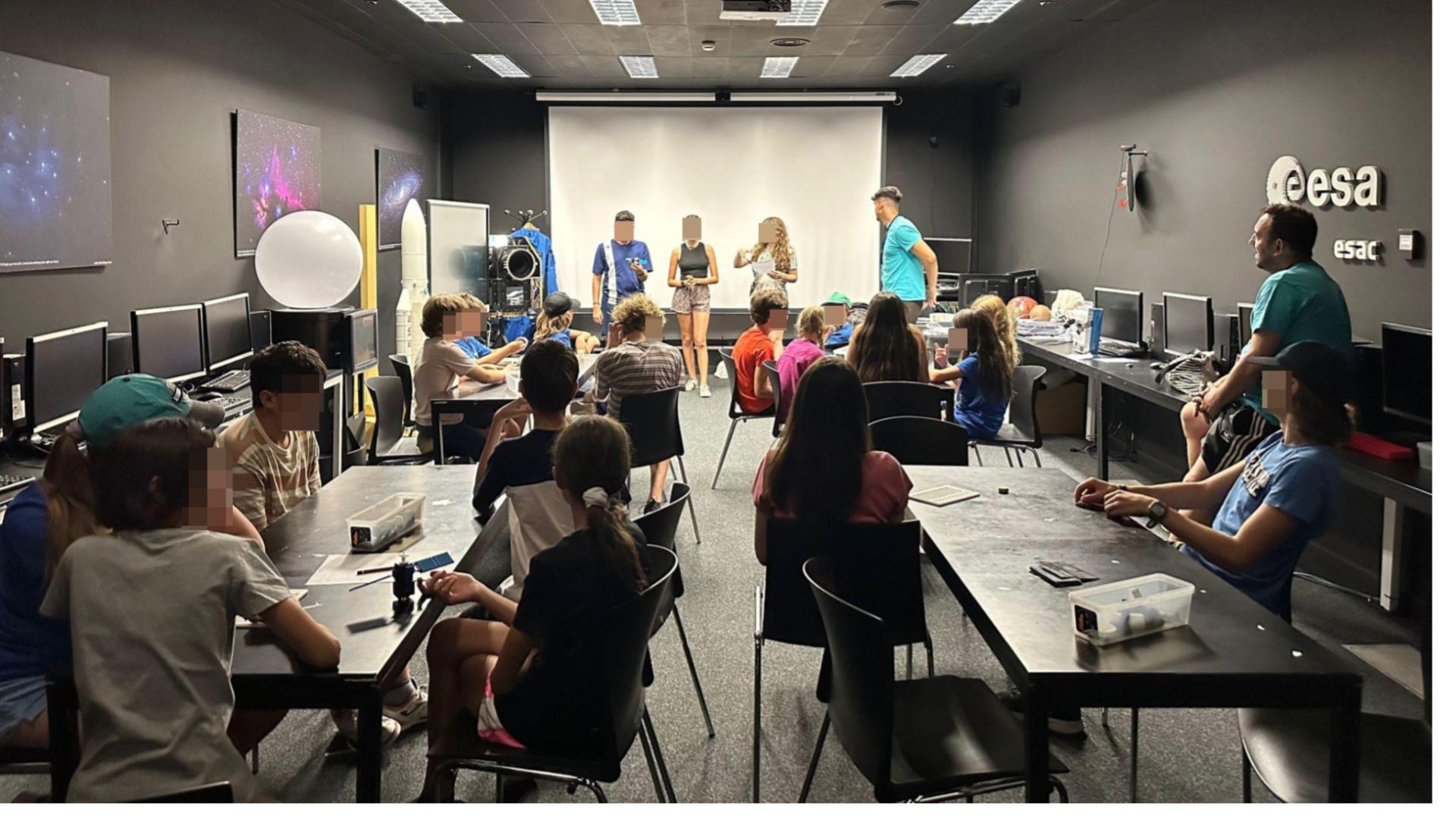
Space Engineers Workshop
This unique educational experience for children and teenagers provided them with the opportunity to interact with experts in various space-related fields and engage in fascinating hands-on activities. Participants in the Space Summer School explored advanced concepts in technology, robotics, and engineering, participated in the design and launch of their own rockets, and had access to cutting-edge educational resources. Interactive workshops, expert keynote lectures, inspirational talks, and diverse hands-on activities enriched the participants’ experience, all under the constant companionship and supervision of LiLi.
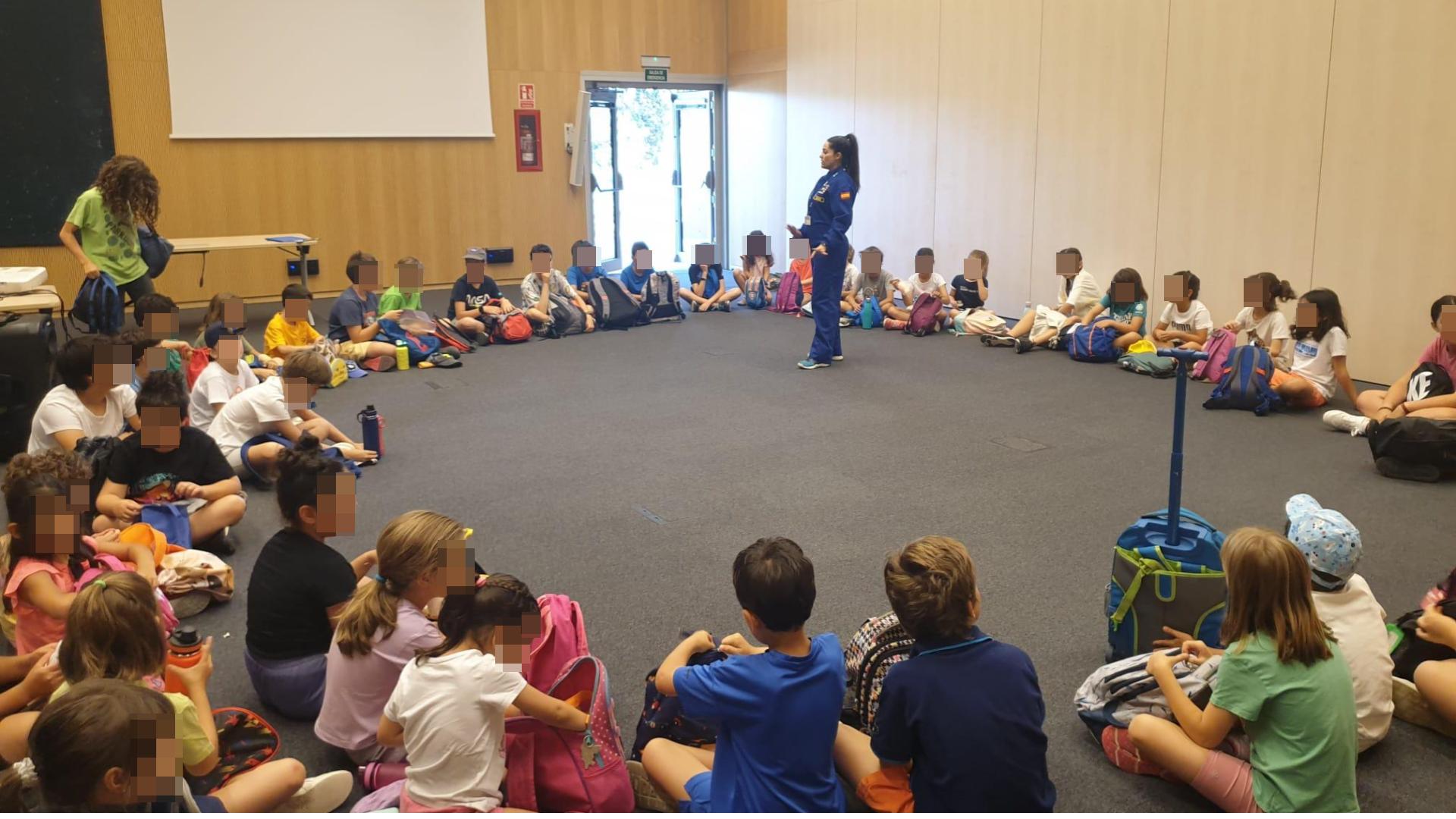
Presentation by Astronaut LiLi
Among these activities, a daily astronaut full training was particularly noteworthy, demonstrating the importance of maintaining health and strength for space missions, accompanied by a healthy lunch. They traveled through the Solar System aboard the Nebula One spacecraft commanded by Astronaut LiLi. They forged friendships within their groups while collaborating to establish their own space agency, design space missions, or build a reconnaissance satellite to orbit the Moon. They learned to plant seeds as they would on the International Space Station (ISS) and tasted freeze-dried food consumed by astronauts in space. They also enjoyed the sensation of stepping onto the Martian surface through Virtual Reality. Among many other experiences, they admired the new scale model rocket exhibition provided by the SpaceRobotics.EU team to delve into the history of space exploration. The older ones even created a website for their project during the camp.
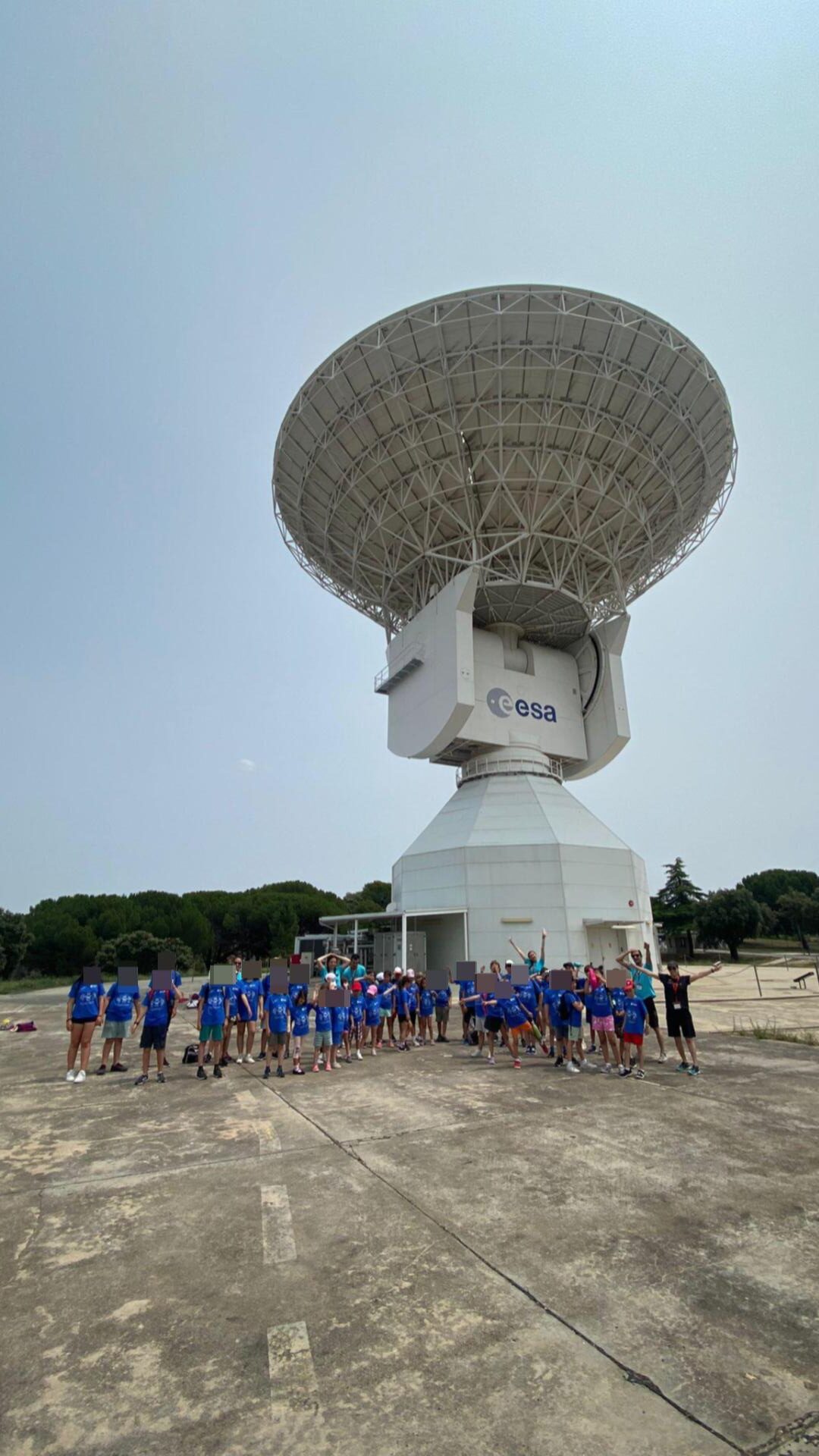
Cebreros station antenna
Additionally, they had the opportunity to go on excursions to other centers, such as the Communication Station of the European Space Agency (ESA) located in Cebreros (Ávila). They even got to meet the molecular biologist and Spanish astronaut candidate Sara García Alonso, who shared her experiences and motivated the youngsters to continue pursuing their dreams in the field of space.
At the end of this thrilling experience, participants received a series of special and personalized gifts, such as diplomas for completing various space missions, or posters featuring augmented reality (AR), running through the free NubaloAR app for Android or for iOS. With this app, they can continue exploring the universe from home and also enjoy the interactive poster exhibition available at salaverlasestrellas.com. The interactive book «Descubre el Universo con la Astronauta LiLi» can further enhance this educational experience with the help of the same app, providing a fun and original way to continue learning about space.
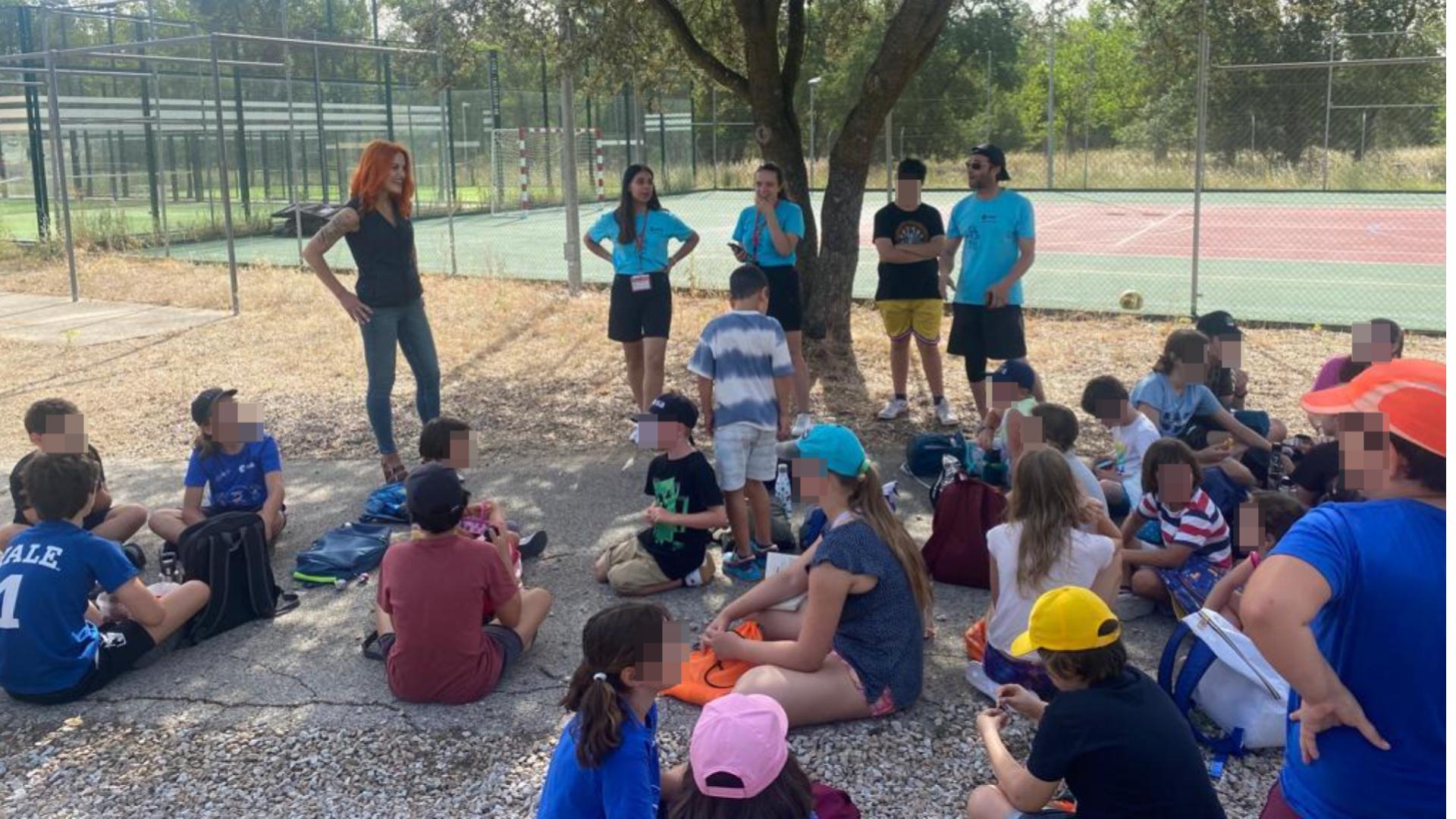
Launch with Astronaut Sara García Alonso
The Celebration of the IX Space Summer School and II Youth Space Summer School bore witness to the growing interest of youth in STEAM fields (Science, Technology, Engineering, Art, and Mathematics). With the success of this edition, Astronaut LiLi and her team eagerly anticipates future editions of the Space Summer School, encouraging and inspiring more youngsters to explore the wonders of the universe and consider professional careers in the fascinating field of astronomy.
For more information about Astronaut LiLi’s camps, visit:
You can also learn about other activities we carry out with the Interplanetary Journey project at:
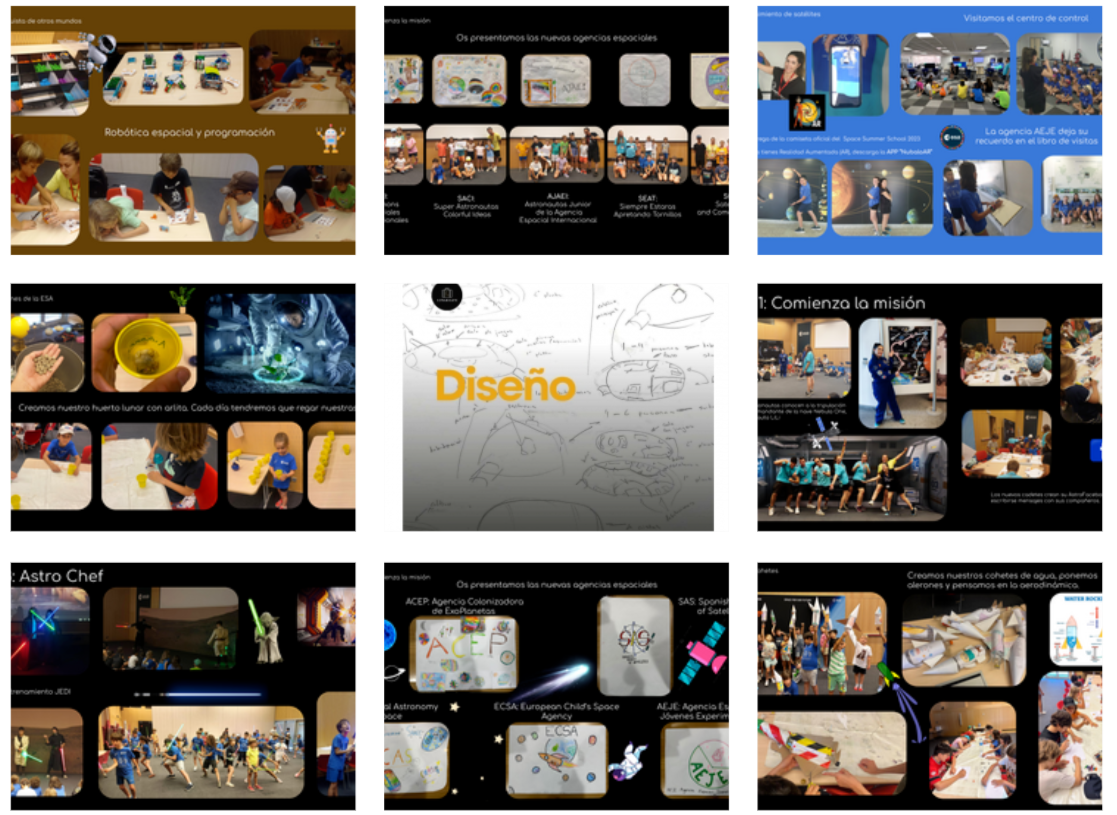
Compilation of images from the final photobook
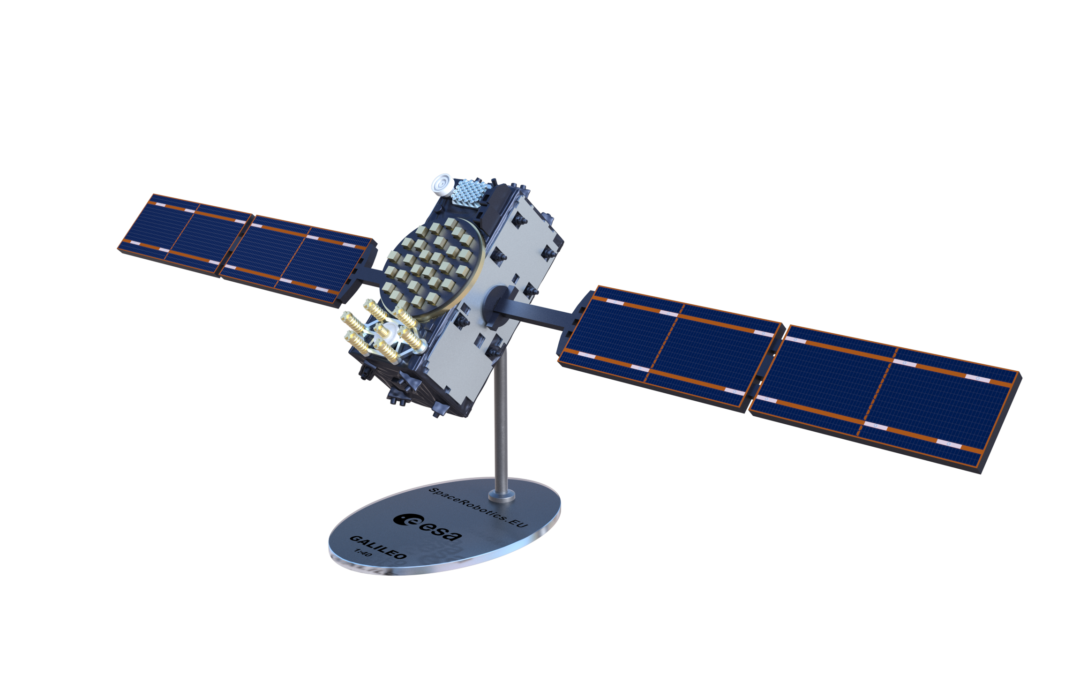
New Designs for the Scale Model of ESA’s Galileo Satellites
The latest project undertaken by the SpaceRobotics.EU team involves the new base design and scale model for the Galileo satellite. This meticulously crafted 3D model was commissioned by the prestigious Galileo program of the European Space Agency (ESA)
The scale model captures every detail of the innovative project, representing the latest evolution of the global satellite navigation system developed by the European Union (EU) and ESA. This civil-use project serves as an independent alternative to existing satellite navigation systems such as the United States’ Global Positioning System (GPS) and Russia’s Global Navigation Satellite System (GLONASS). Galileo will enable European citizens to determine their position without relying on GPS, although both systems can operate simultaneously and in conjunction with the Russian navigation system.
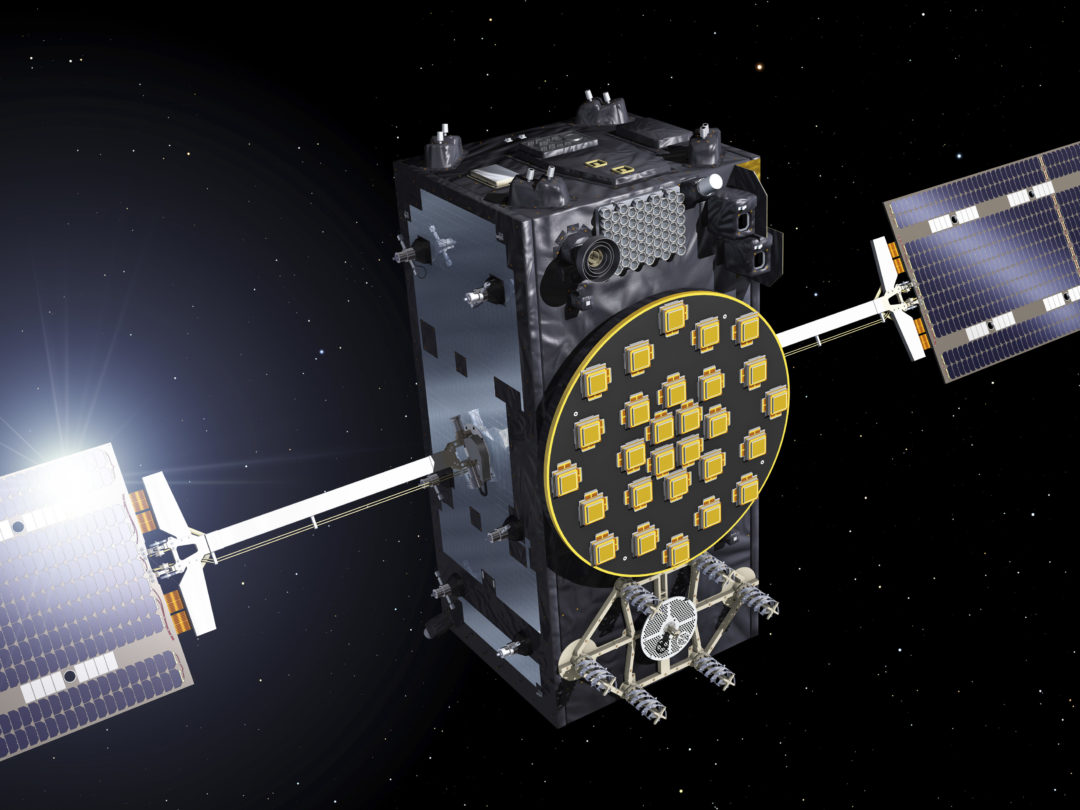
The Galileo system comprises a set of satellites whose signals are transmitted to receivers located in ground control stations, allowing precise determination of their location. Its objectives include providing independence in accessing global positioning and navigation information, offering more reliable navigation services with superior accuracy worldwide, ensuring interoperability with other global satellite navigation systems for combined coverage, and driving technological and economic development in the European Union by creating new opportunities and applications.
With this new design, SpaceRobotics.EU continues to demonstrate its commitment to innovation and excellence in space exploration. The scale model will enable scientists, engineers, and space enthusiasts to closely explore the complexity and sophistication of Galileo with visual tools that enhance understanding and appreciation of space missions. The contract with the ESA‘s Galileo program underscores the trust placed in SpaceRobotics.EU‘s technical excellence. The company has consistently shown its ability to deliver innovative and cutting-edge solutions in the field of space exploration and robotics through precise and detailed models.
This collaboration is not the first time SpaceRobotics.EU has worked with the ESA and other space agencies, deploying its expertise to create a scale model that serves as an educational, outreach, and presentation tool. The team offers a wide range of designs accessible to all users, allowing for variability in model scale, from small centimeter-sized models to large exhibits for scientific outreach events. They also accept requests for custom designs through an online contact form.
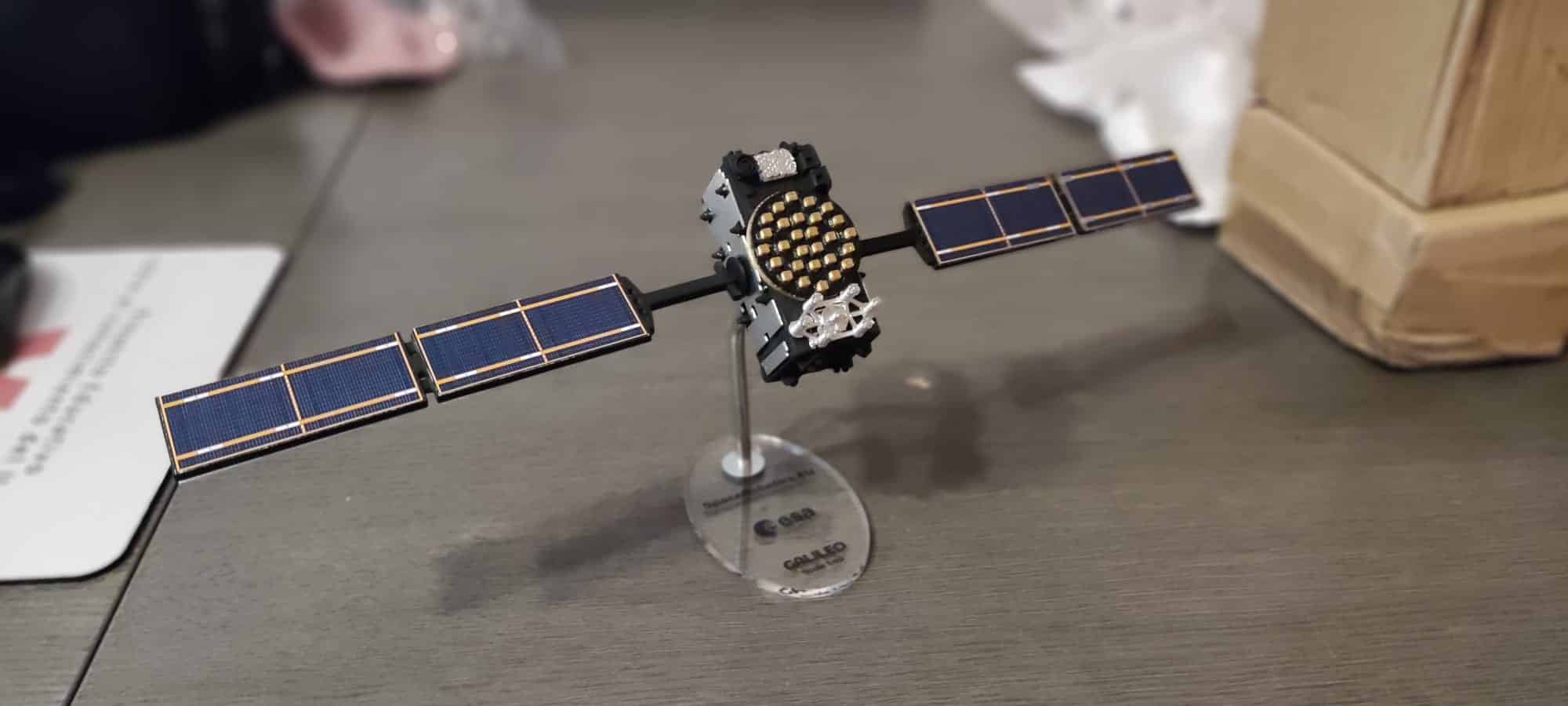
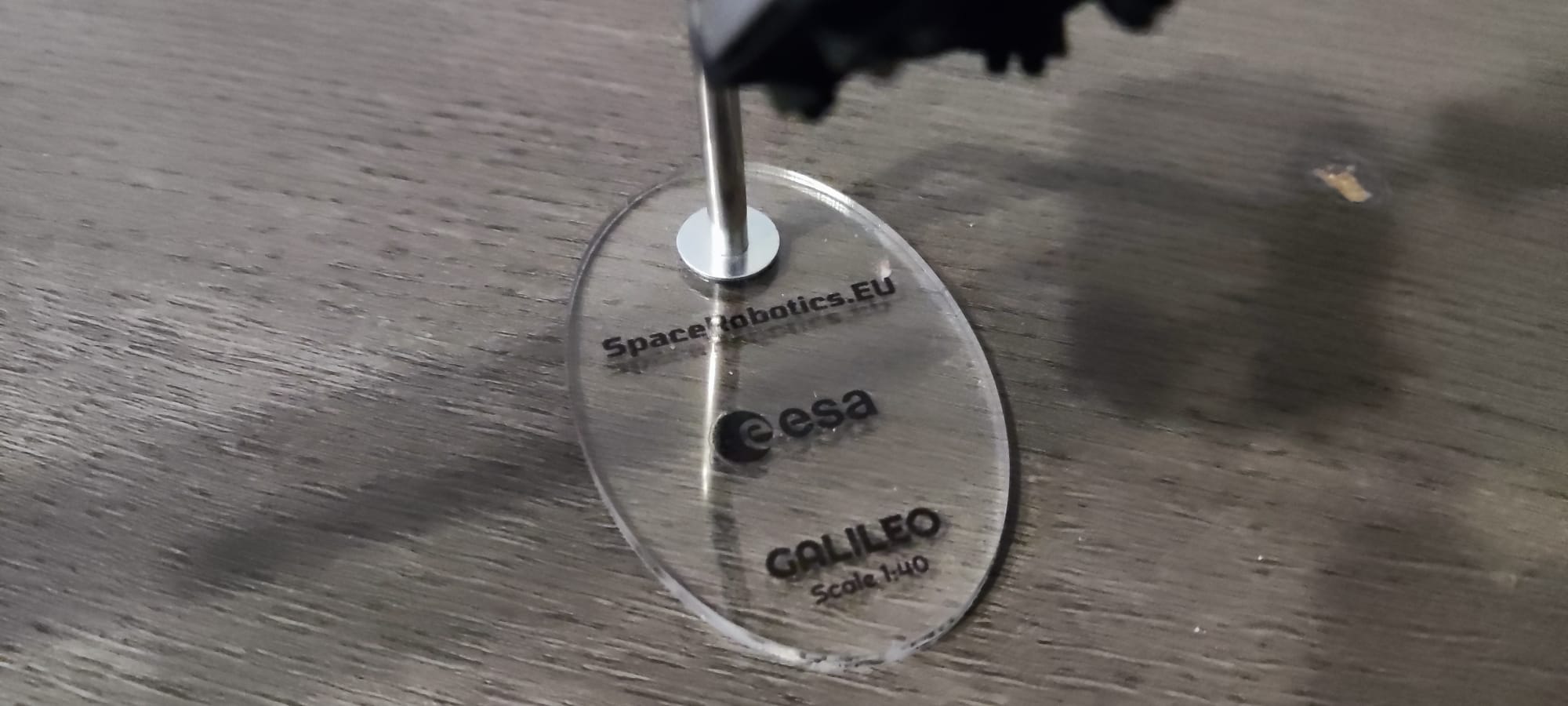

New 3D Satellites for the European Space Agency – Earth Observation
At Nubalo Studios S.L., we are specialized in creating scale satellites of space missions, managing the entire design and manufacturing process to ensure precision and authenticity in every detail.
In recent months, we have worked on constructing replicas of Aeolus, Swarm, Cryosat-2, and Euclid for the European Space Agency (ESA), as well as other satellites for NASA. We’ve also enhanced previous versions of missions like Mars Express, Venus Express, Solar Orbiter and Bepicolombo. Our manufacturing process involves the use of UV filters to enhance the quality and realism of satellite textures, giving each a more authentic and detailed appearance. Additionally, we use high-quality materials to ensure durability and resistance.
If you’re interested in having your own scale satellite of a space mission, feel free to contact us through the form available on the SpaceRobotics.EU website. We’d be delighted to assist you in creating a detailed and customized model.
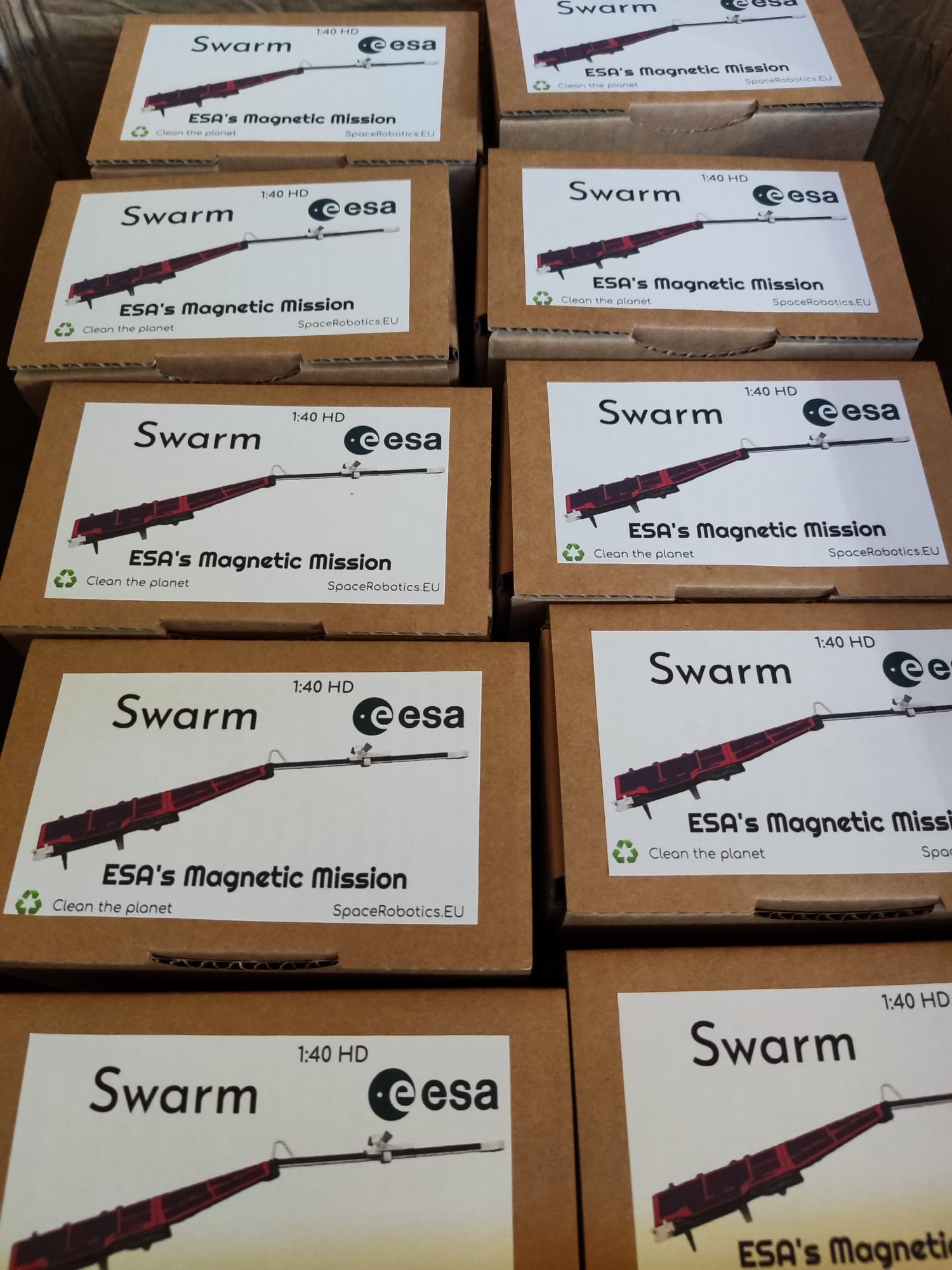
Scale Models of ESA’s Swarm satellite.
Aeolus Satellite
Aeolus is a satellite of the European Space Agency (ESA) designed to measure winds in Earth’s atmosphere from space. Launched on August 22, 2018, from the Kourou launch base in French Guiana, it orbits Earth at an altitude of around 320 km, completing an orbit every 94 minutes.
The satellite has a mass of approximately 1,400 kg and is equipped with a Light Detection and Ranging laser (lidar) named Aladin (Atmospheric Laser Doppler Instrument). Aladin sends a laser beam towards Earth, measuring the speed and direction of wind in our planet’s atmosphere based on particle movement in the air. Aeolus’s collected data is used to enhance meteorological models and predict atmospheric conditions and climate changes. This satellite is expected to have a lifespan of around 3 years.
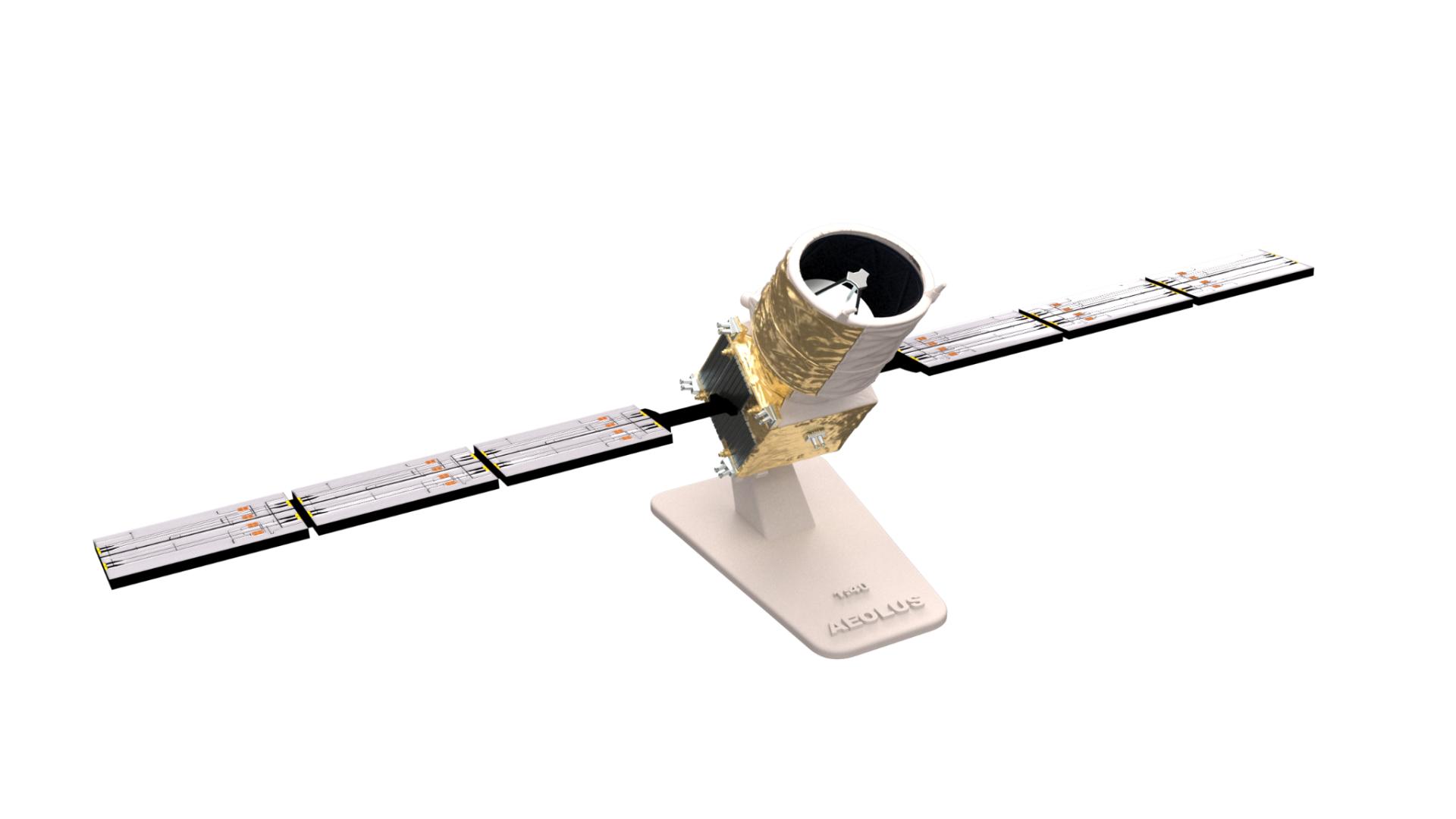
ESA’s Aeolus satellite model.
Swarm Satellite
Swarm is a set of three satellites from the European Space Agency (ESA) designed to measure Earth’s magnetic field from space. Launched on November 22, 2013, from the Plesetsk launch base in Russia, these satellites orbit Earth at an altitude of around 460 km.
Each Swarm satellite has a mass of approximately 300 kg and is equipped with various sensors and instruments to measure the Earth’s magnetic field and its variability over time. The collected data helps understand how Earth is shielded from solar charged particles and how the Earth’s magnetic field is changing due to phenomena such as climate change and solar activity. Swarm satellites are expected to have a lifespan of around 5 years.
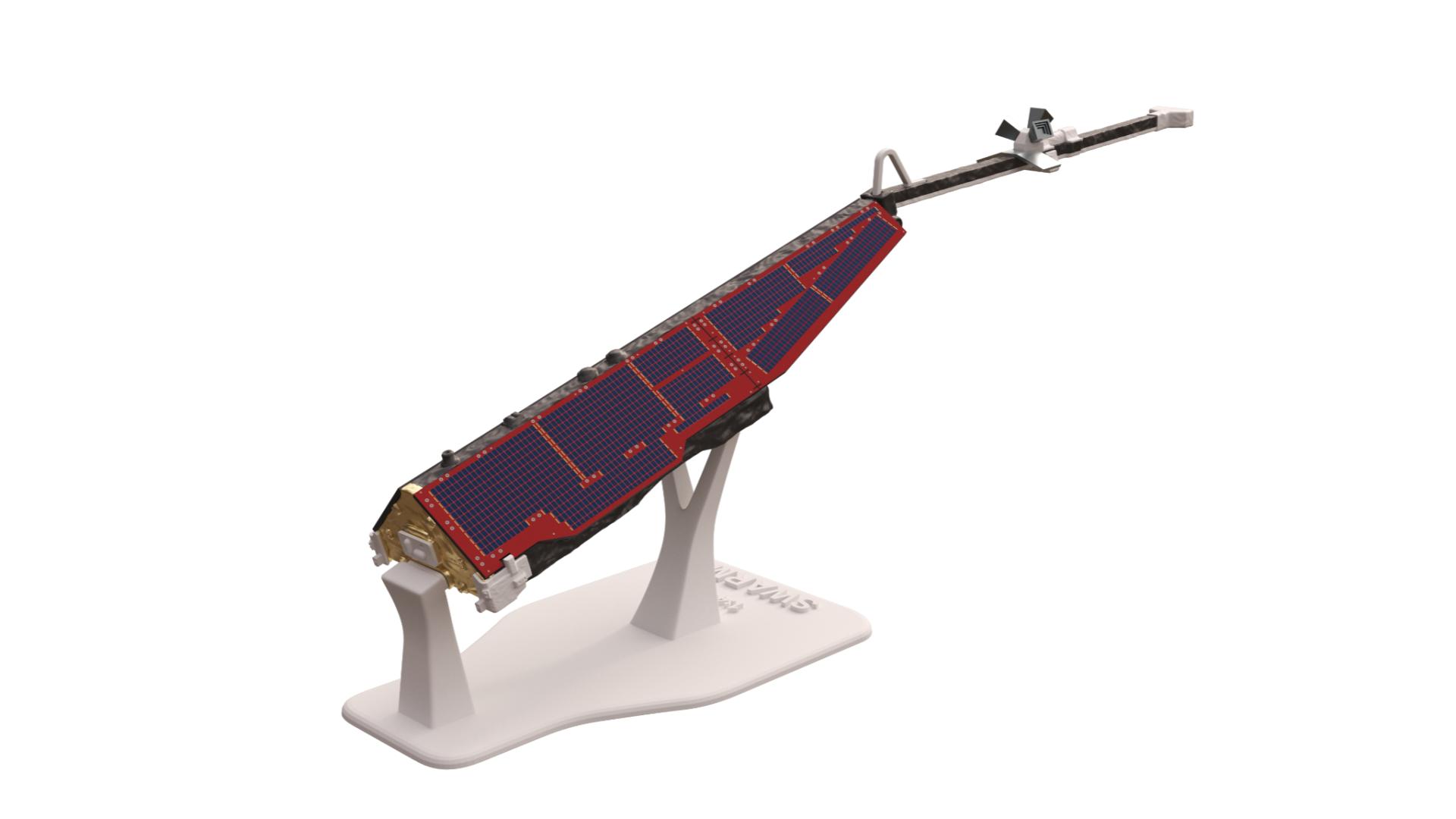
ESA’s Swarm satellite model.
Cryosat-2 Satellite
Cryosat-2, an ESA satellite, is designed to measure the height and mass of Earth’s glaciers and polar ice caps. Launched on April 8, 2010, from the Baikonur launch base in Kazakhstan, it orbits Earth at an altitude of around 717 km, completing an orbit every 94 minutes.
Cryosat-2 has a mass of approximately 1,400 kg and is equipped with a Short-Wave Radar Interferometric Altimeter (SIRAL). SIRAL sends electromagnetic waves towards the Earth’s surface, measuring the height of ice and snow through their reflection. The collected data is used to study how glaciers and polar ice are changing due to global warming, enabling predictions of future sea levels. Cryosat-2 is expected to have a lifespan of around 7 years.
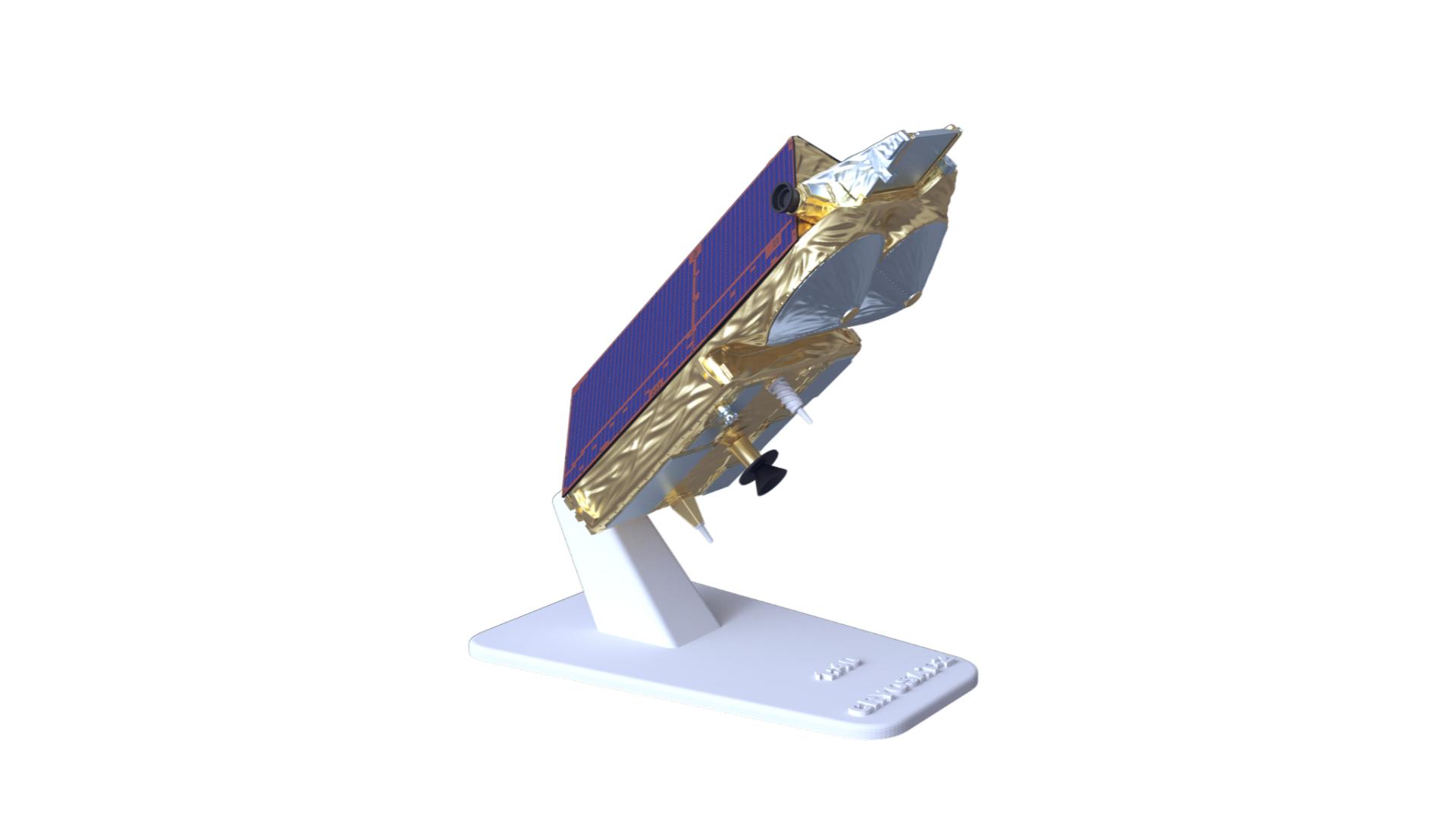
ESA’s Cryosat-2 satellite model.
Euclid Satellite
Euclid, an ESA satellite, is designed to study the distribution and movement of dark matter in the universe. Launched on July 22, 2021, from the Kourou launch base in French Guiana, it orbits around the Lagrange L2 point, approximately 1.5 million kilometers from the Earth on the opposite side of the Sun.
Dark matter is a type of matter that doesn’t emit light and cannot be directly detected, but it is believed to significantly influence the formation and movement of galaxies.
Euclid has a mass of approximately 1,500 kg and is equipped with two main scientific instruments: a visible camera and an infrared spectrometer. These instruments measure the light from millions of galaxies and galaxy clusters, allowing scientists to study the distribution and movement of dark matter across the entire universe indirectly. Euclid is expected to have a lifespan of around 6 years.
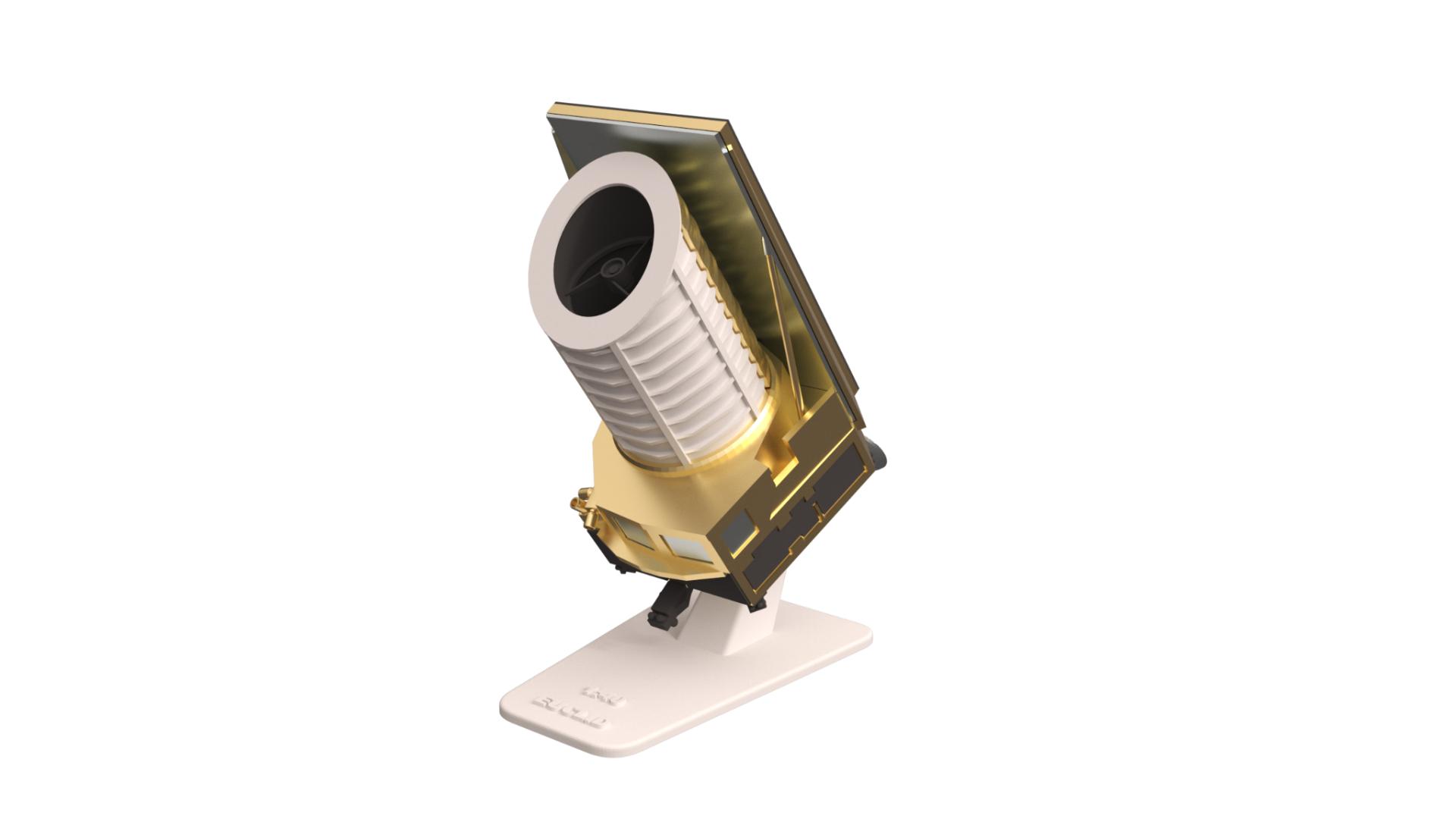
ESA’s Euclid satellite model.
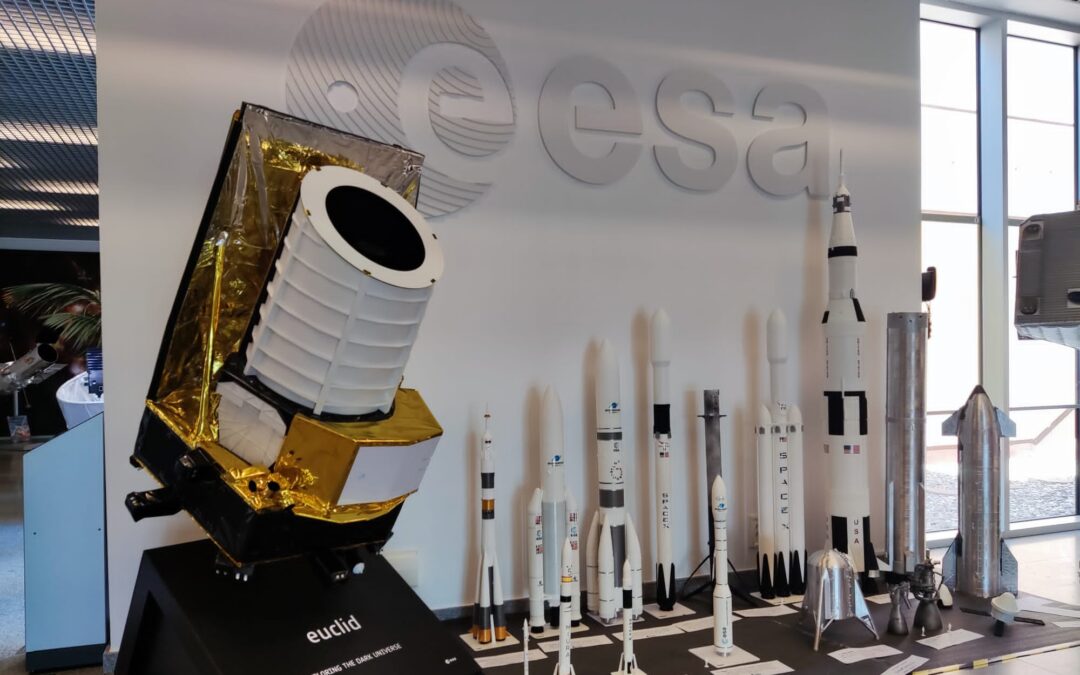
New exhibition featuring the most significant Space Launchers in history
We inaugurate a new exhibition of 1:50 scale rockets, a fascinating collection created by SpaceRobotics.EU. The exhibition showcases detailed models of some of the most iconic rockets in the history of space exploration.
Each model has been meticulously crafted to capture the distinctive details of the original rockets so that visitors can not only compare their sizes but also closely explore the evolution of space technology over the decades and appreciate the engineering behind these powerful vehicles. Visitors can examine in detail the some rockets phases or the various engines required to propel them into space.
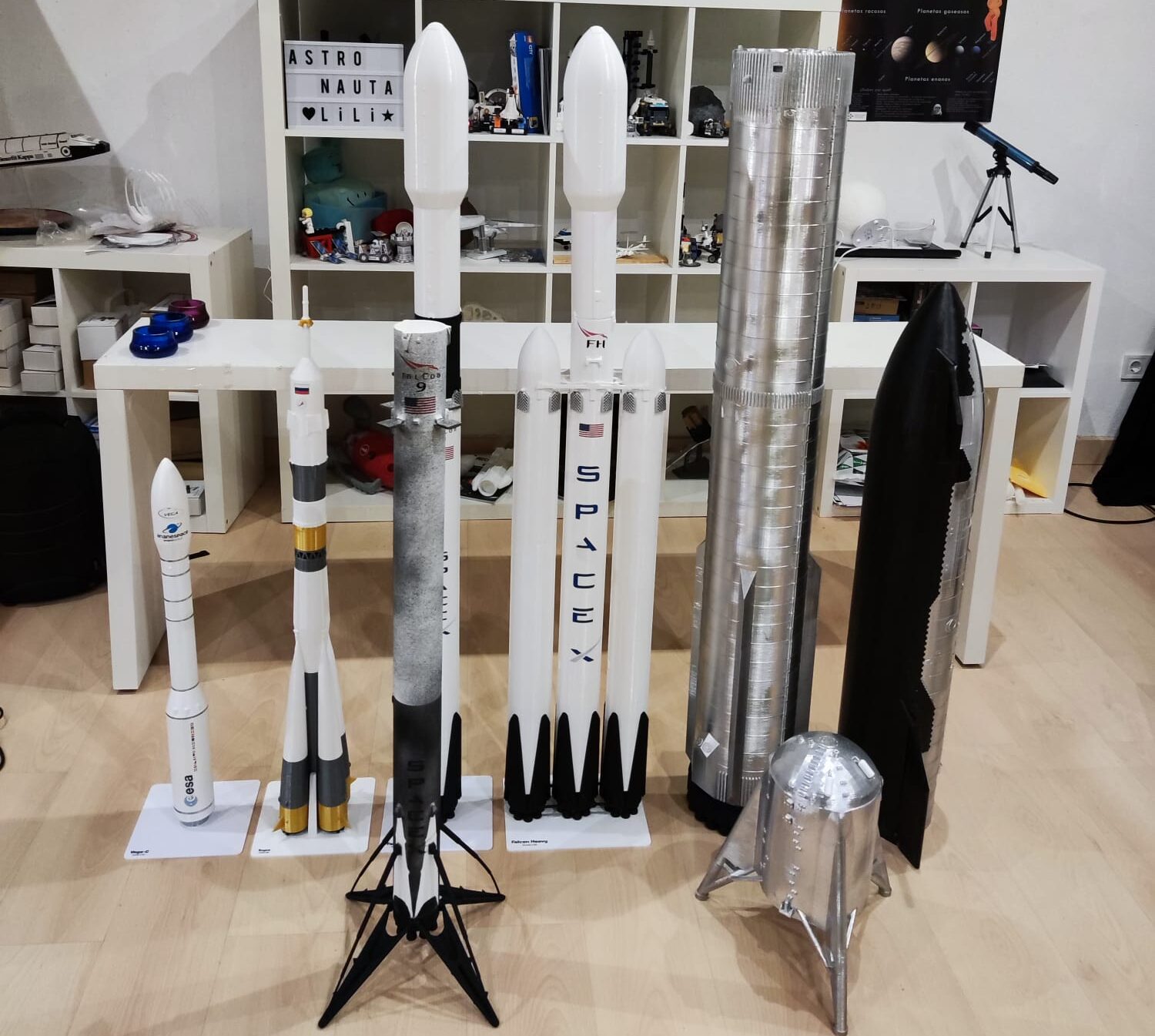
1:50 scale models at Astronauta LiLi’s studio.
Among these precise replicas, attendees will have the opportunity to marvel at rockets such as the Miura 1 and Miura 5 from the Spanish company PLD Space, SpaceX‘s Falcon Heavy, Falcon 1 and Falcon 9, Vega-C, Ariane 5 and Ariane 6 from the European Space Agency (ESA), or the Russian Soyuz launcher. The iconic Saturn V is also included, the largest rocket of the 20th century, which successfully transported humans to the Moon multiple times during the Apollo missions. The Starship spacecraft and the Super Heavy rocket will captivate visitors due to their large size and their role in the present and future of space exploration, emphasizing reusability and serving as vital components for upcoming space missions, such as the Artemis mission to return to the Moon in the next decade.
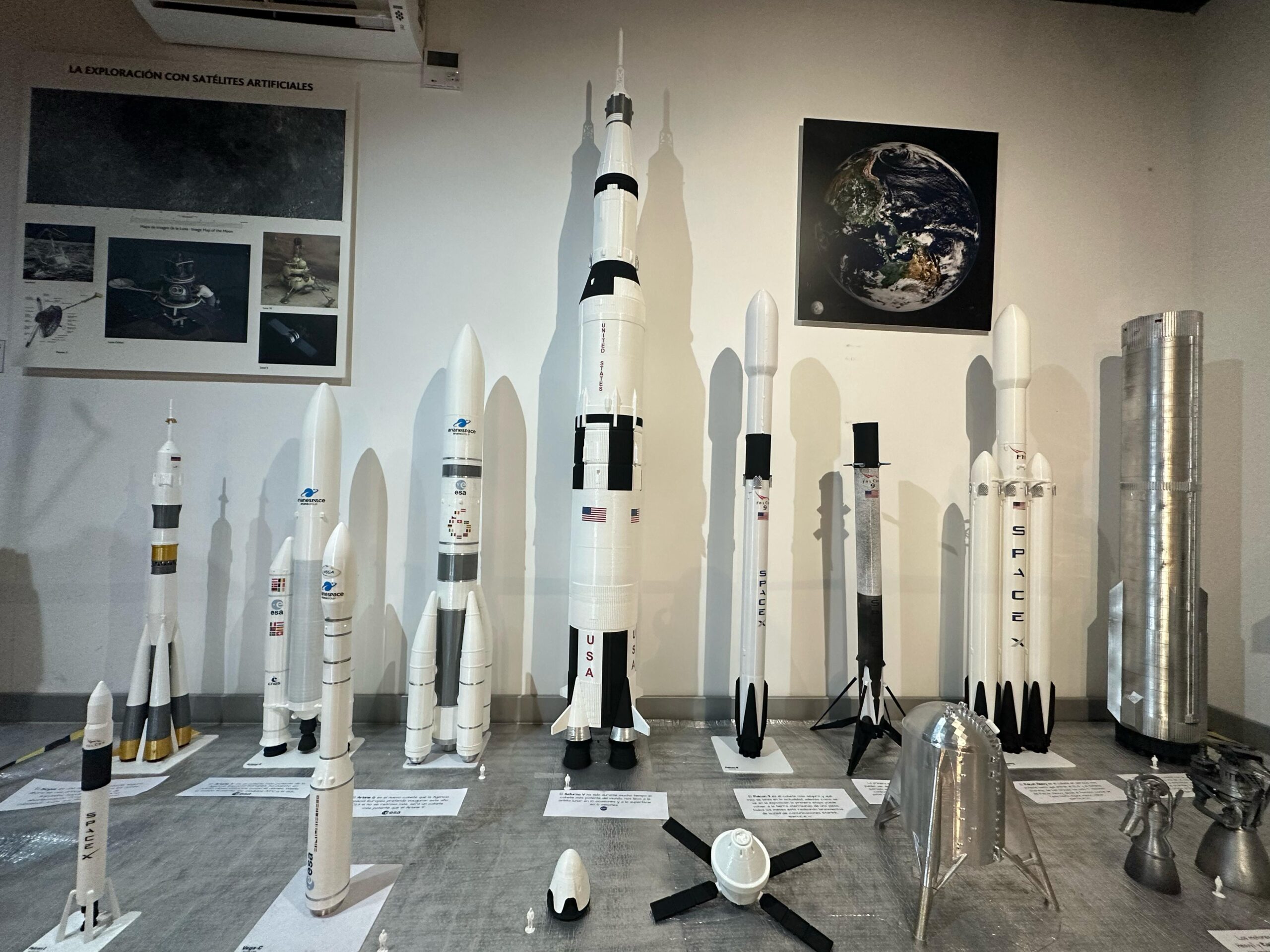
1:50 scale rocket exhibition at the Lunar Museum of Fresnedillas de la Oliva.
The rockets had been previously showcased at Expoastronomica on March 12, 2023, and at ESAC during the summer camps in July of the same year, as part of unique experiences where Astronaut LiLi conducts various STEAM activities integrated into her educational project, Viaje Interplanetario. Now, finally, they can be permanently found on display at the Lunar Museum of Fresnedillas de la Oliva.
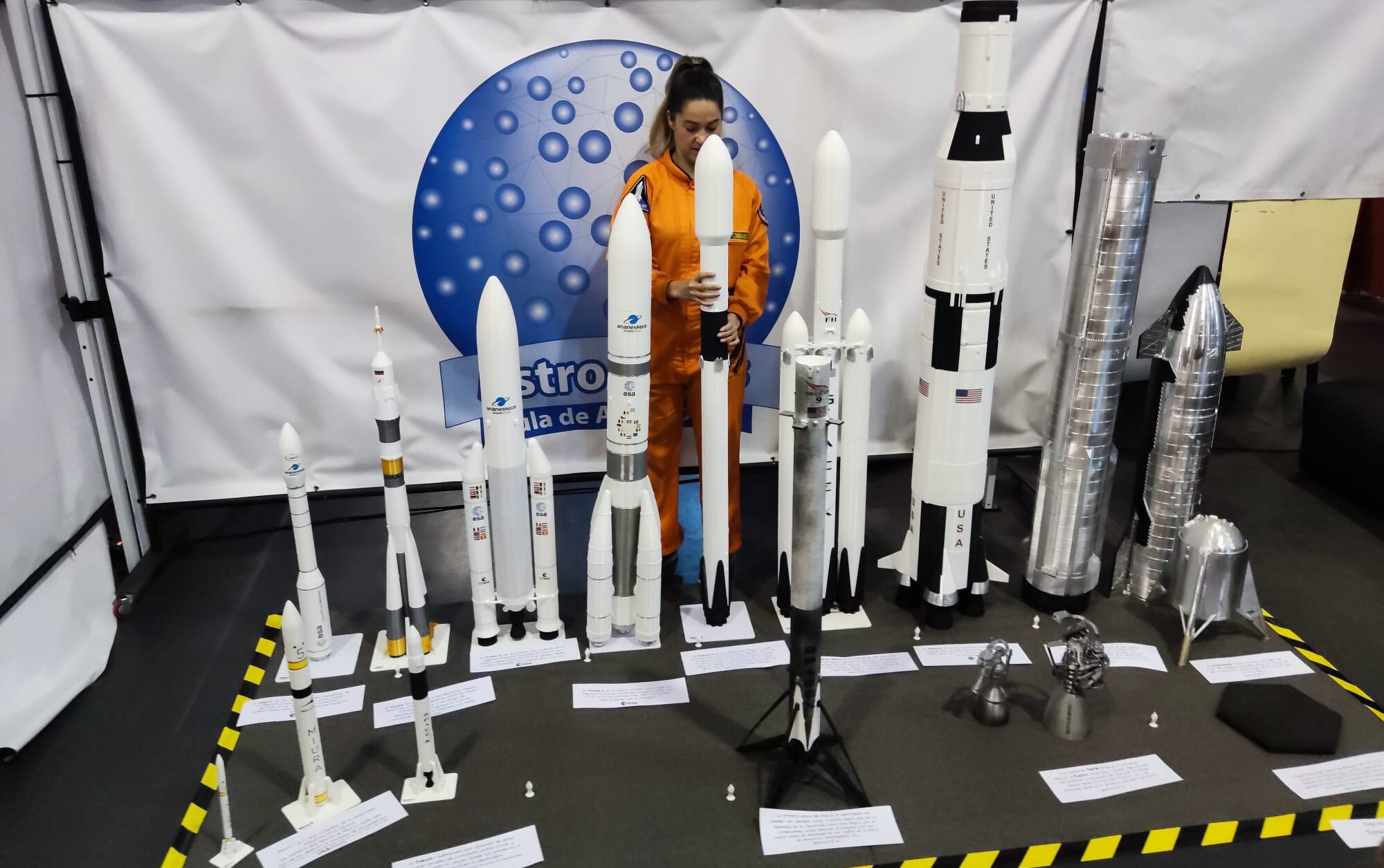
1:50 scale rocket exhibition at Expoastronomica.
Furthermore, space enthusiasts can acquire their own scale replicas of these rockets on the Space Shop website, providing them with the opportunity to take home a piece of space exploration history. The option to create custom rockets at different scales and with various design choices, including the addition of logos, lights, and engines, is also available. This initiative allows individuals to obtain a unique piece in the realm of space conquest.
The exhibition is now open to the public, offering visitors a unique experience to delve into the history and future of space exploration. Don’t miss this one-of-a-kind opportunity to explore the cosmos!
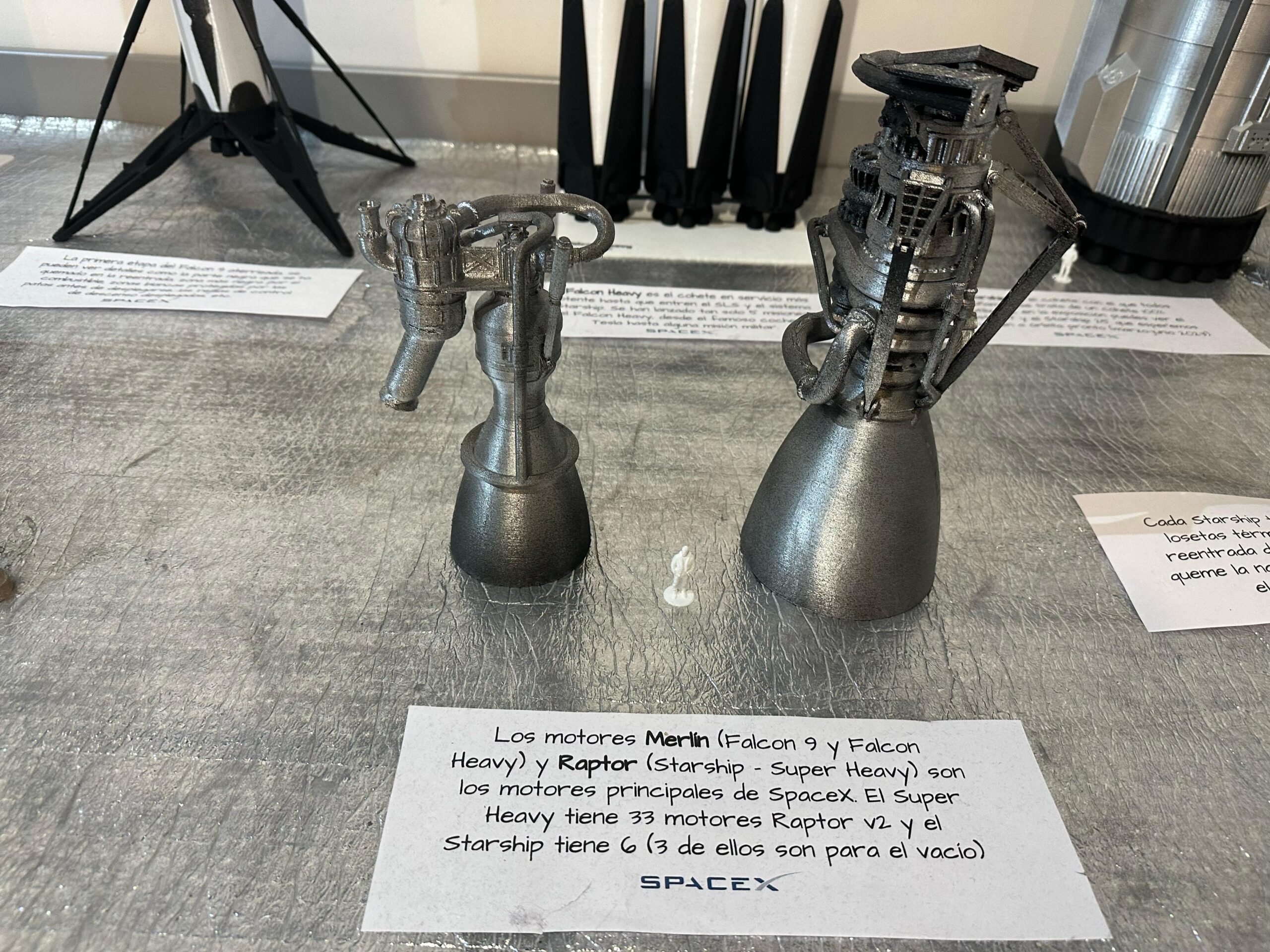
Merlin and Raptor engines from the scale rocket exhibition at the Lunar Museum.
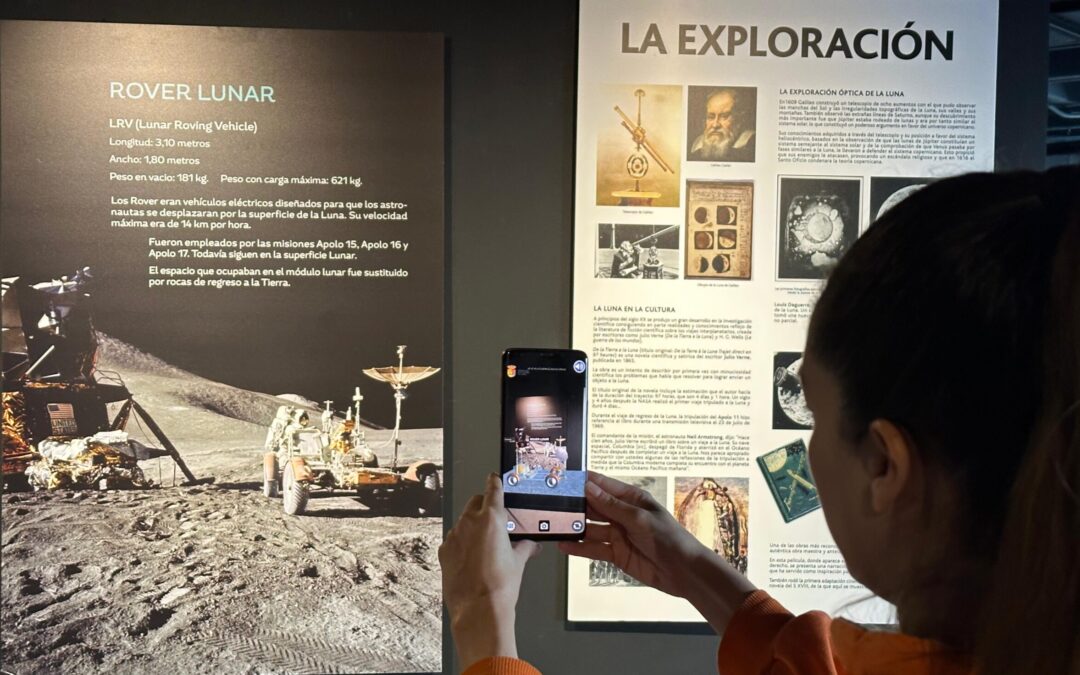
Update of the Lunar Museum’s AR Application
The Lunar Museum, located in Fresnedillas de la Oliva (Madrid, Spain), near the old NASA Manned Spaceflight Tracking Station, has recently announced a new update to its augmented reality (AR) application. This update includes several improvements and new features that make the visitor’s experience even more comprehensive and attractive.
One of the main enhancements is the adaptation of animations to the new panels in different areas of the exhibition hall. The Lunar Museum has refreshed part of its display in recent months, making it essential for the application to be updated and showcase new animations corresponding to recently added elements. This way, visitors can enjoy a more complete and enhanced experience.
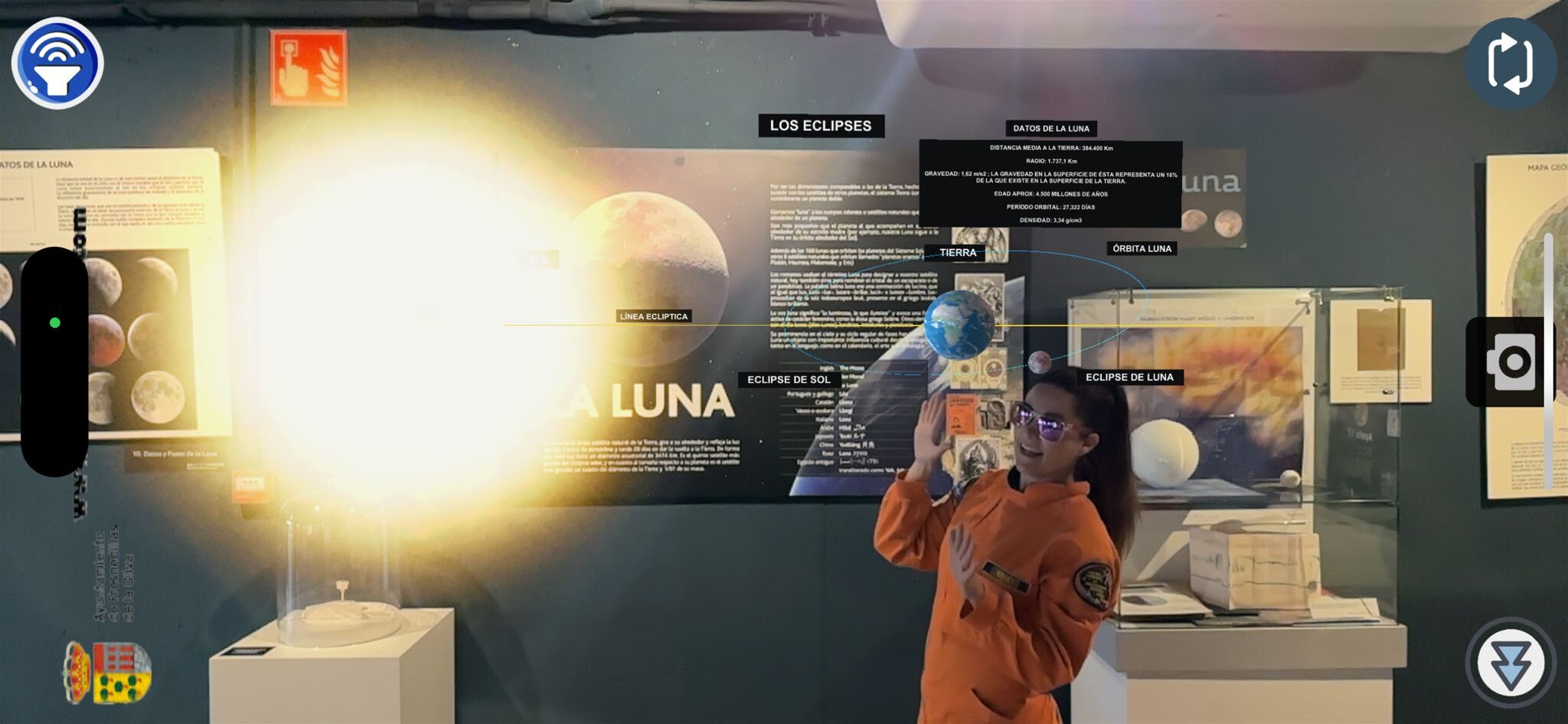
Augmented Reality on eclipses with Astronaut LiLi in the Lunar Museum app.
Another innovation in the application is the addition of the animation change and replay button. With this feature, visitors can re-watch animations of scanned elements using their mobile phone cameras. This function is particularly useful for those who want to delve deeper into the museum’s information or for those who may have missed some details during the initial viewing.
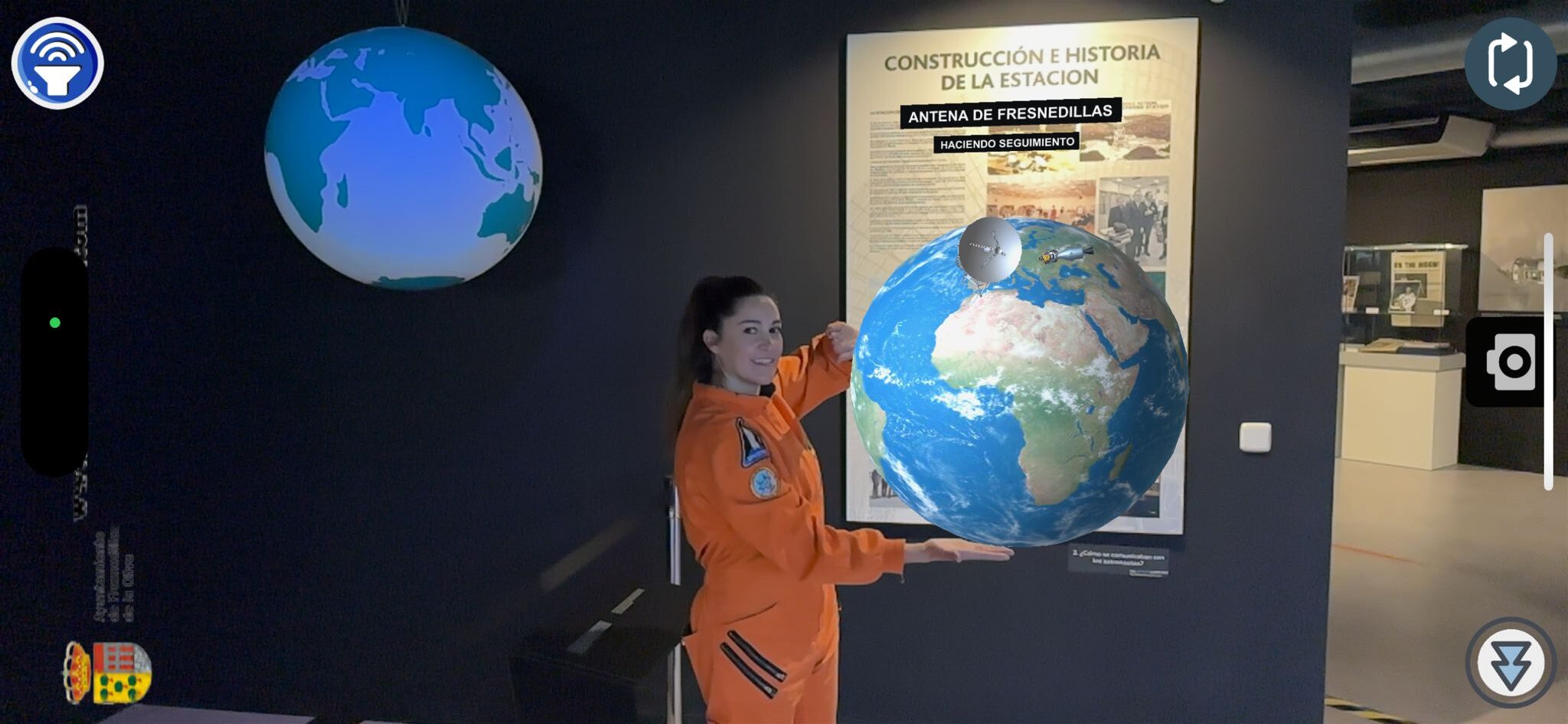
Augmented Reality on communication antennas with Astronaut LiLi in the Lunar Museum app.
Additionally, a photography option has been added, allowing visitors to take pictures of the animations within the museum and share them on social media or via email. This feature is ideal for those who want to preserve a unique and lasting memory of their visit or share their experiences with friends and family. Visitors can demonstrate that they have held the Earth in their hands, driven a lunar vehicle, or walked on the Moon alongside a real astronaut.
Finally, professional recordings accompany the animations, providing clear and concise explanations of the information presented. This immersive experience enhances the information displayed in the museum exhibits, making the visit accessible to those who do not know or may not be able to read information signs, resulting in a more inclusive experience for all audiences.
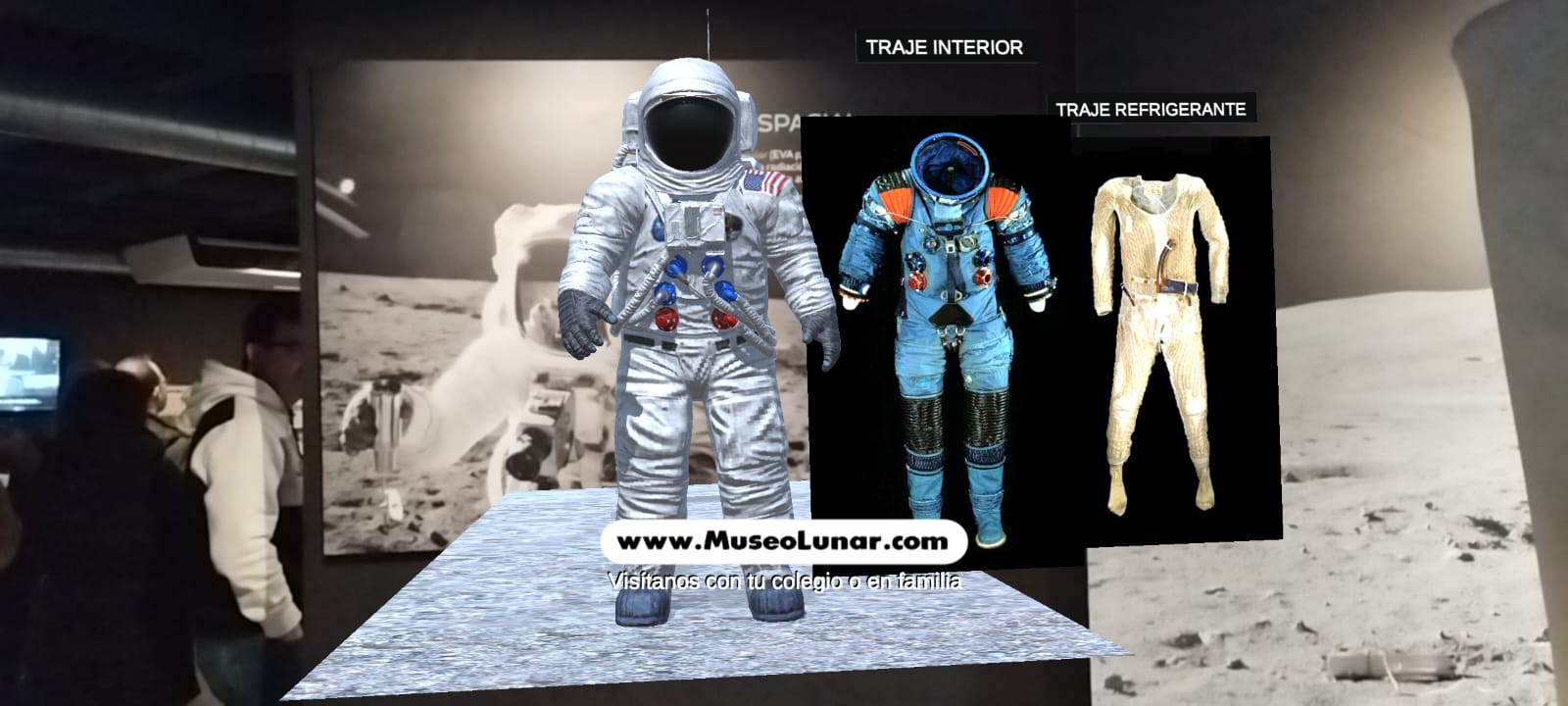
Augmented Reality on astronaut suits in the Lunar Museum app.
Lunar Museum AR App
All these improvements became effective in December 2022 and are now available to all users of the Lunar Museum AR application (iOS, Android). If you haven’t downloaded it yet, go ahead and enjoy a new way to explore the Lunar Museum! The app is available for free download on major app stores, such as Google Play and the App Store.
Once downloaded, simply follow the on-screen instructions to use it. It’s straightforward: point your mobile phone camera at the museum panels marked with AR (a red line on the floor indicates the recommended distance for a fully enjoyable experience), and you’ll see various virtual elements and animations related to them appear on the screen. You can also listen to audio explanations that provide clear and concise information.
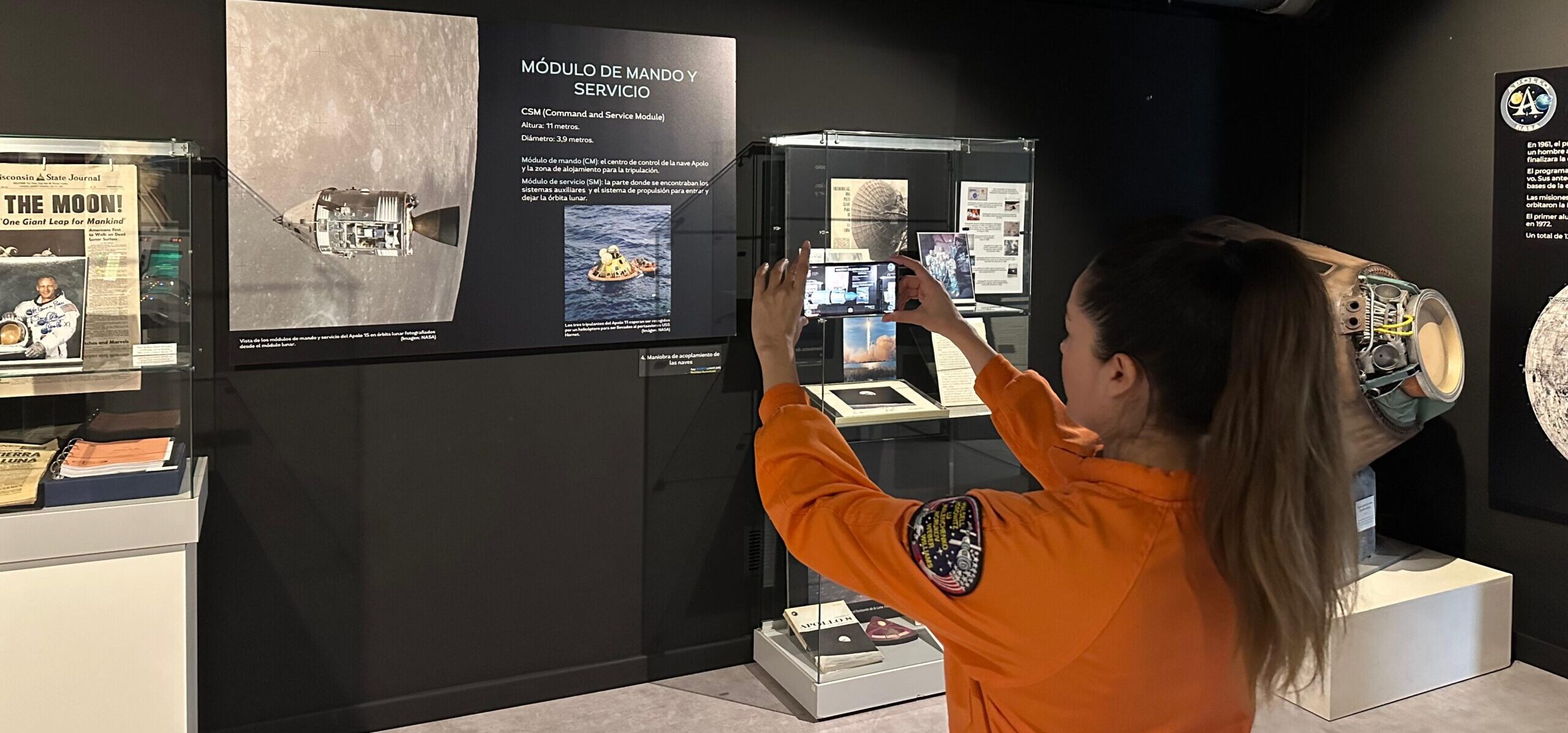
Astronaut LiLi enjoying augmented reality on the command and service module in the Lunar Museum app.
Furthermore, with the new update, you can enjoy all the before mentioned enhancements, such as the animation change and replay button or the photography feature. This allows you to re-watch animations as many times as you want and permanently preserve a memory of your visit to the Lunar Museum.
If you have an interest in science and space, visiting the Lunar Museum is a must. With the AR application, you can learn more about the Apollo program and its missions to the Moon in a broader, engaging, and fun way. The museum also offers a wide range of activities for all audiences, from guided tours and STEAM workshops for students, to activities for the general public on weekends through the Science for Families program. Don’t hesitate to visit them and discover everything the Lunar Museum has to offer!
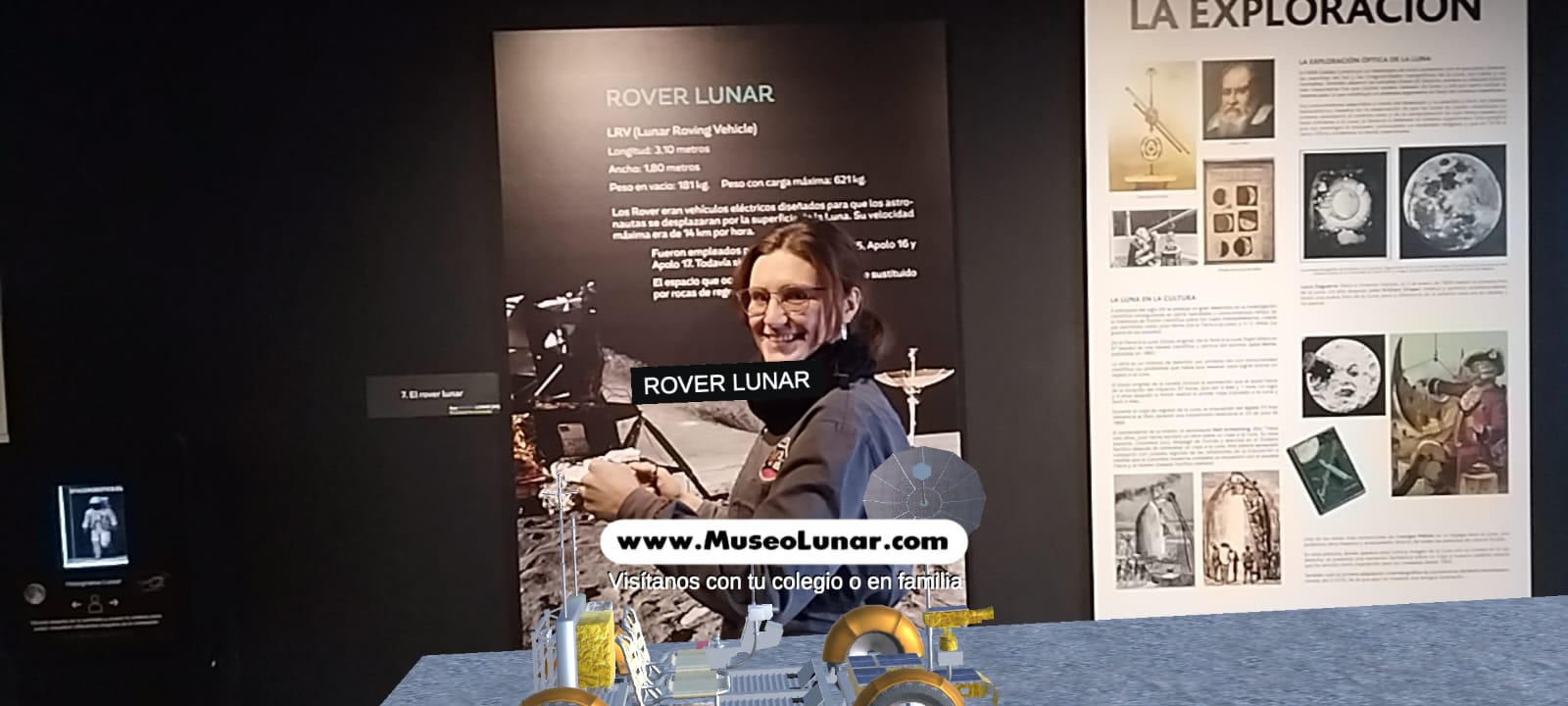
Augmented Reality on the lunar rover in the Lunar Museum app.
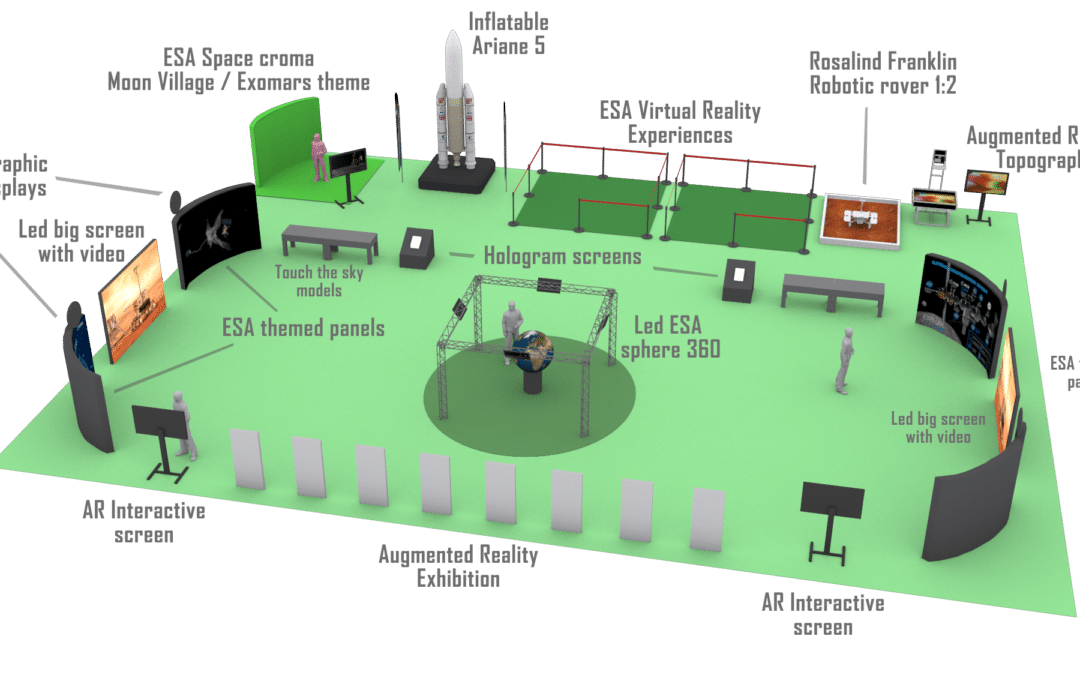
Space exhibitions for museums and events
The company Nubalo Studios S.L. is one of the world’s leading exhibition design and production companies for fairs and museums. Since our beginnings, we have worked for different space agencies and educational institutions, creating innovative and attractive exhibitions for the public.
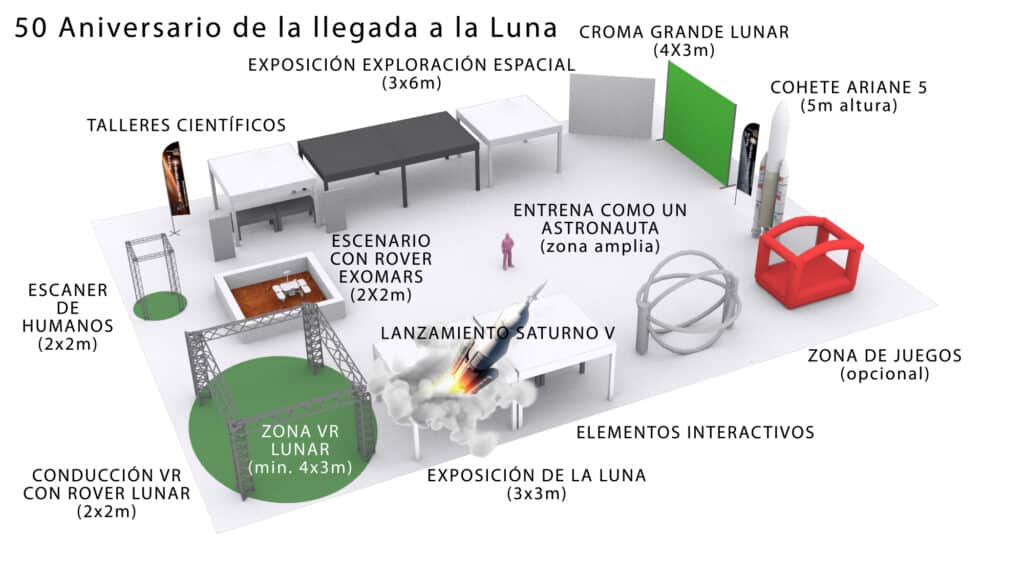
Professional team
Our team of professionals uses a wide variety of state-of-the-art technologies to carry out our projects, such as led panels, virtual reality, augmented reality, 3D models, videos, interactive modules, and holograms. These tools allow us to create unforgettable visitor experiences, making space science and technology accessible and understandable to everyone.
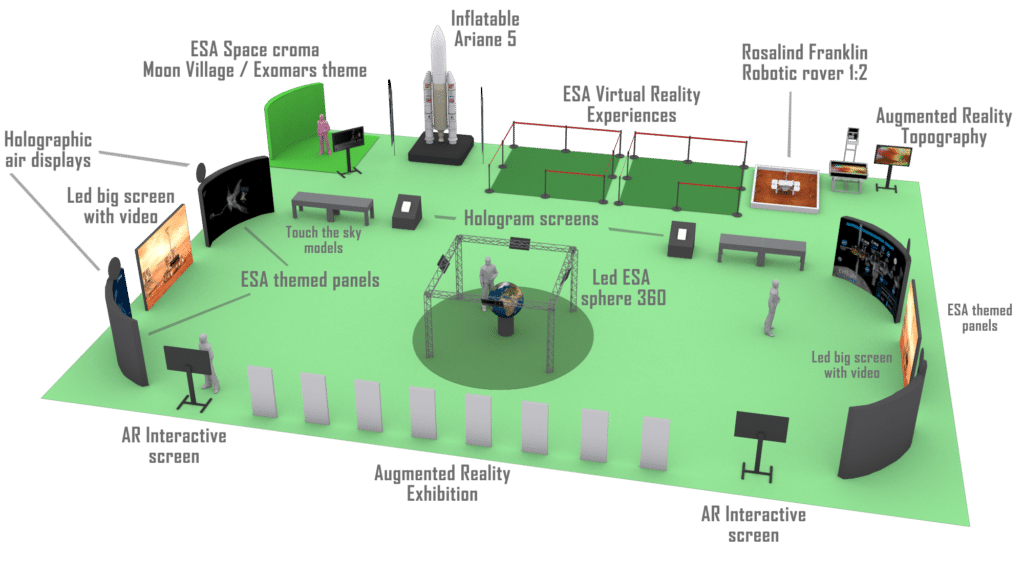
In addition, we have a wide variety of scale elements, such as rockets up to 6 meters high and planets several meters in diameter, signage, scale satellites, and robots available for exhibitions. These elements allow us to create an even more immersive and realistic experience for the visitor, making the knowledge of the space even more accessible and attractive.
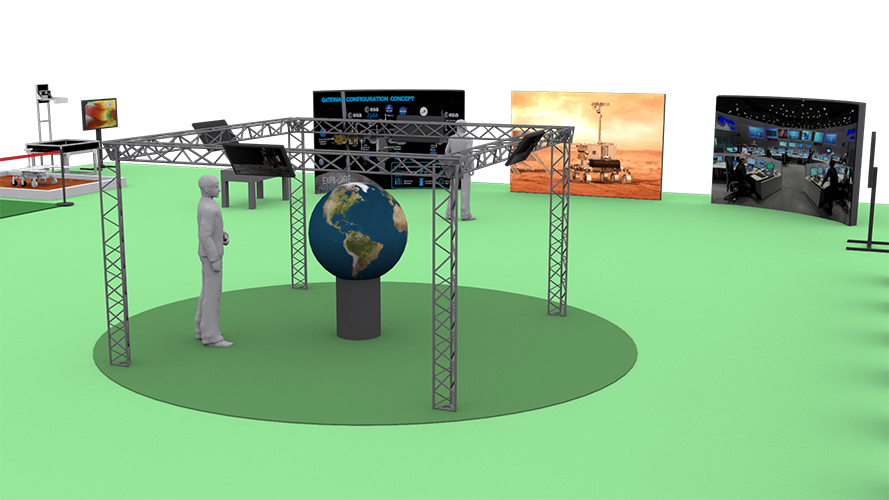
Some space exhibitions
Among our latest exhibits are “Exploring the Solar System,” an interactive exhibit that allows visitors to virtually travel through the solar system and get up close to each of the planets; and “Mission to Mars”, an exhibition that uses virtual reality to simulate a manned mission to the red planet. Both exhibitions have been a success in different museums and science centers around the world, and have been very well received by the public for their realism and detail in the representation of the elements of space.
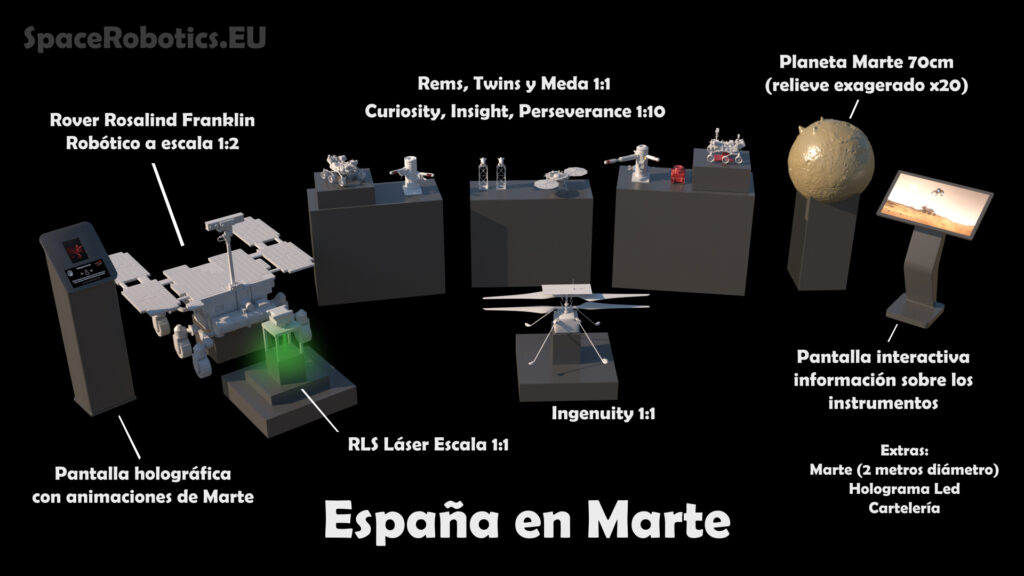
At Nubalo Studios S.L., we are constantly innovating and looking for new ways to make knowledge of space accessible and attractive to the public. We offer our services for fairs and museums as well as scientific or themed business events. If you are interested in contracting our services, do not hesitate to contact us. We will be happy to help you create a unique and educational experience for your visitors or attendees.
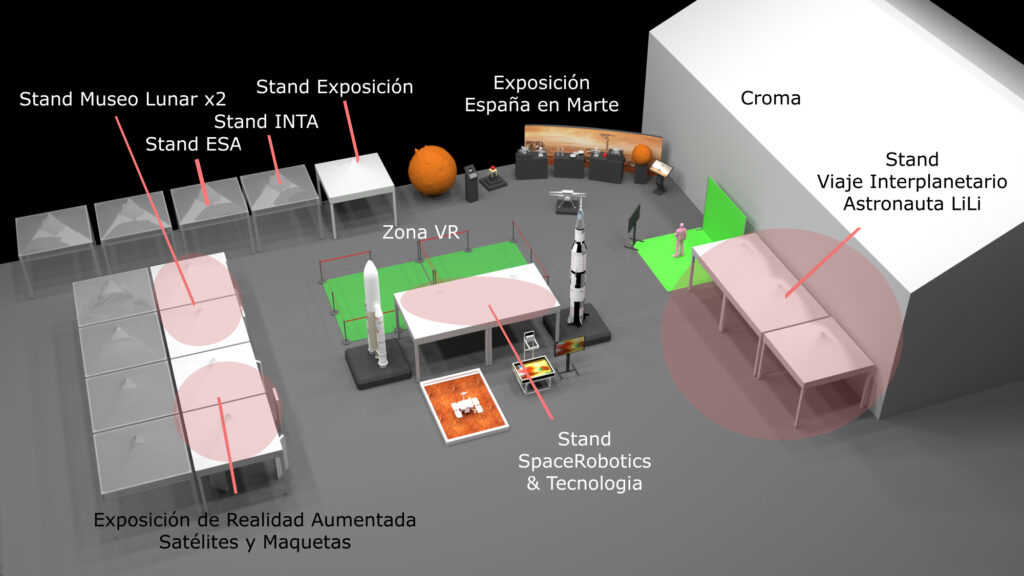
Some sample designs for centers (static exhibitions):
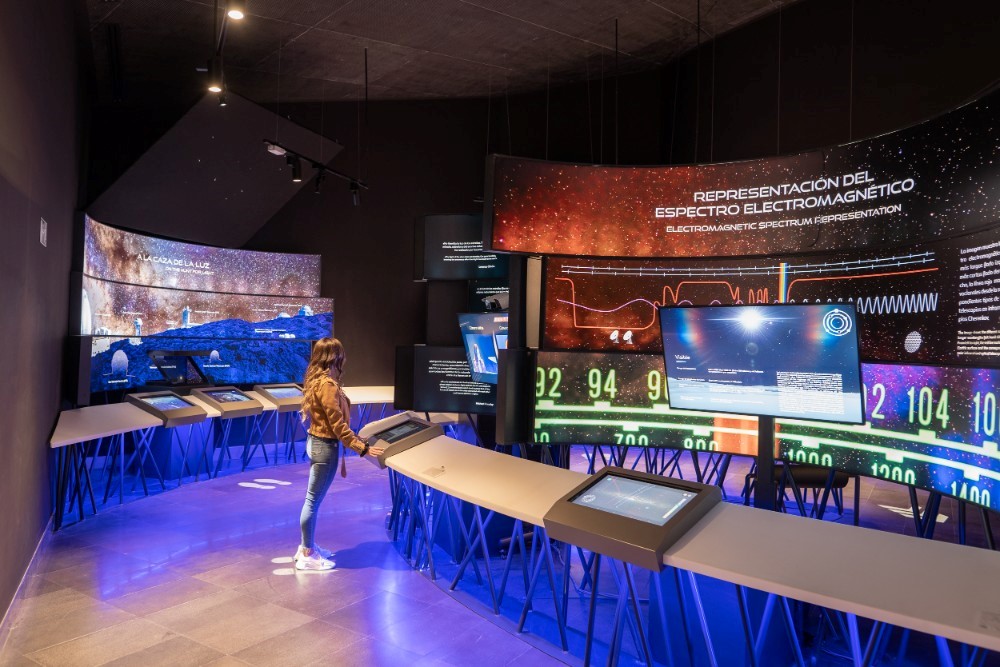
Space visitor center open to the public
The Visitor Center of the Roque de los Muchachos Observatory (ORM) was inaugurated in December 2021 with great expectations and promised to be a modern and technological space where visitors could learn about astronomy and cosmology, and discover the telescopes and the history of ORM in an entertaining and friendly way. As part of the SpaceRobotics.EU team that developed the scientific-technological content of the center, we decided to visit the place in September 2022 to check that our work had been applied correctly.
Exploring the Universe
Upon arriving at the center, we found an impressive and modern place, full of light and with careful decoration. After passing through the entrance lobby, we headed towards the first module, dedicated to the history of ORM and the construction of the telescopes. There we found a series of informative panels and several technological devices, such as tablets and augmented reality viewers, which allowed us to learn more about the history of the observatory and see how telescopes are built from the inside.
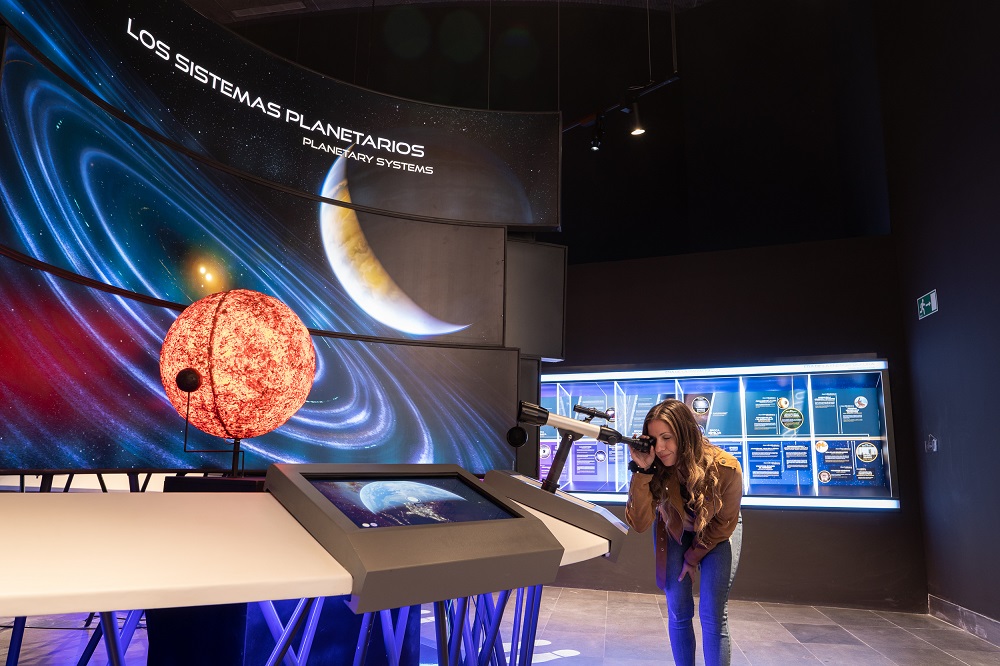
The next module was dedicated to the physics of light and the interactions between light and matter. There were several interactive stations where visitors could experiment with the electromagnetic spectrum and learn how different types of light affect matter. There was also an HD projection that showed how light propagates in space and how it can be used to study celestial objects.

The third module was dedicated to stellar evolution and cosmology and contained several holograms that showed the formation and life cycle of stars, as well as the structure and origin of the universe. There was also a virtual reality station where visitors could immerse themselves in a simulation of the universe and see how galaxies and stars form.
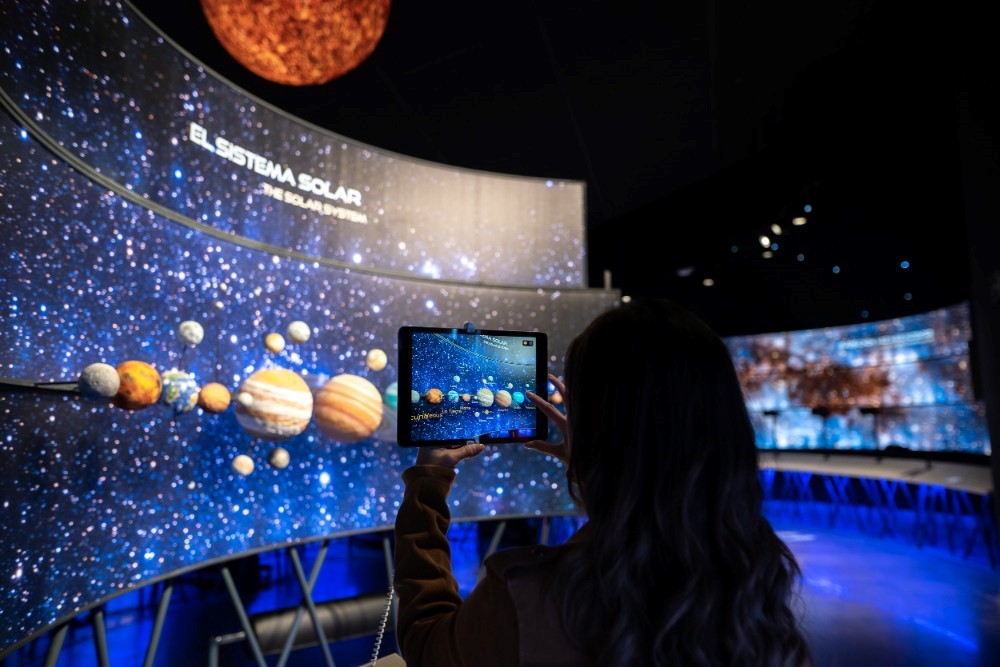
Overall, we were very satisfied with what we saw at the ORM Visitor Center. The content that we had created had been effectively applied and had been integrated into a series of interesting and fun technological devices that made learning more enjoyable. In addition, the center had a tranquil and serene atmosphere that invited visitors to enjoy the space and learn about science and technology in a relaxed way.
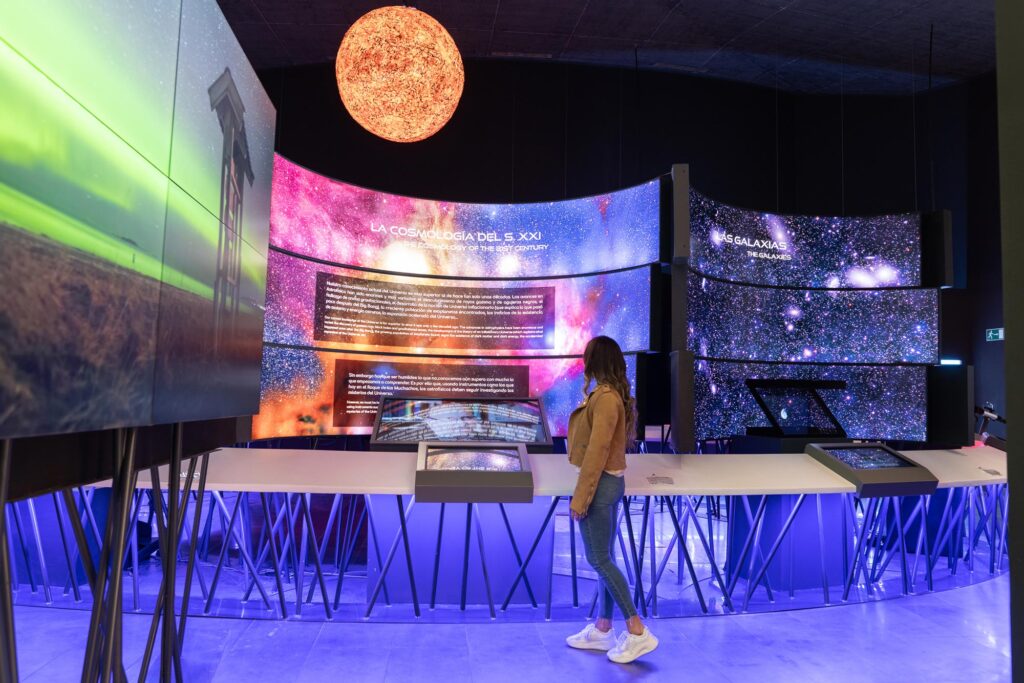
Our visit to the ORM visitor center and observatory was a very interesting experience. We were very happy to see how the content we had created had been effectively applied and how the center had been transformed into an attractive place to learn about science and technology. In addition, we were able to enjoy a splendid day in a beautiful place and learn more about astronomical observation and the ORM. We will return to this amazing place in the future and continue to explore and enjoy science and technology.
Visitor Statistics this first Year
The Cabildo de La Palma has shown its satisfaction after the Roque de Los Muchachos Visitor Center received no fewer than 31,058 visitors (December 2021 to December 2022). “A figure that demonstrates the importance of this infrastructure for tourists visiting the Beautiful Island”.
The Roque de Los Muchachos Visitor Center is a work carried out through an investment of around 6 million euros from the FDCAN and has all areas of the building covered with basalt, including the roofs, the turns of floor beams, and false ceilings in order to create a very integrated effect in the volcanic environment where it is located. In addition, inside the facility, there is a first welcome room in which a general presentation of the IAC, the observatory, and the telescopes that operate there is included.
The building also has, it says, three exhibition halls: the first of them, called ‘Canarias’, a window to the universe, where the unique conditions offered by the archipelago, and especially La Palma and the Roque de los Muchachos for astronomical observation, is explained; the second, called ‘Exploring the universe’, in which the current state of knowledge we have about the Universe is shown in a synthetic way; and the third called ‘Back to Earth’, in which the natural framework in which the Observatory is located is shown.
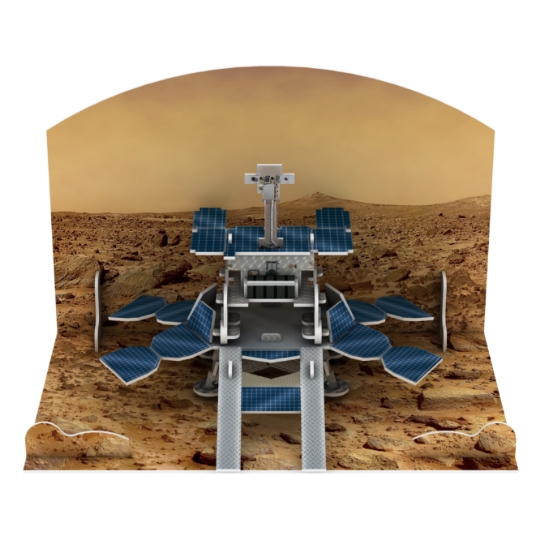
Design and creation of personalized 3D puzzles
In order to stay at the forefront and offer our customers unique and innovative products, at Nubalo Studios S.L. we have decided to design and create a 3D puzzle of the Rosalind Franklin rover, which will be heading to Mars. We are constantly looking for ways to improve our products and surprise our customers with something new and different.
3D Puzzle
This puzzle is specifically designed for the Astronaut LiLi’s STEAM education project and for primary school children who want to improve their hand skills and learn more about space exploration. In addition, the puzzle is made with high quality materials and is designed to be durable and resistant, so it can withstand play and daily use.
The puzzle design process has been long and complex, as we have had to take into account many different factors to ensure that the final result is perfect. We have worked closely with design experts and space exploration project experts to ensure that the rover meets real specifications and is faithful to the ship currently in development.
In addition, we have wanted to make sure that the puzzle is attractive and fun for children, so we have included many interesting details and interactive features. For example, the puzzle includes a camera and radar that can be moved and rotated to explore the terrain and send signals back to Earth. There is also a control panel and a touchscreen display that shows important information about the mission and the operation of the rover.
In summary, at Nubalo Studios S.L. we are very proud of the work we have done in designing and creating the 3D puzzle of the Rosalind Franklin rover. We hope that this product will be a success among children and help them learn more about space exploration and develop their hand skills. We are looking forward to seeing children enjoying the puzzle and exploring space with the Rosalind Franklin rover.
Rosalind Franklin Mission
The European Space Agency’s Rosalind Franklin mission is a Mars exploration project planned for launch in 2028. Originally, this mission was to be a collaboration with Russia, but due to the cancellation of the collaboration this year, the European Space Agency will have to carry out the mission on its own and launch the rover with its own rocket.
The Rosalind Franklin rover is an exploration vehicle designed to travel across the surface of Mars and carry out various tasks such as collecting soil and rock samples for analysis and sending valuable information back to Earth. It is also equipped with a number of cameras and other scientific instruments to study the planet and gain more information about its atmosphere, climate, and geology.
One of the main innovations of this mission is the landing module, which has been specially designed for this occasion and will be responsible for positioning the rover on the surface of Mars safely and accurately. This module includes a propulsion system that will allow it to land anywhere on the planet and a damping system to protect the rover during landing.
In summary, the European Space Agency’s Rosalind Franklin mission is a Mars exploration project planned for launch in 2028 that includes the launch of the Rosalind Franklin rover with its own rocket and the development of a landing module specially designed for this occasion. This mission is a unique opportunity to obtain more information about the red planet and advance our knowledge of space and our solar system.
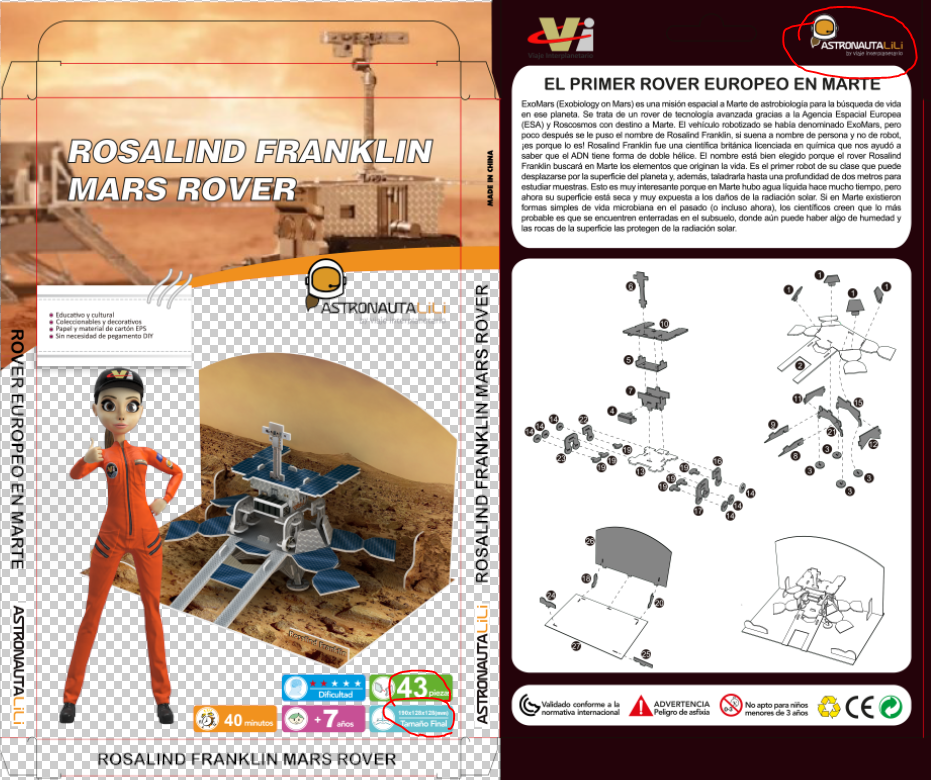
The Rosalind Franklin mission
The Rosalind Franklin mission of the European Space Agency is a Mars exploration project scheduled to launch in 2028. Originally, this mission was going to be a collaboration with Russia, but due to the cancellation of the collaboration this year, the European Space Agency will have to carry out the mission on its own and launch the rover with its own rocket.
The Rosalind Franklin rover is an exploration vehicle designed to travel across the surface of Mars and perform various tasks, such as collecting soil and rock samples for analysis and sending valuable information back to Earth. It is also equipped with a series of cameras and other scientific instruments to study the planet and gather more information about its atmosphere, climate, and geology.
One of the main innovations of this mission is the landing module, which has been specially designed for this occasion and will be responsible for safely and accurately positioning the rover on the surface of Mars. This module includes a propulsion system that will allow it to land anywhere on the planet and a damping system to protect the rover during landing.
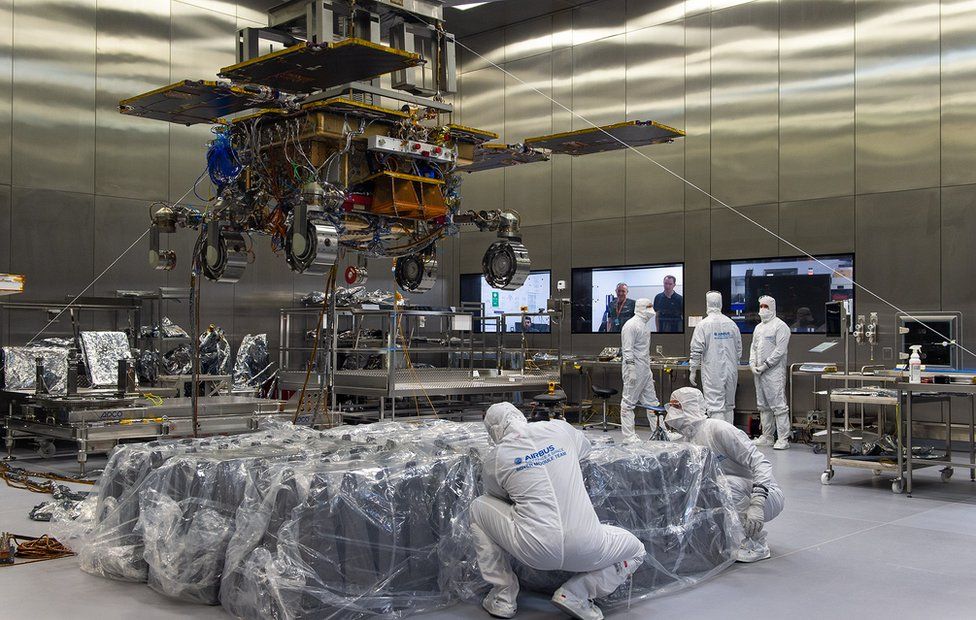
Material STEAM and Marketing for Your Products
Are you looking for a creative and original way to promote your company or project? Do you want to offer your customers a unique and fun product? At Nubalo Studios S.L., we offer the option of creating customized 3D puzzles for businesses and projects.
Our 3D puzzles are ideal for promoting STEAM educational projects and for use as merchandise. They are attractive and fun for all ages and can help improve users’ manual skills and logical thinking. In addition, they are made with high-quality materials and are durable, and able to withstand play and daily use.
If you are interested in creating a customized 3D puzzle for your company or project, do not hesitate to contact us. We will be happy to work with you to design the perfect puzzle that meets your needs and goals.
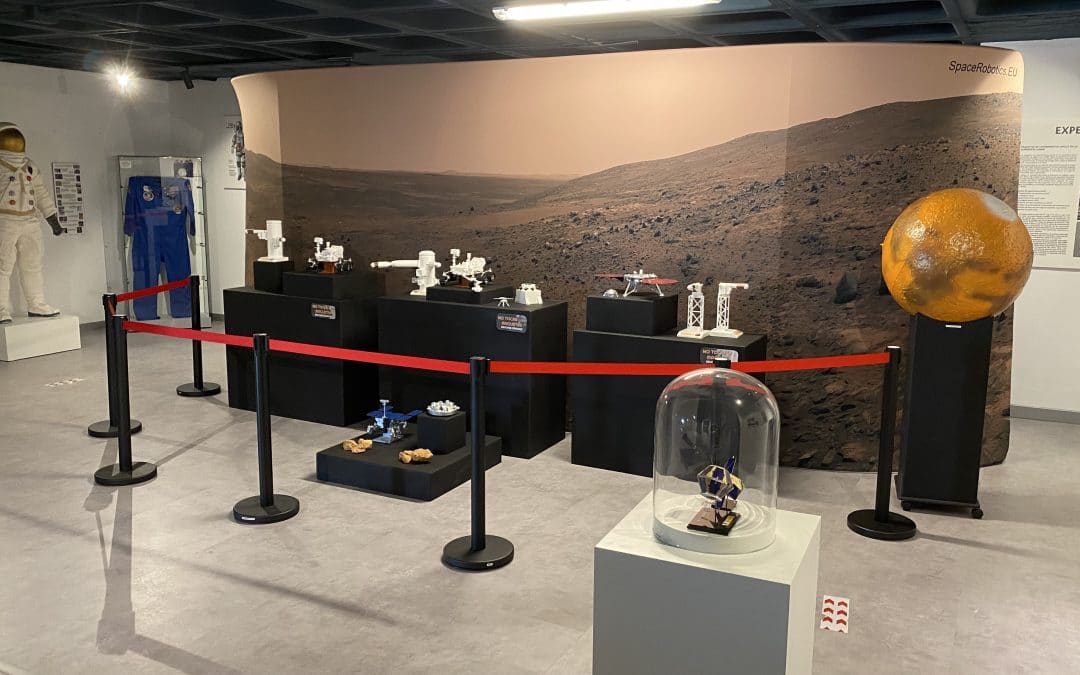
Spain in Mars – Brand new exhibition
Touch screens, holograms, and scaled models to learn about Spanish participation in the exploration of our closest planetary neighbor.
read more…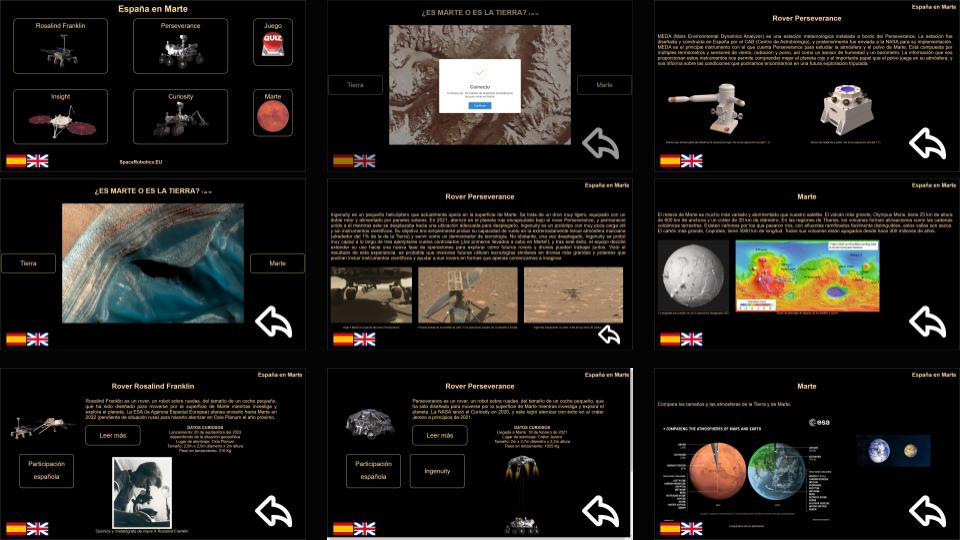
New interactive software for museums
Interactive modules are a very useful tool to improve the visitor experience in museums and other cultural institutions. At Nubalo Studios S.L., we have developed a series of software for interactive modules that have been used in different museums and exhibitions. One of our latest projects has been the development of an interactive screen software for the “Spain in Mars” exhibition, which is currently at the Lunar Museum.
This software is designed to enhance the visitor experience through interactivity and immersion in the content of the exhibition. It includes a series of games and interactive activities that allow the visitor to learn about the history and science behind the exploration of the red planet. In addition, the software is designed to adapt to different levels of knowledge and ages, making it accessible to all visitors.

As for the user interface technologies we use, we have opted for intuitive and easy-to-use technologies. For example, we use touch screens and gestures so that the visitor can interact with the software in a natural and simple way. We have also integrated elements of augmented and virtual reality in some of the software activities, which allows the visitor to experience the content of the exhibition in a more immersive way.
Another important aspect is accessibility. We have ensured that our software is accessible to all visitors, regardless of their level of skill or disability. This includes the integration of high-contrast options and text-to-speech for those with visual impairments, as well as the option to adjust the size of the text and interface to meet the individual needs of each user.
In addition to these features, our software also includes a tracking system that records all user movements and actions over time. This allows us to create statistics on software usage and helps us improve the visitor experience in the future.
Finally, it is important to mention that the software is visually designed in an attractive way, with high-quality graphics and animations and sound and music effects to further enhance the visitor’s immersion in the content of the exhibition.
Our interactive screen software for the “Spain in Mars” exhibition is a very useful tool to improve the visitor experience at the Lunar Museum. Thanks to its interactivity, attractive design, and accessibility, visitors can learn about the history and science of the exploration of the red planet in an enjoyable and fun way. In addition, the tracking system allows us to collect statistics on software usage and improve the visitor experience in the future.
Interactive screens
Interactive screens are a very useful tool for creating interactive modules in museums and other cultural institutions. These screens can be used to display multimedia content, such as images, videos, maps, and other information. Some interactive screens also allow direct user interaction, such as using touch sensors or integrating applications and games.
Interactive screens are available in different sizes and can be used in a variety of environments. Some screens are larger and suitable for areas with high foot traffic, while others are smaller and can be used in smaller areas. In addition, there are interactive screens that work with different operating systems, such as Android, Windows, and Linux, which allows for greater flexibility in choosing the right screen for each project.
Interactive screens are an excellent choice for creating interactive modules in museums and other cultural institutions. They offer a wealth of multimedia content and allow for user interaction, increasing audience participation and engagement. In addition, they are available in various sizes and operating systems, allowing for greater flexibility in their use.
